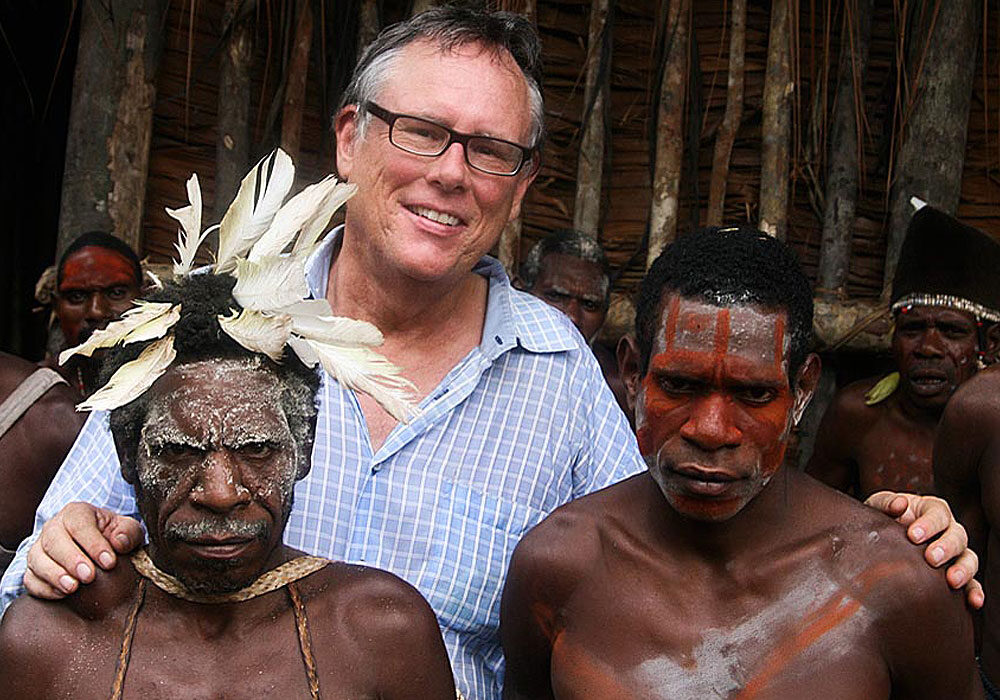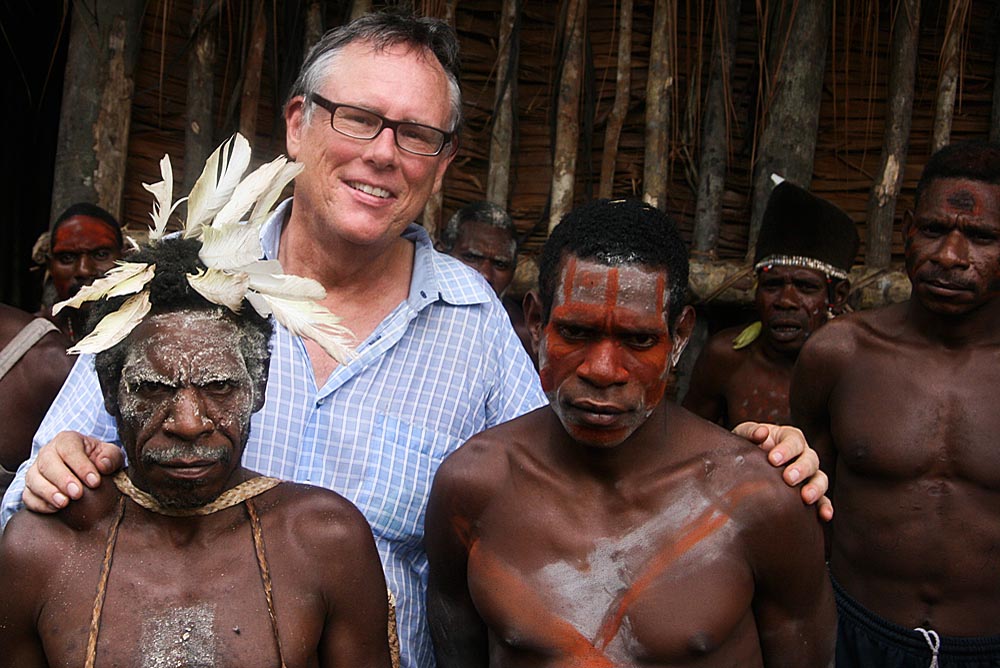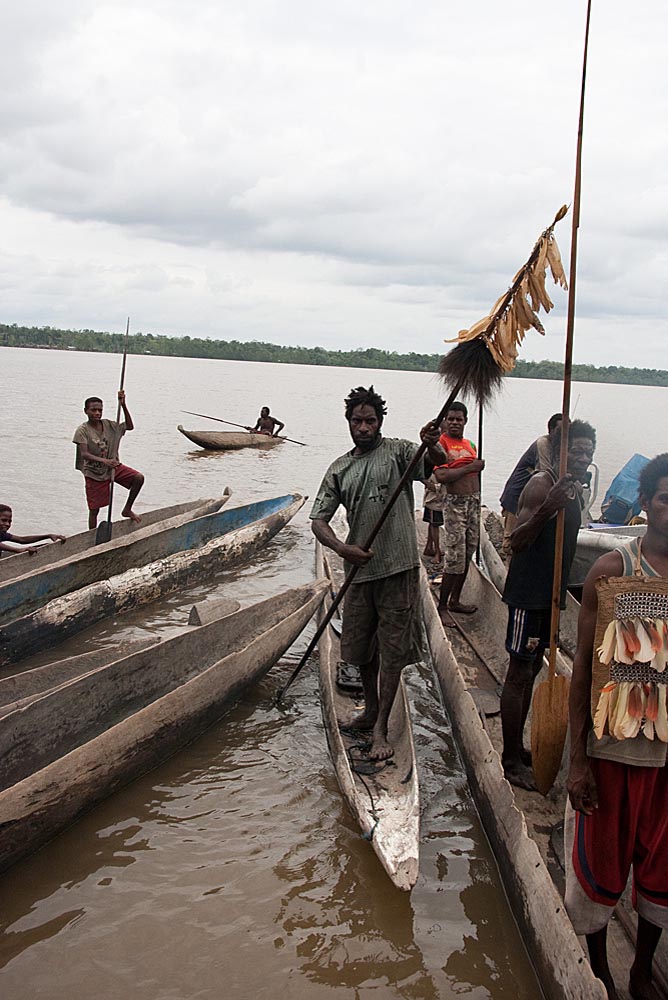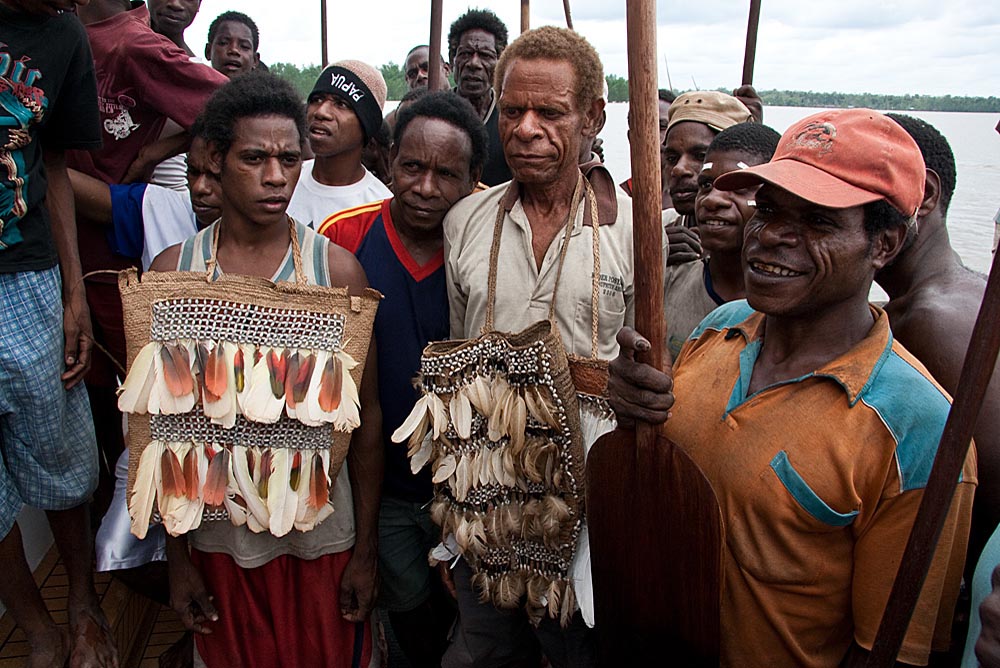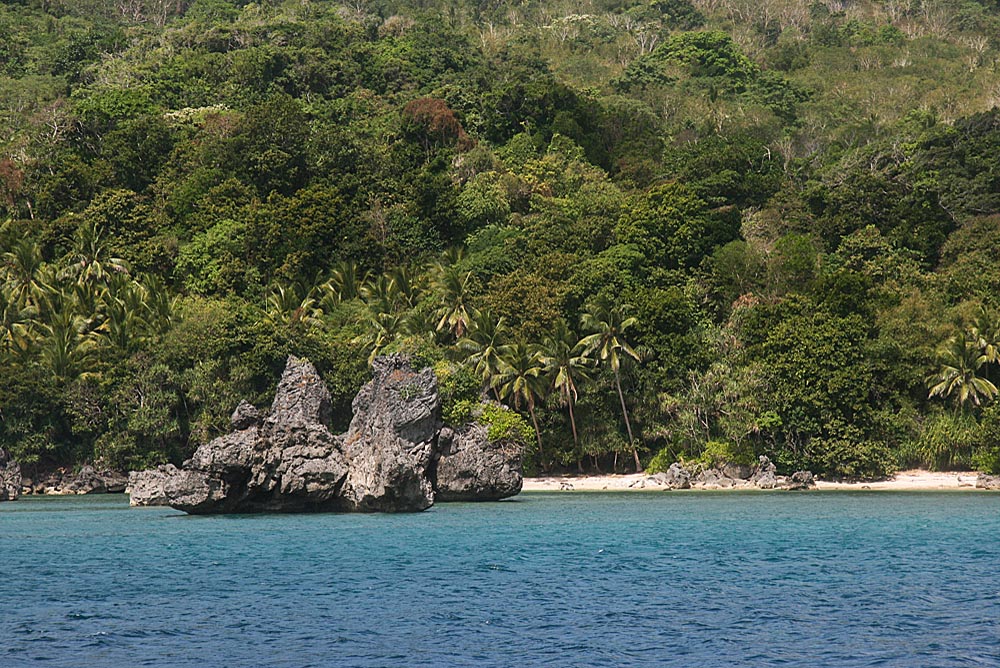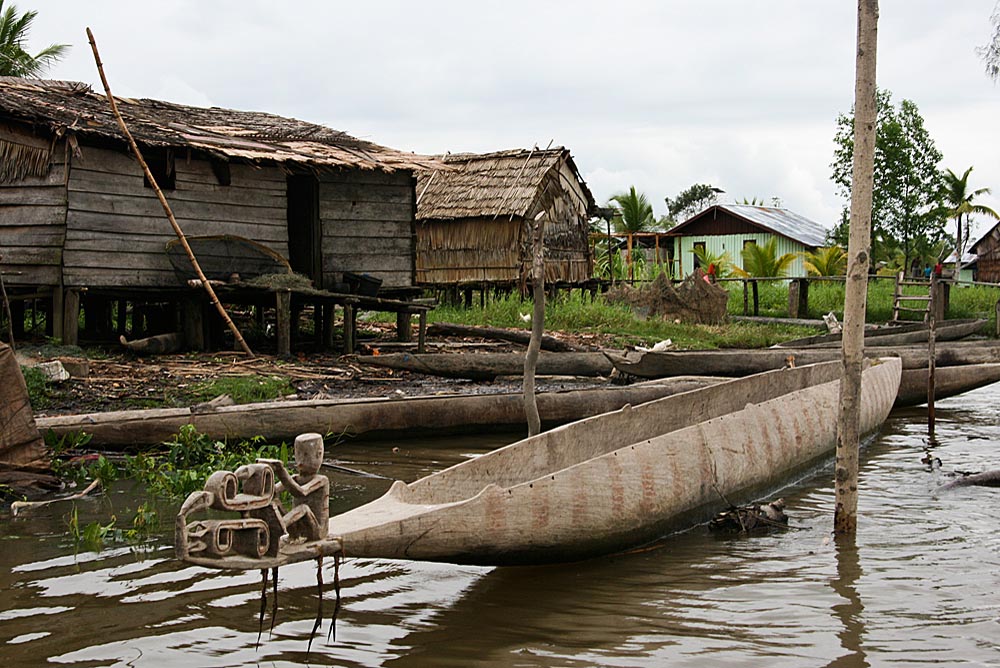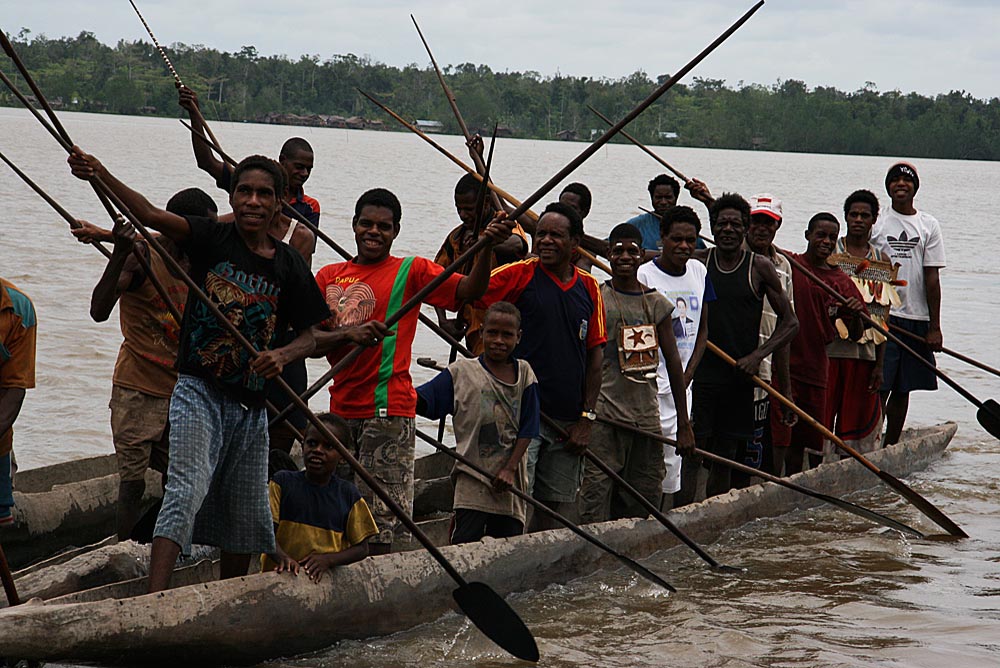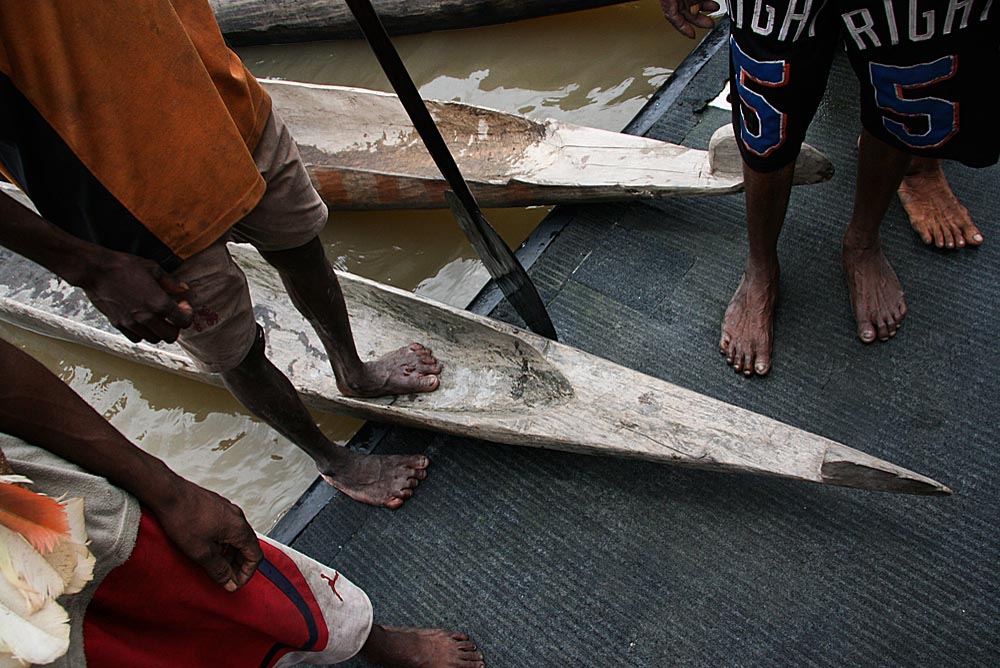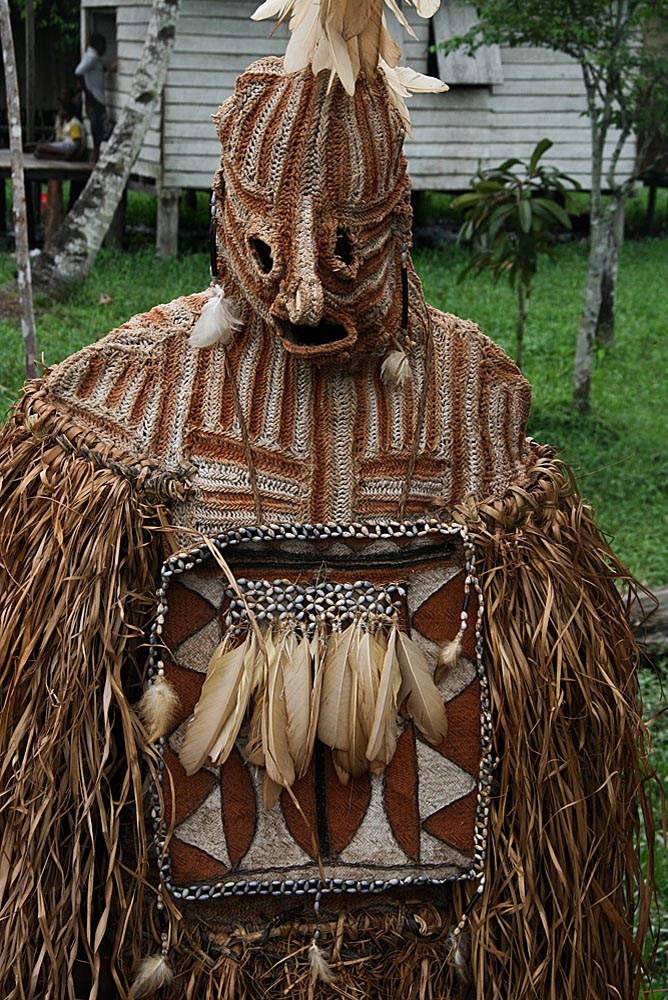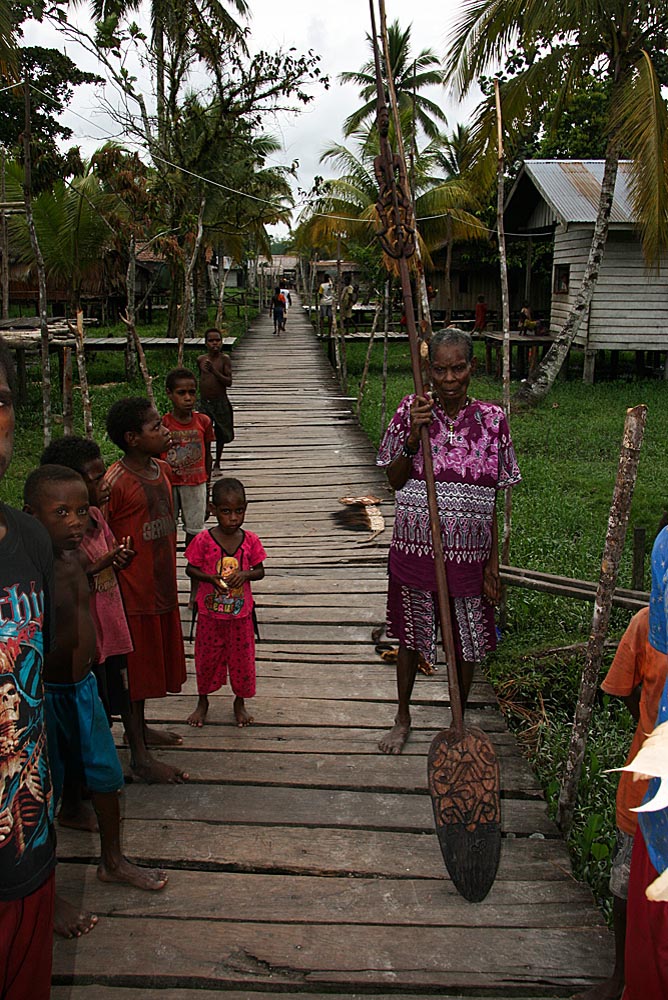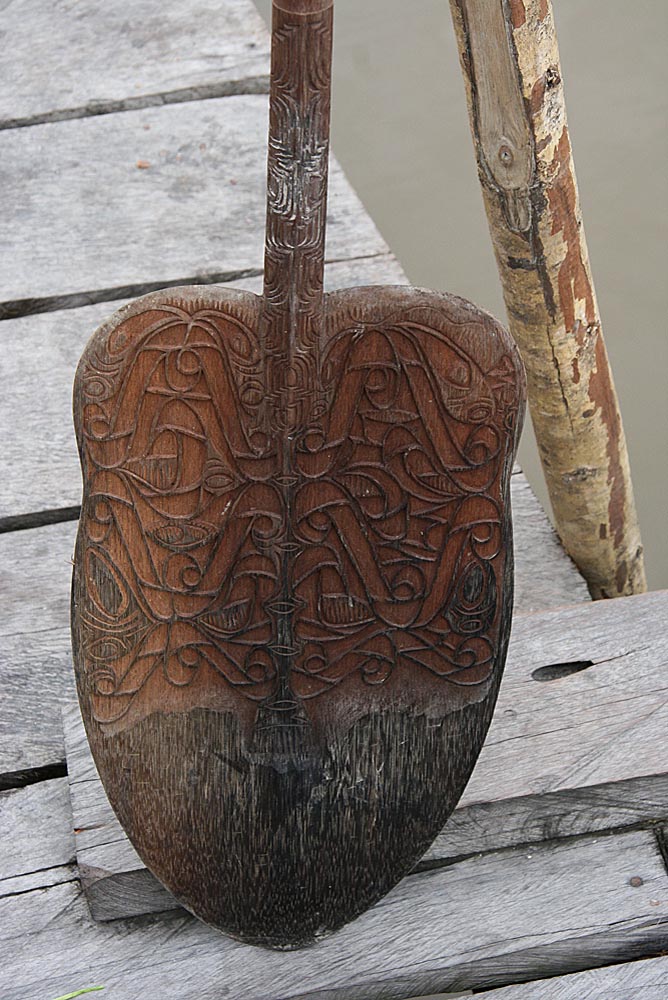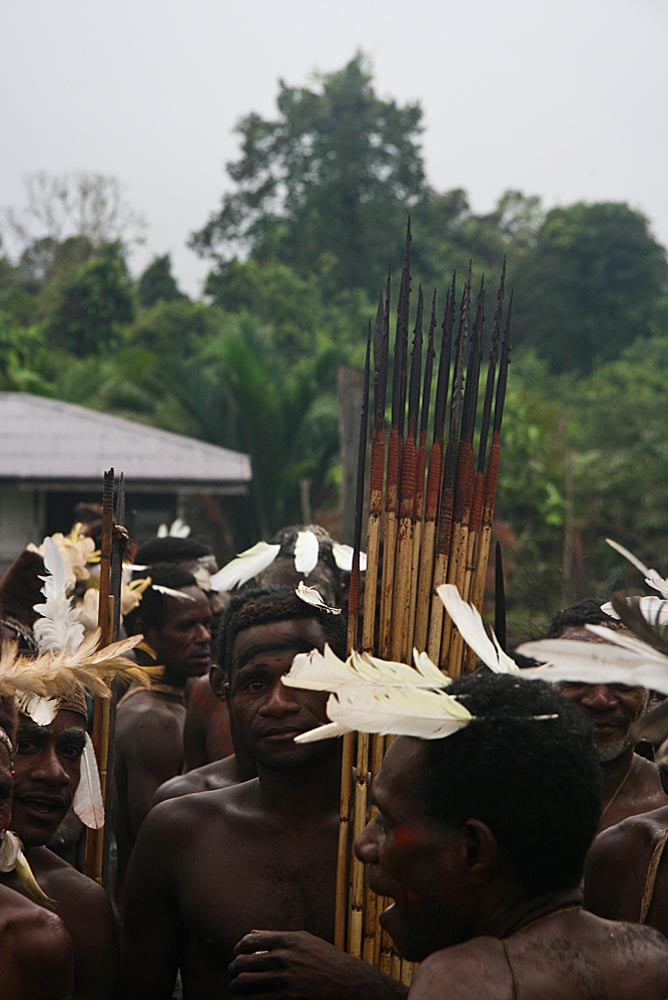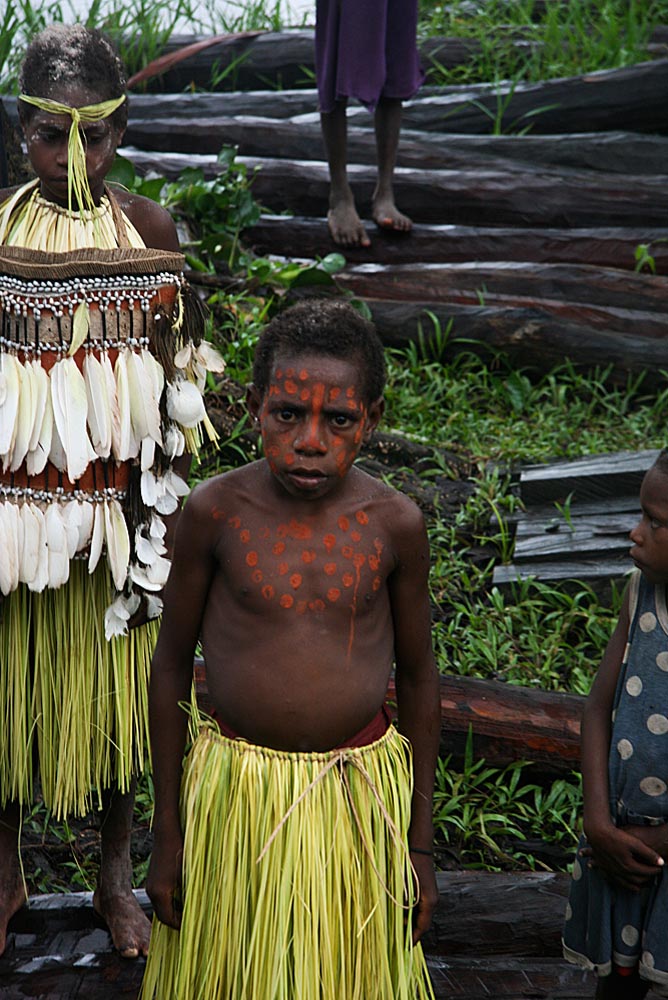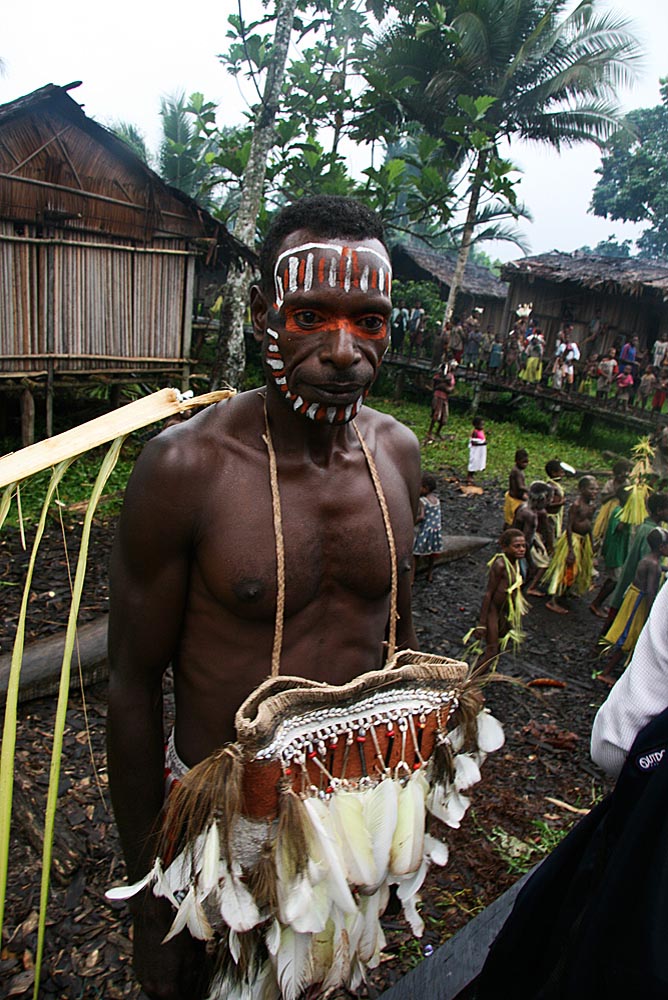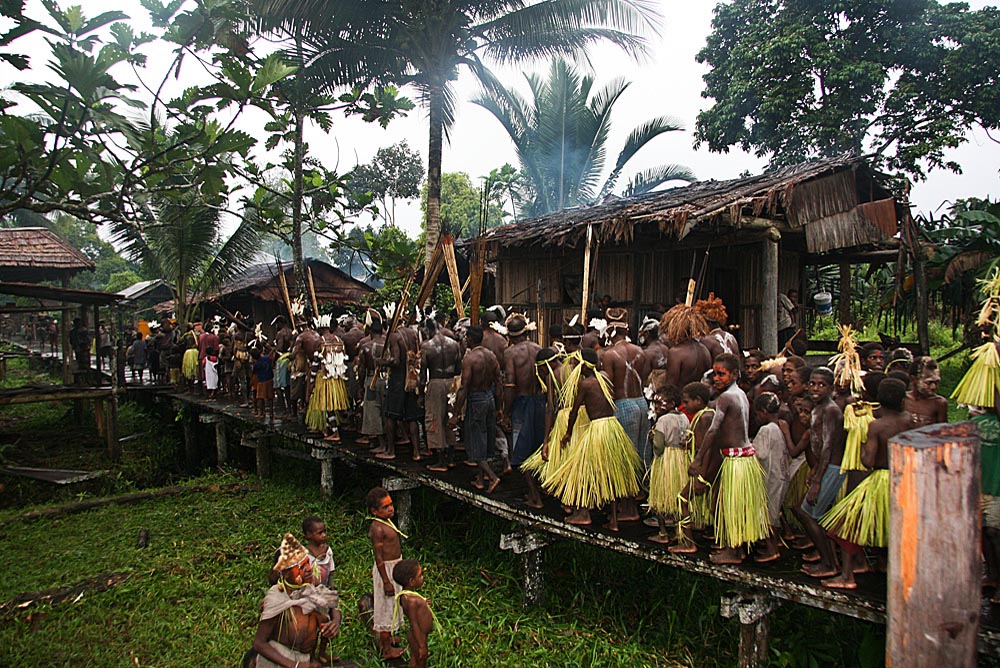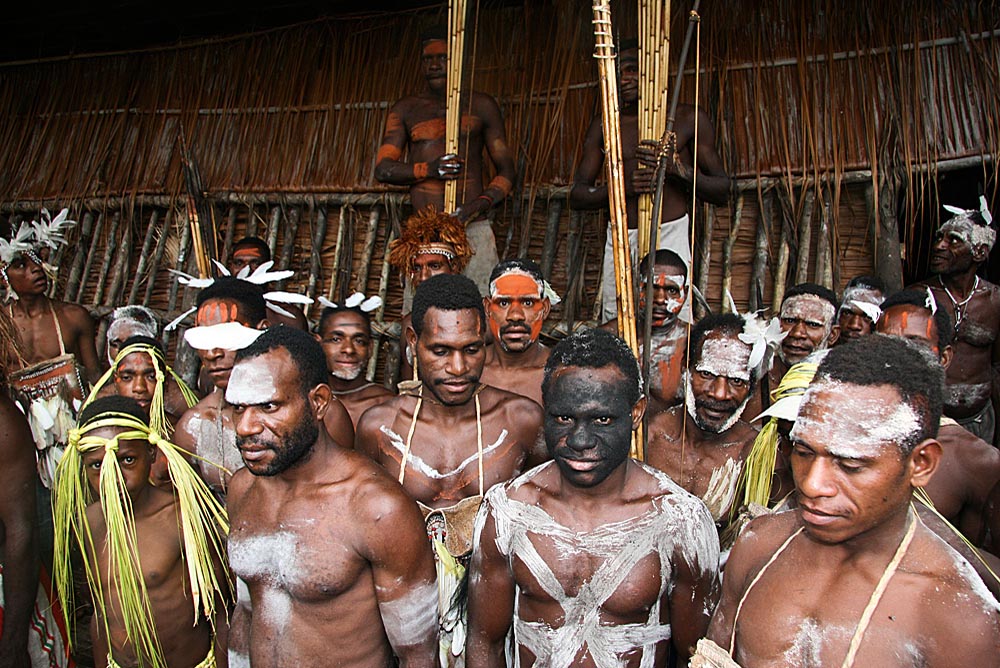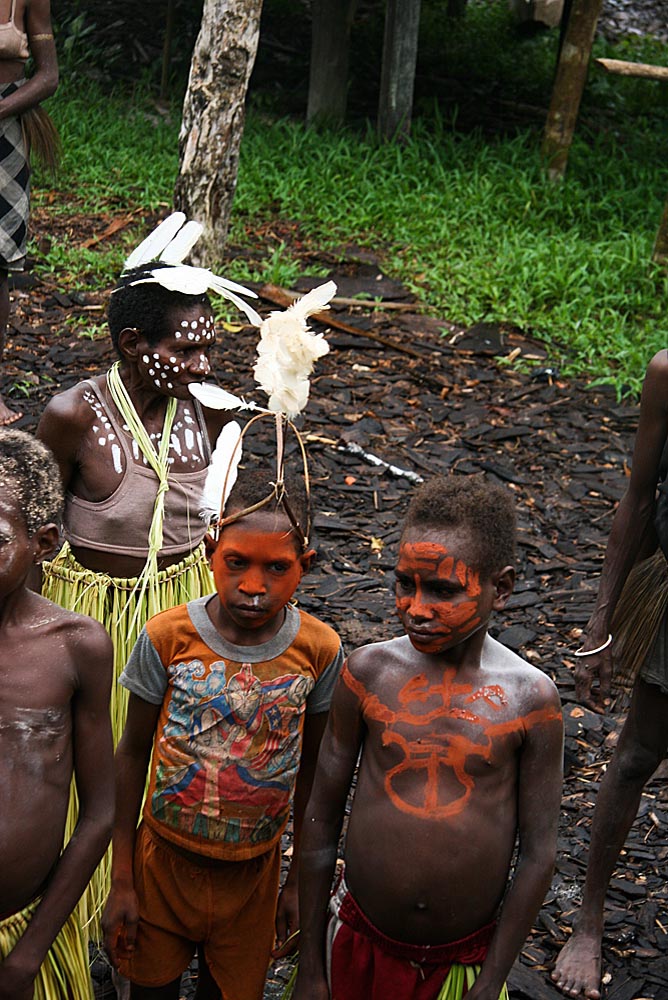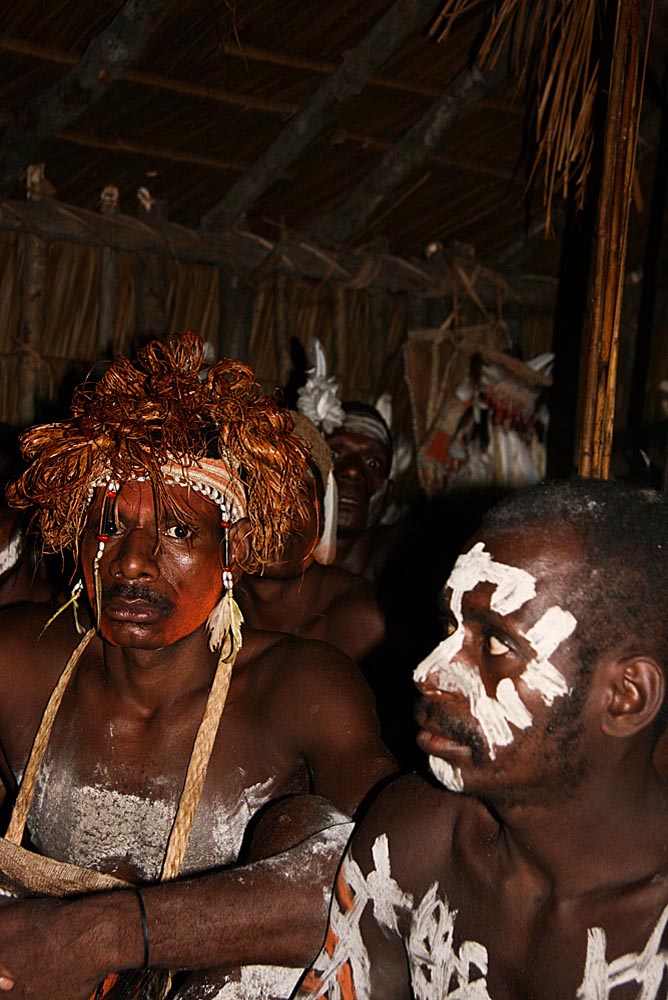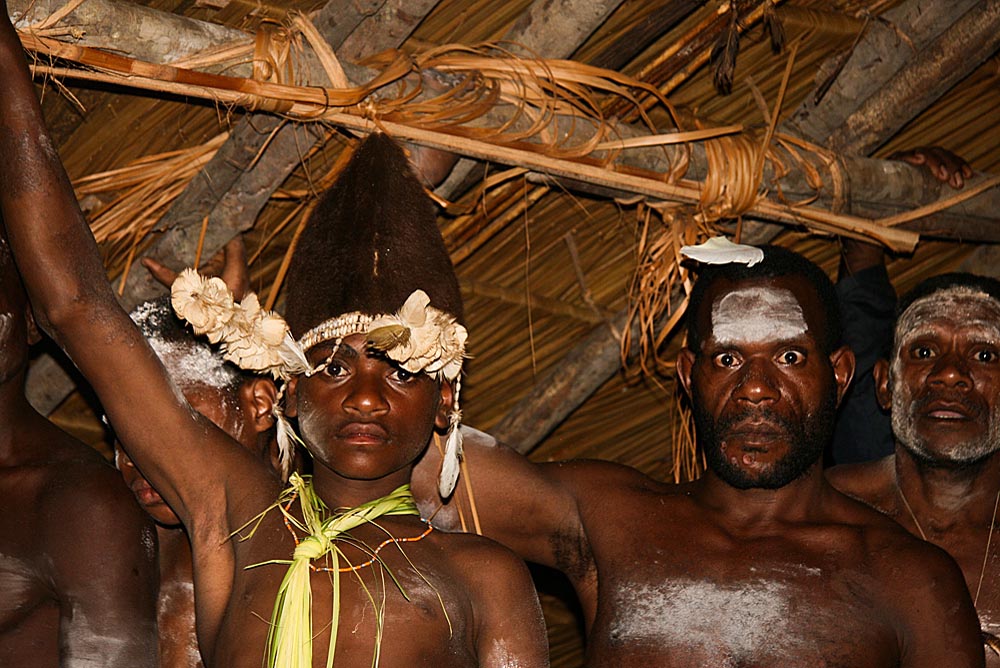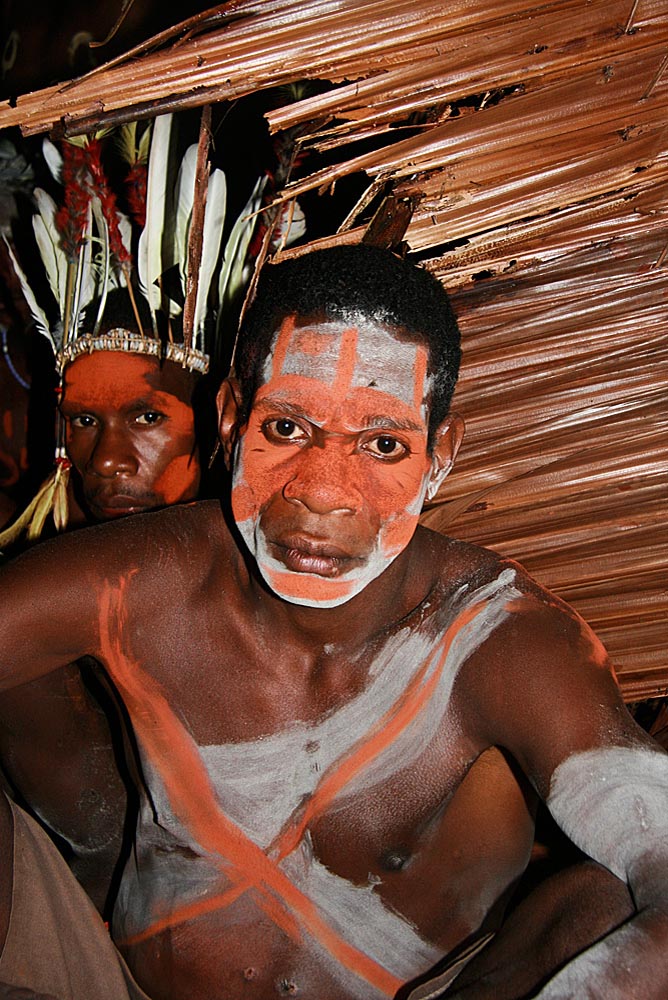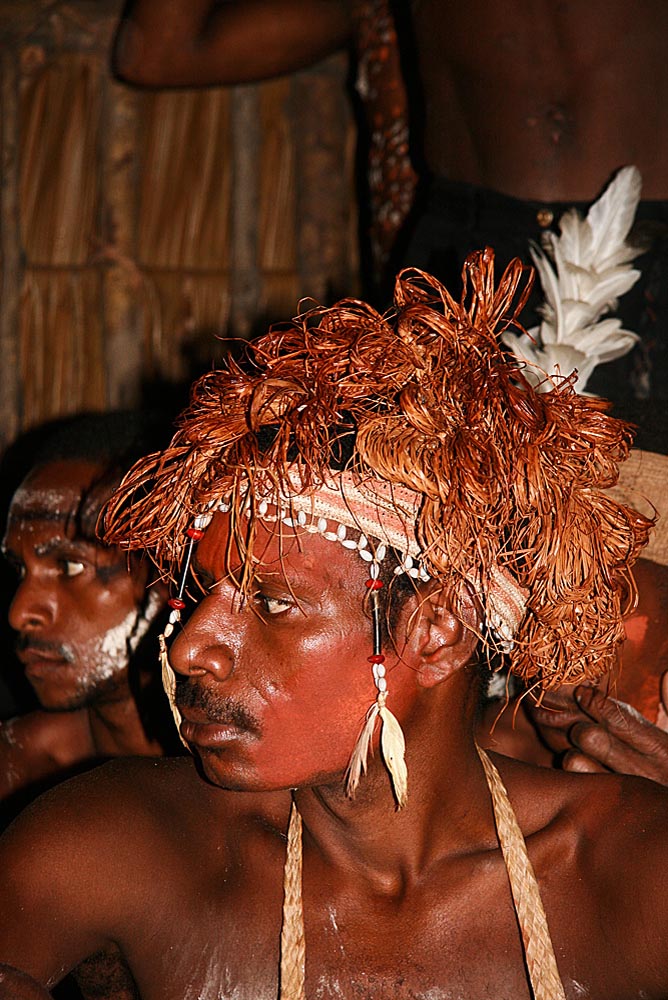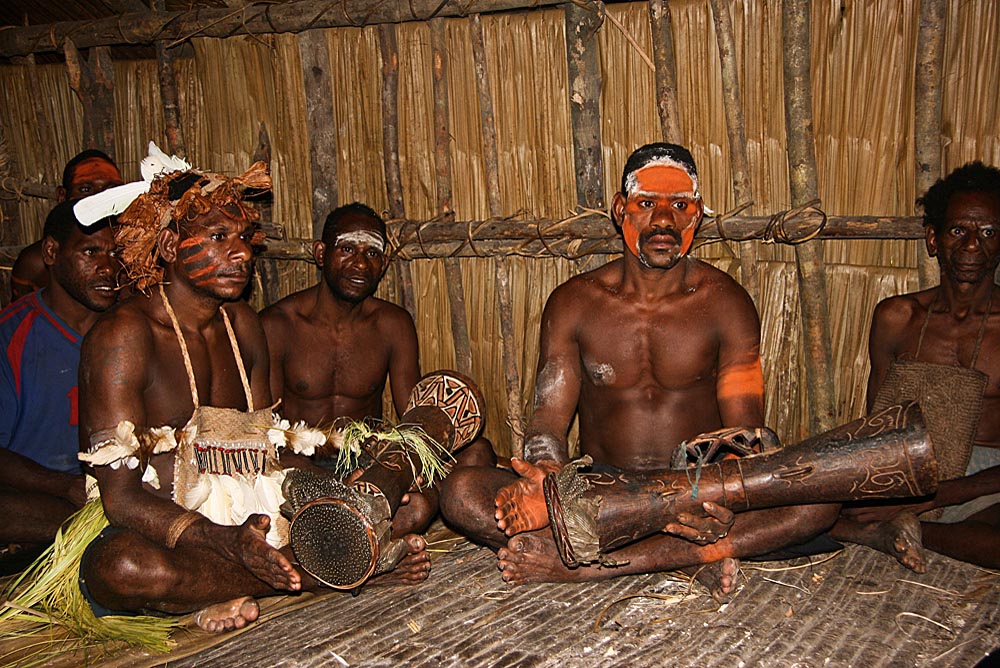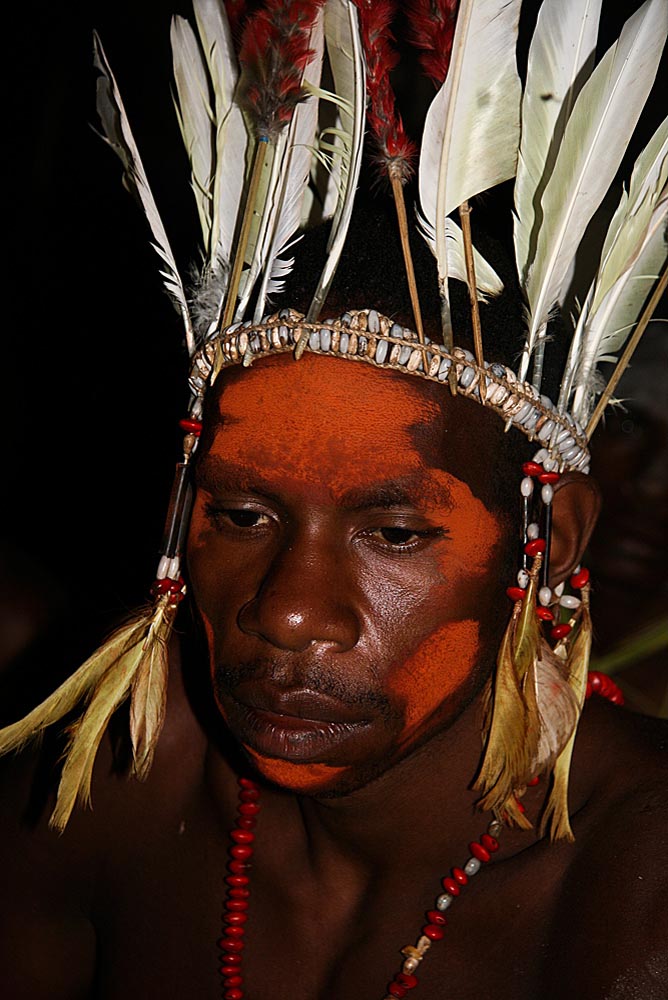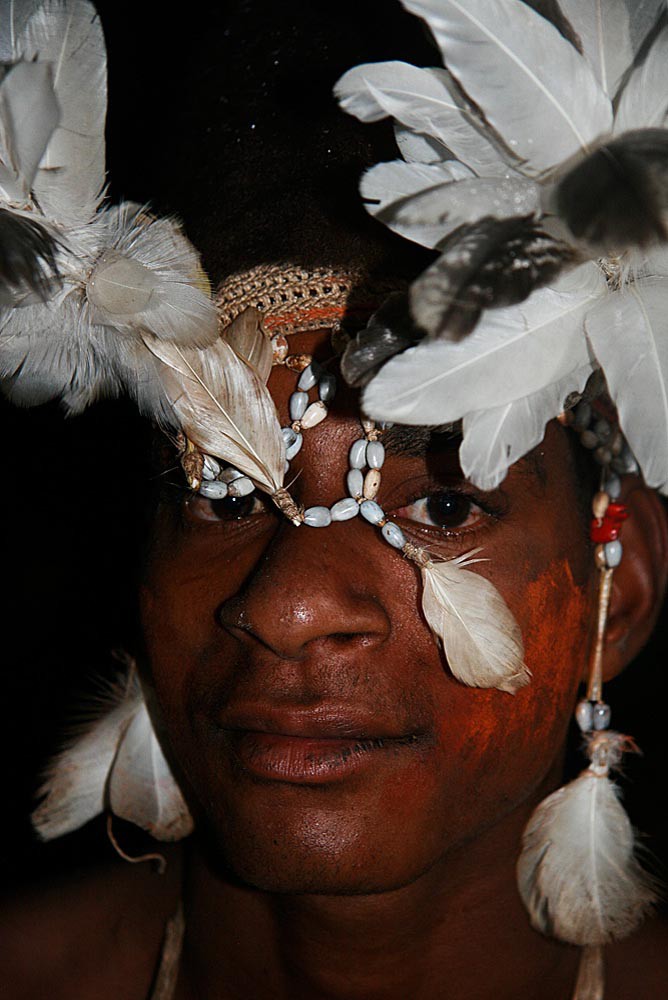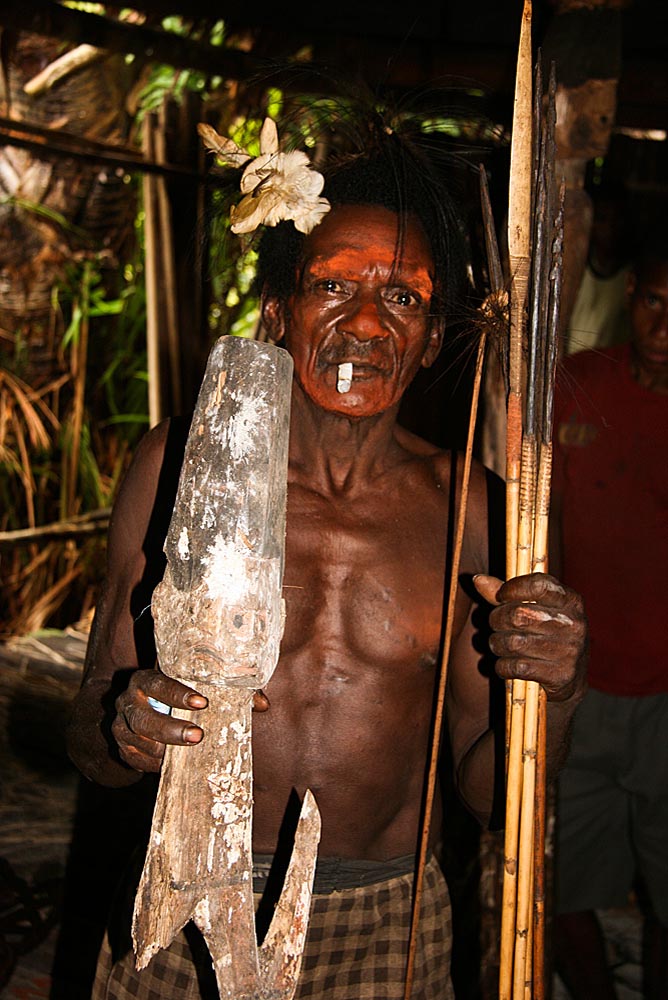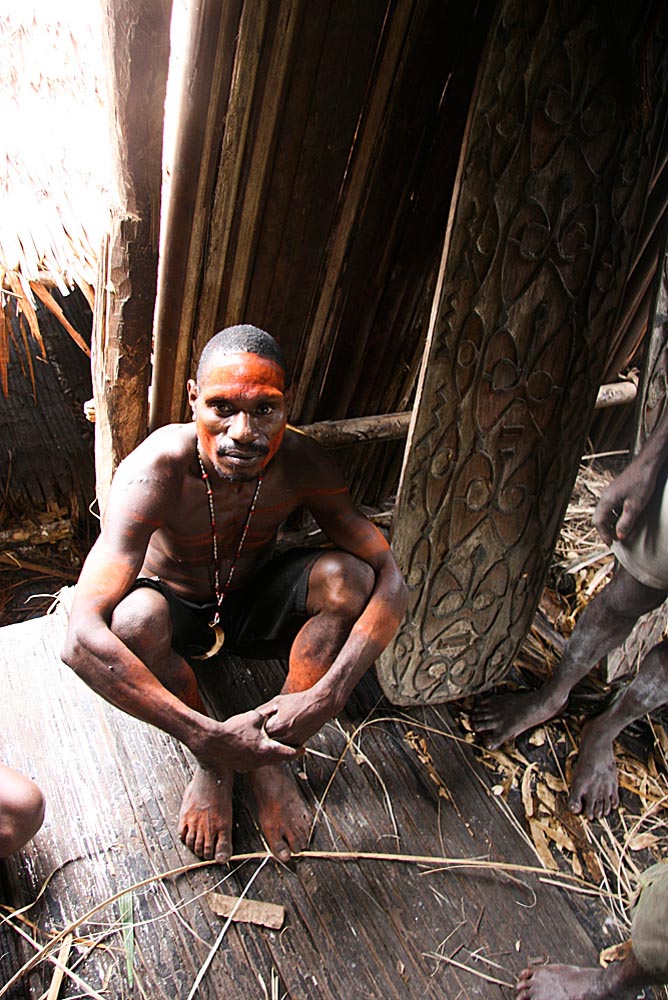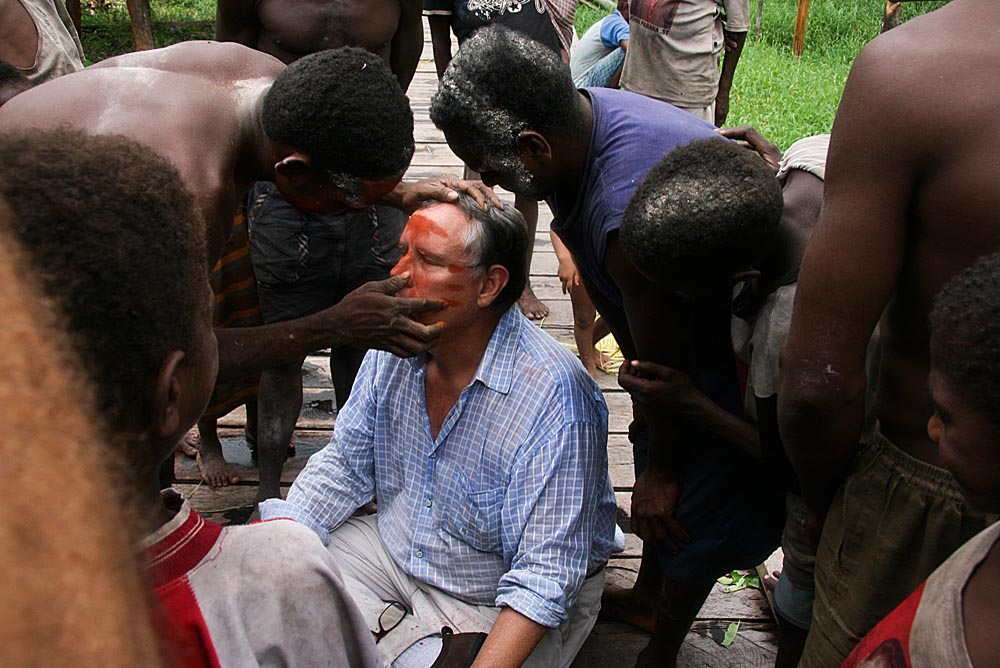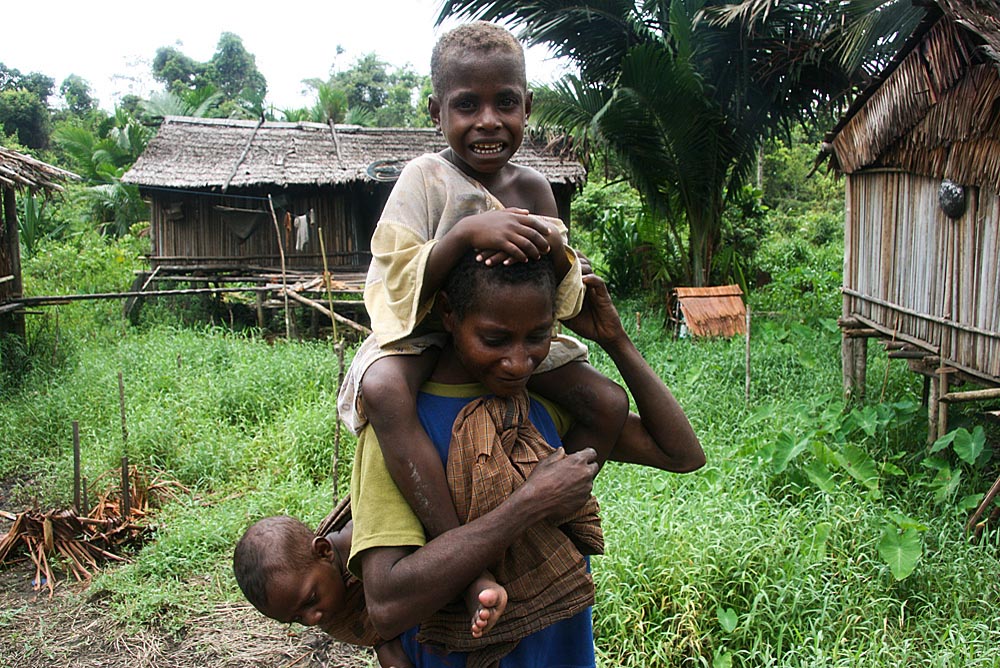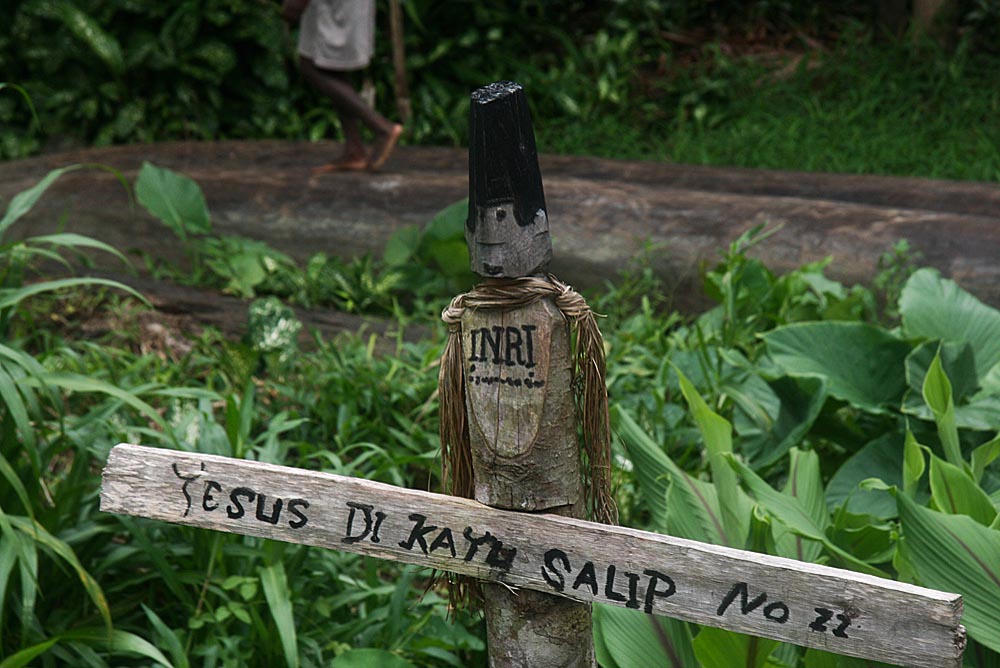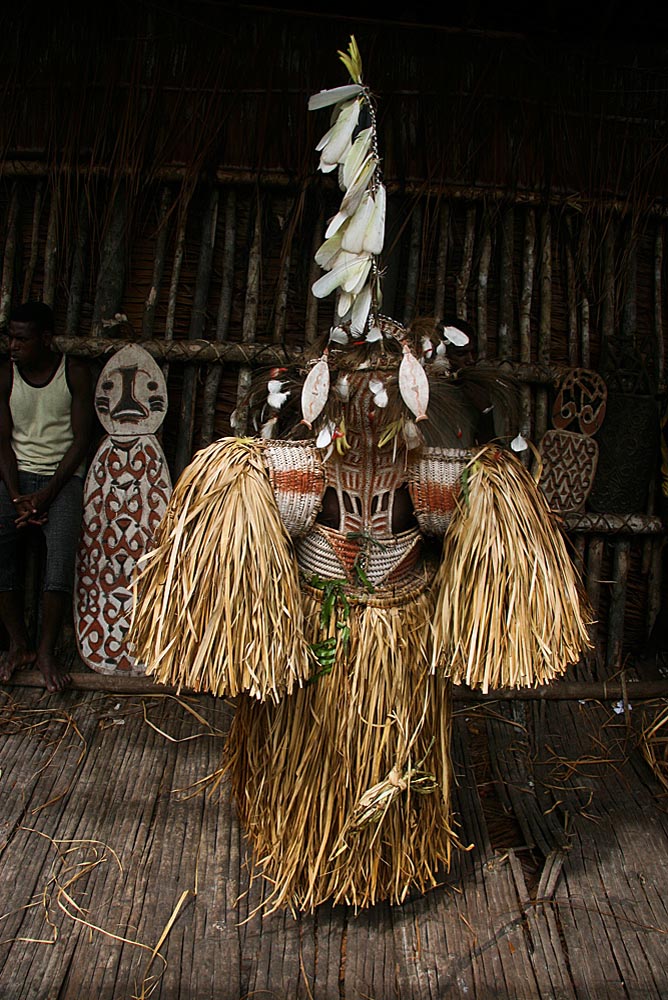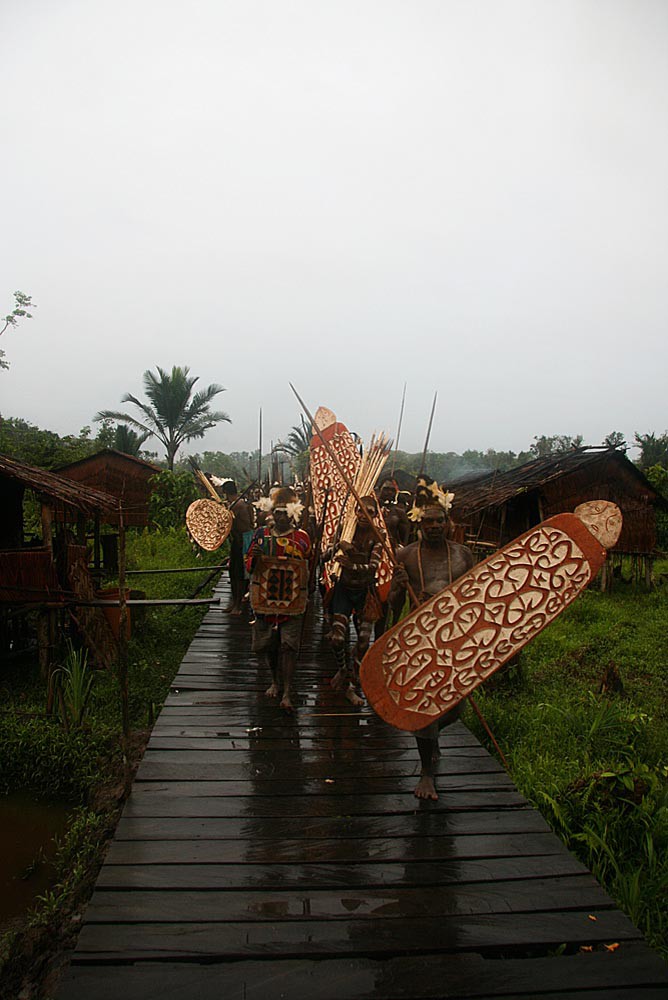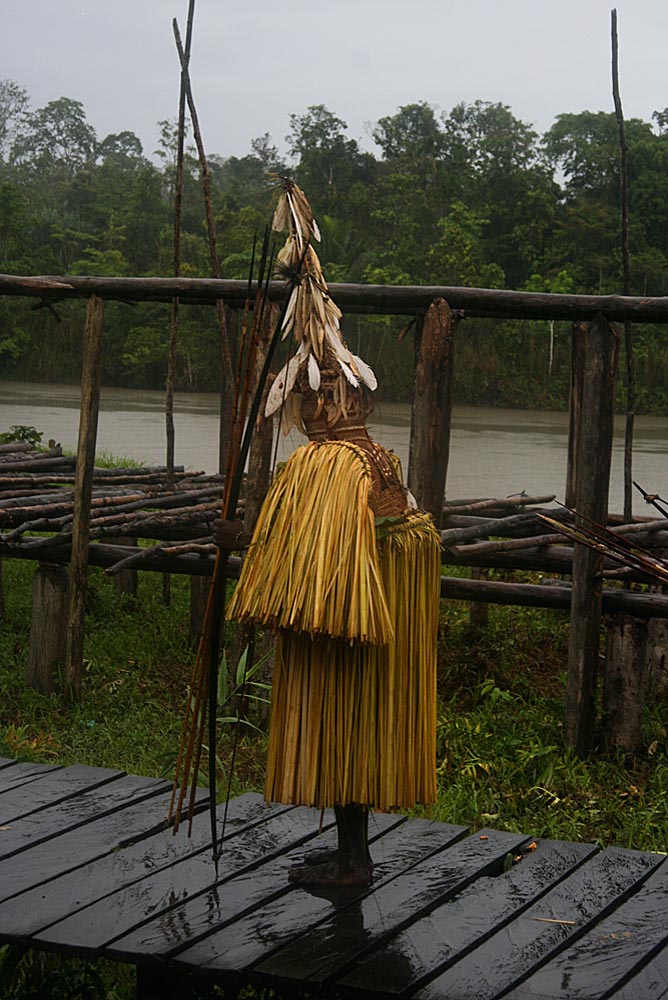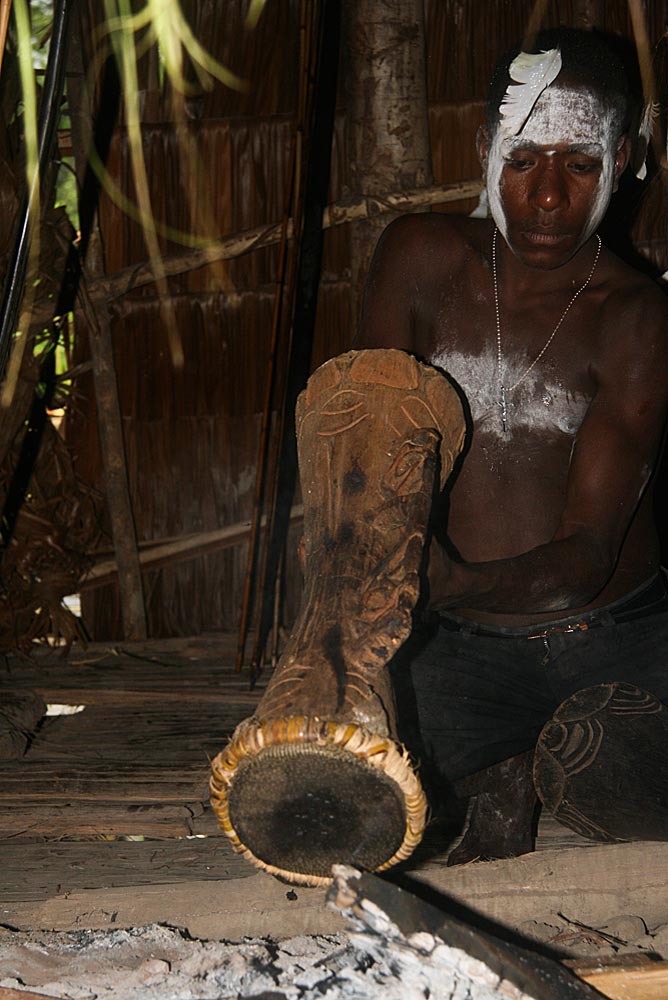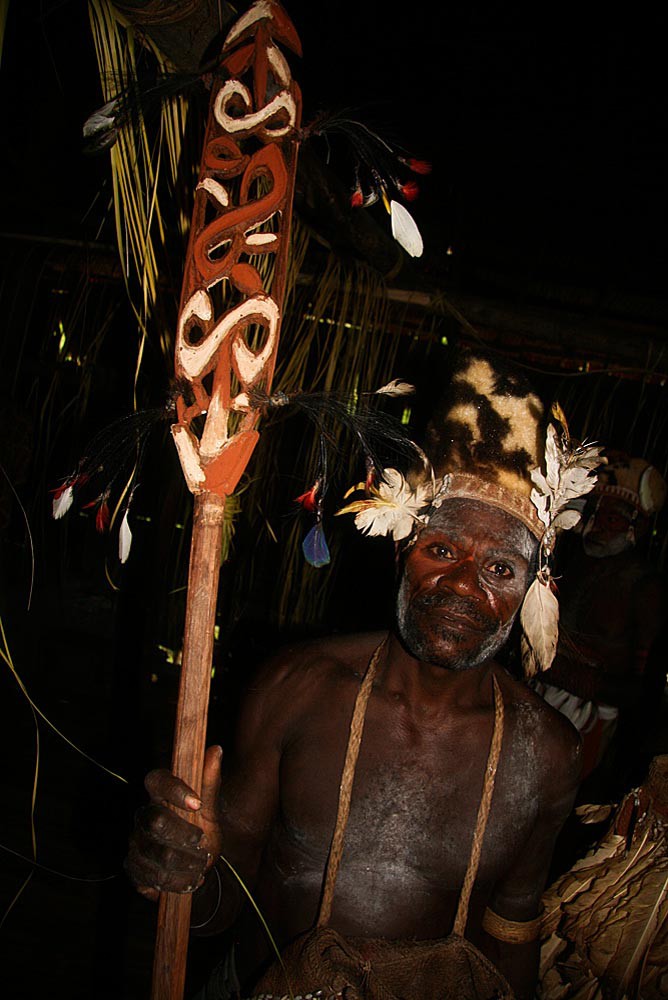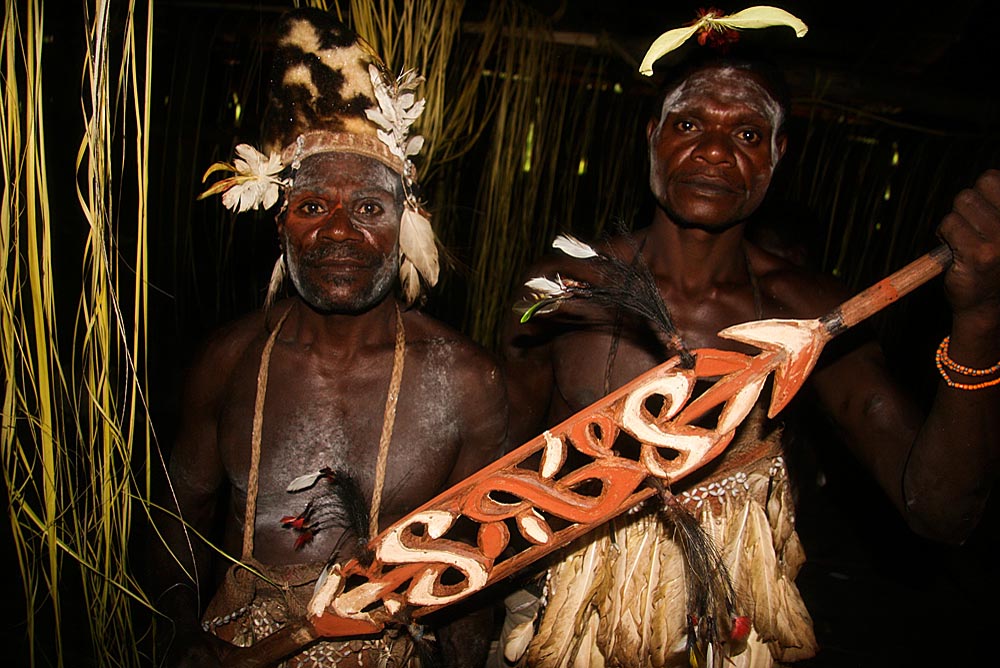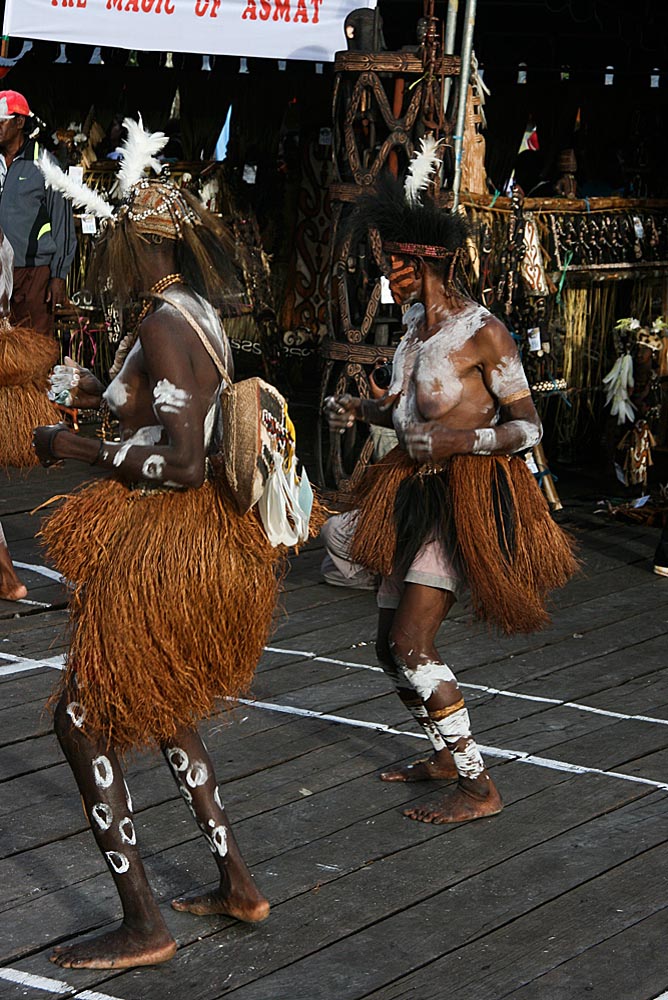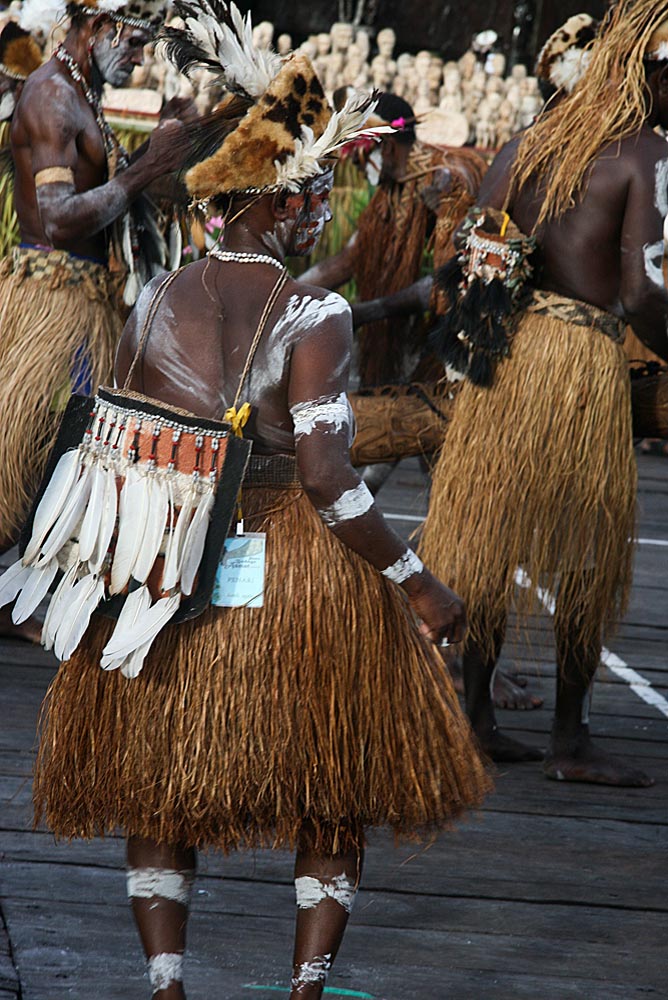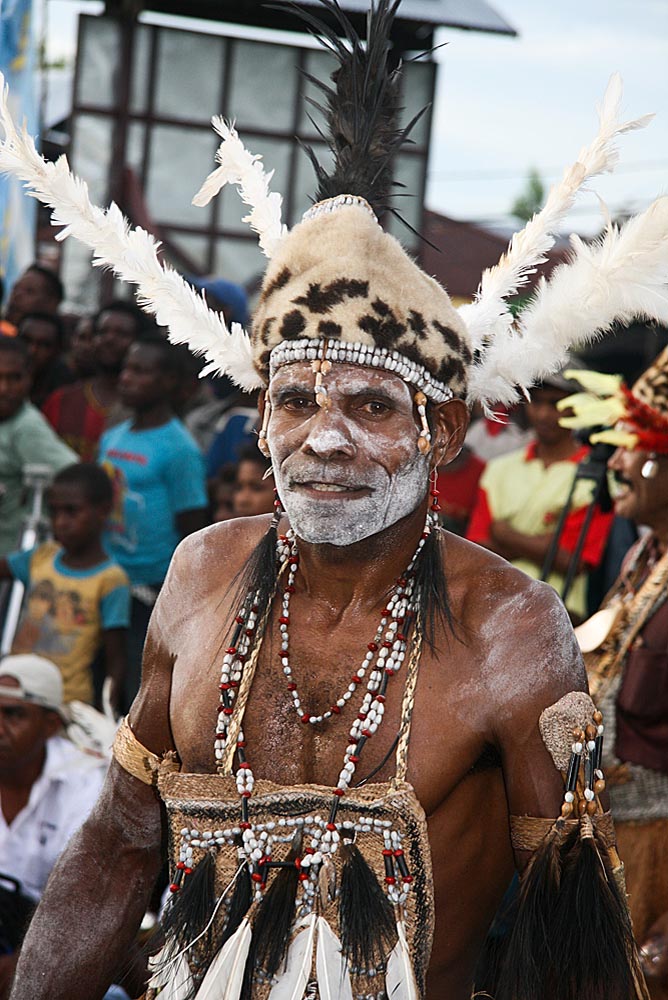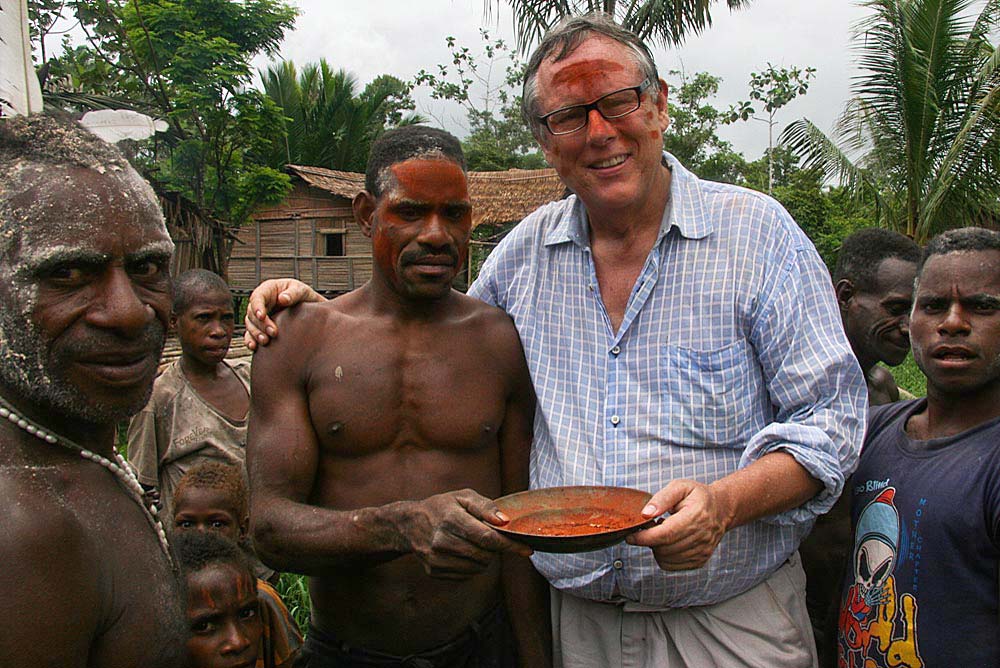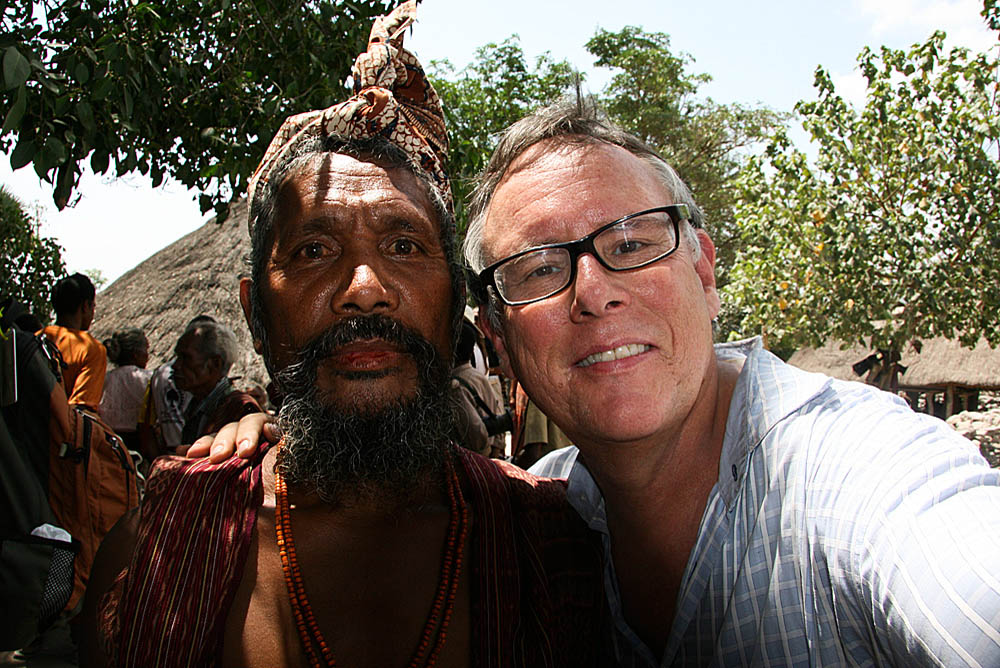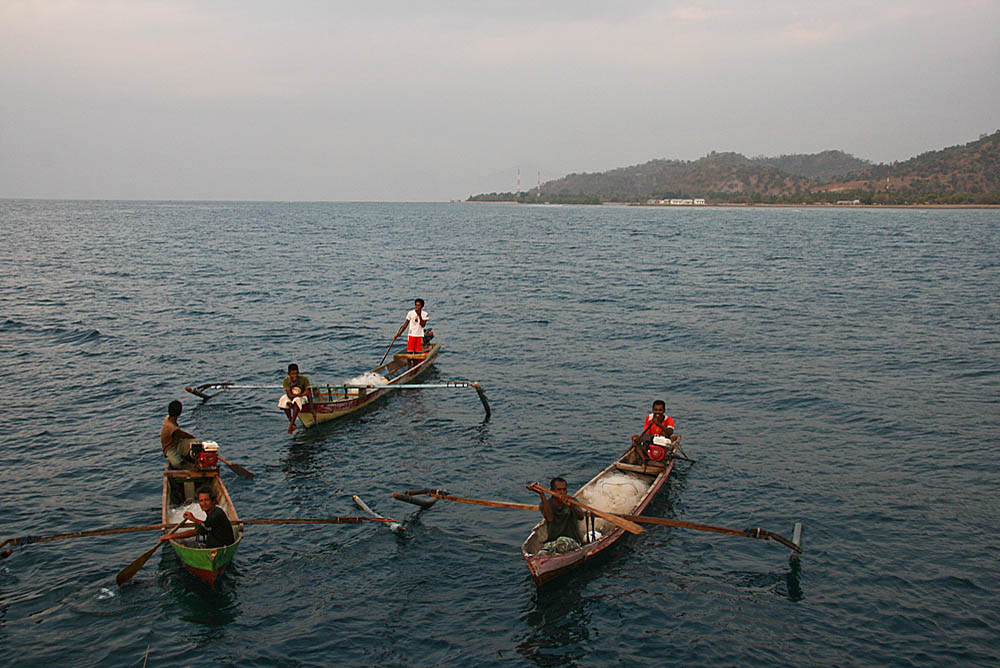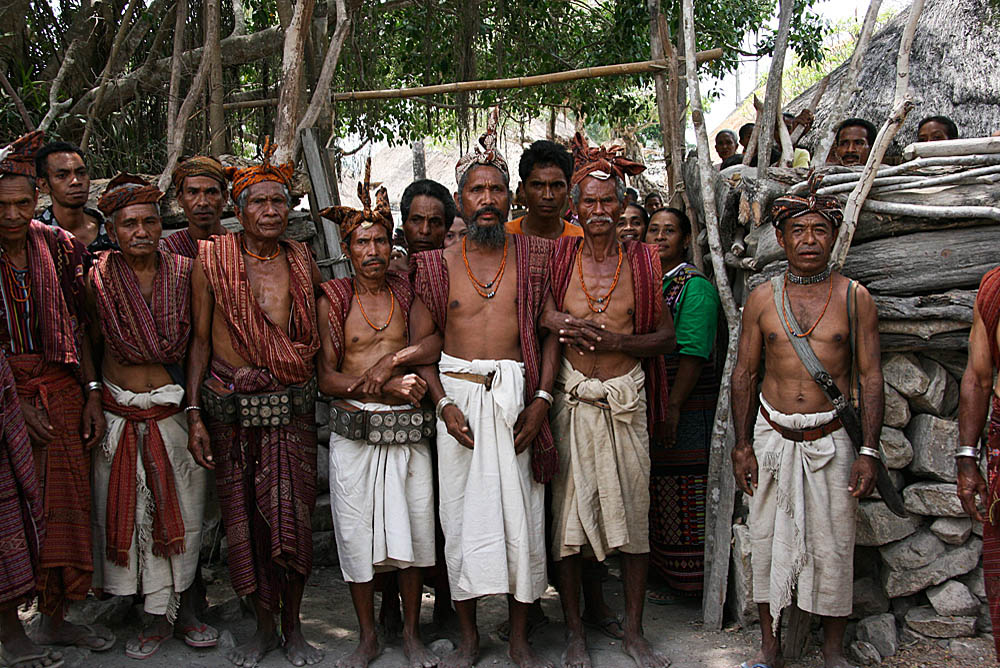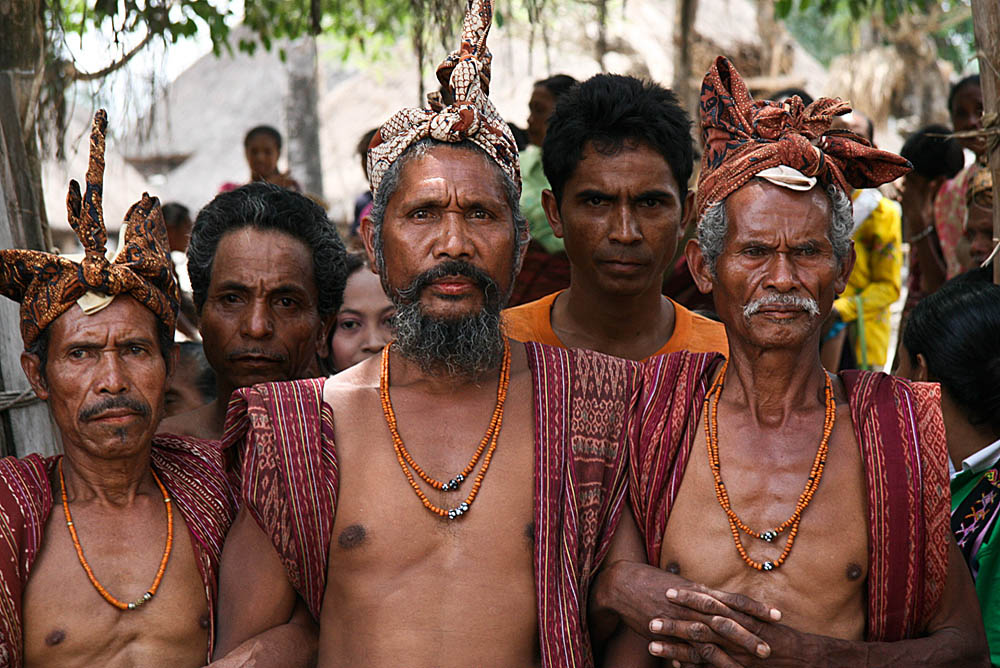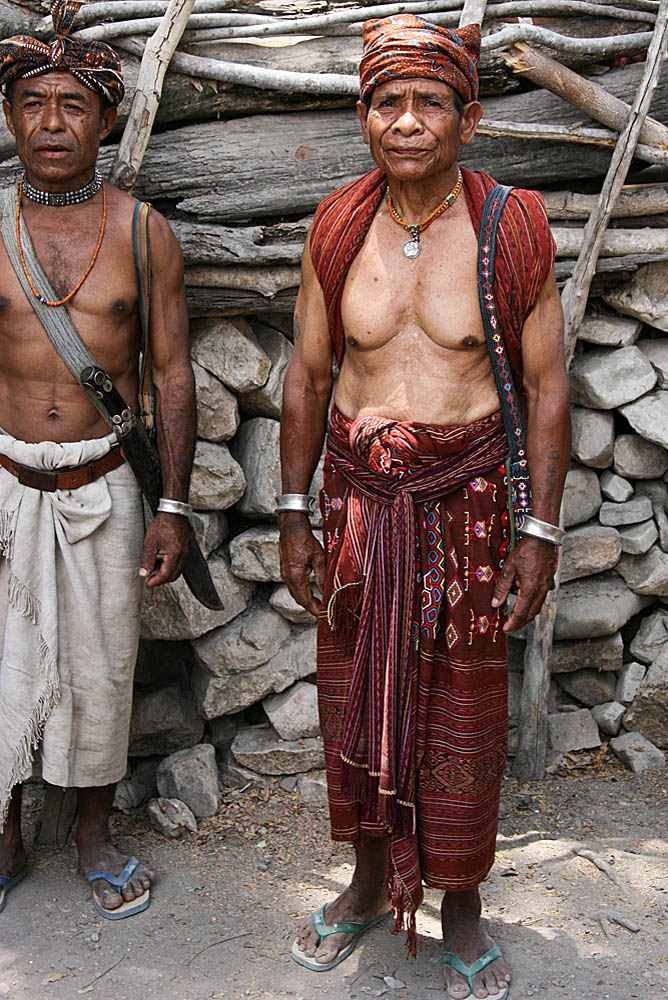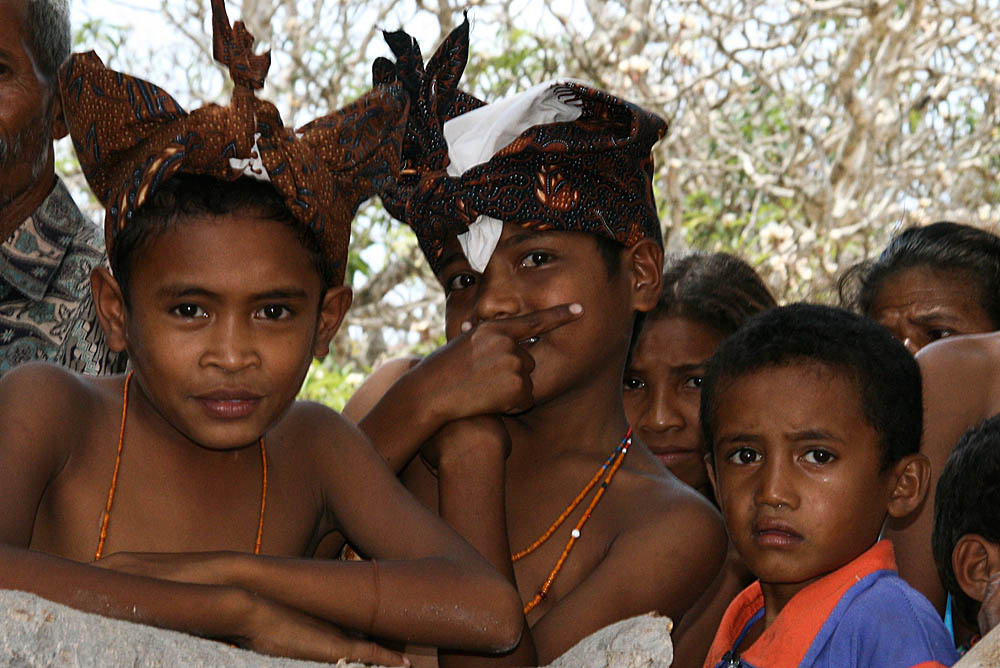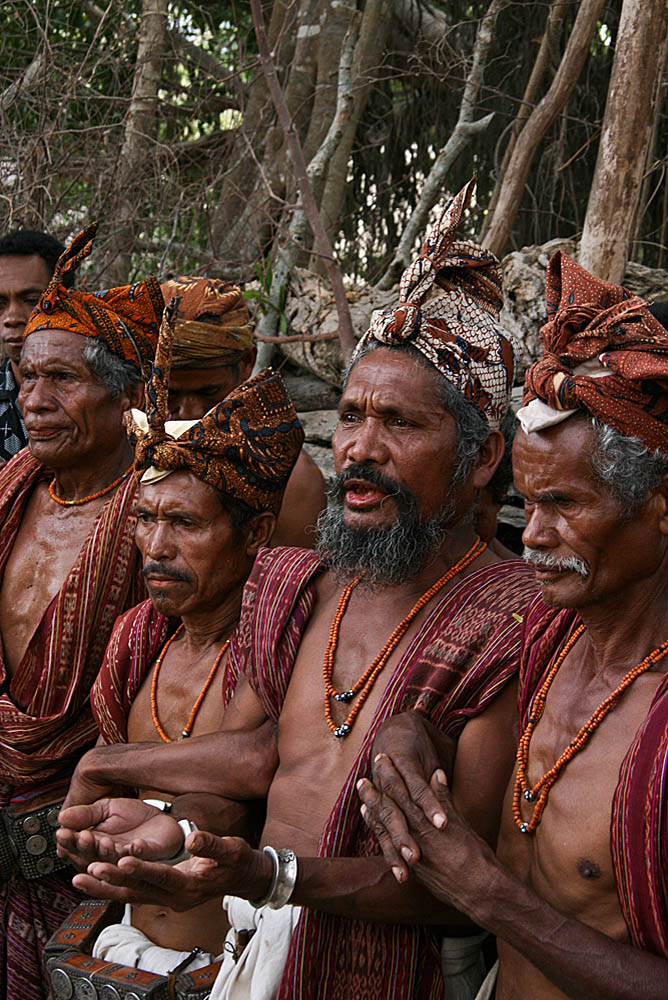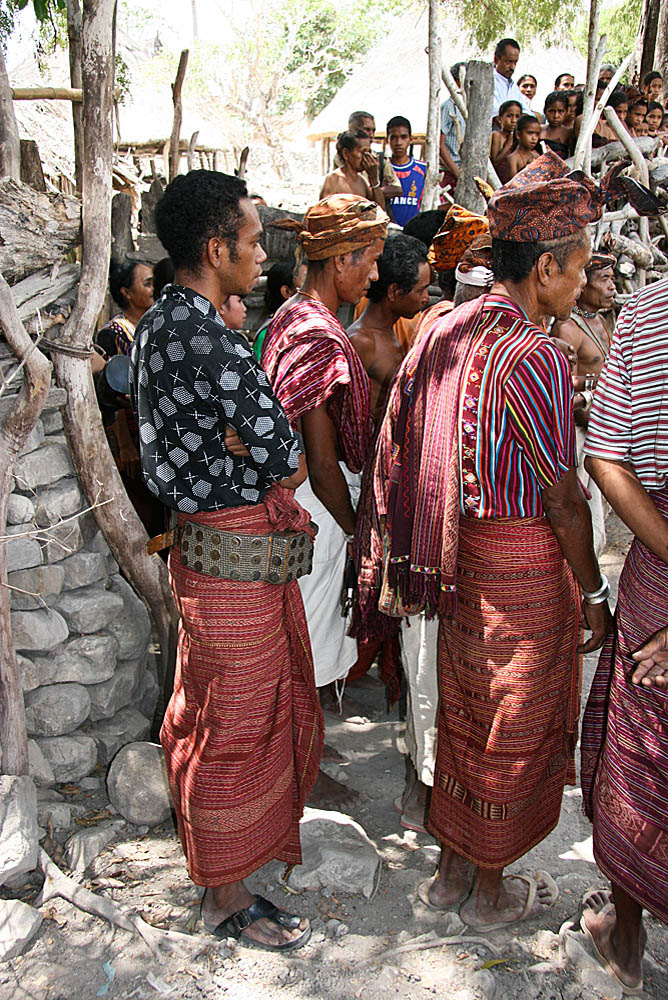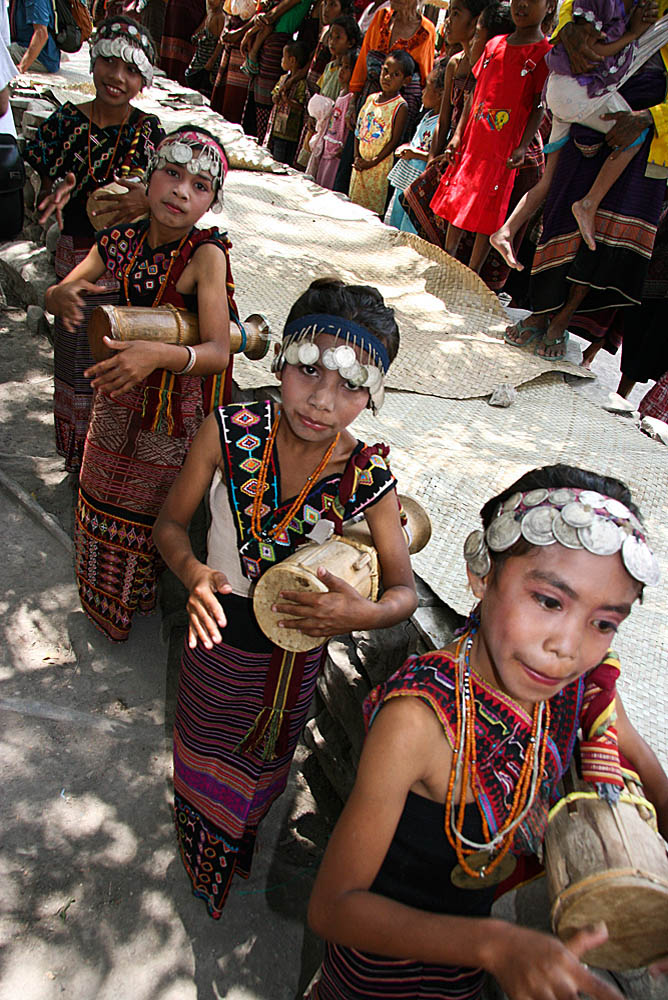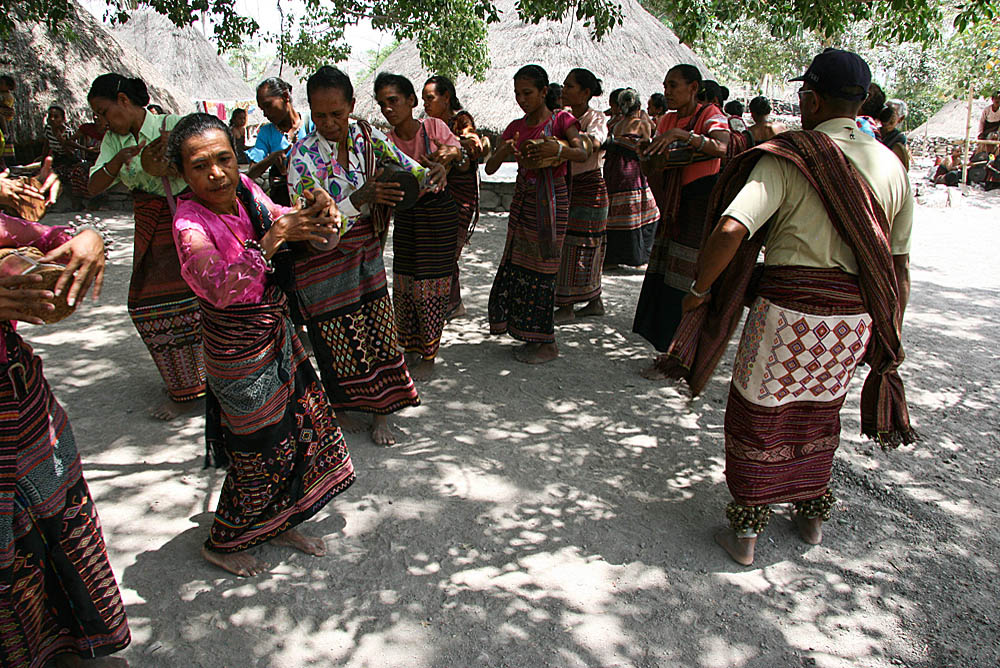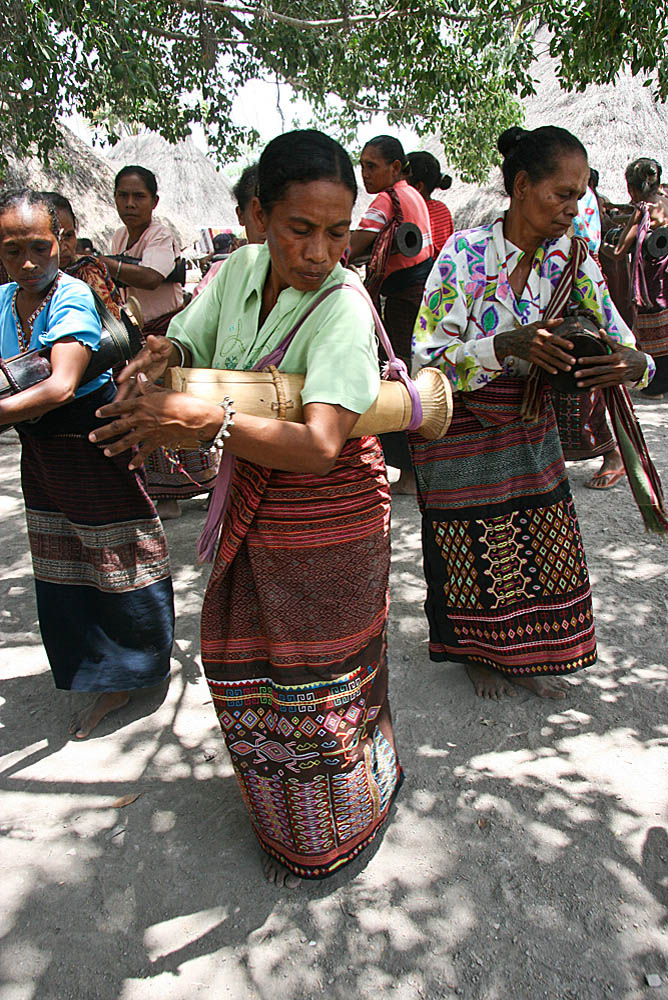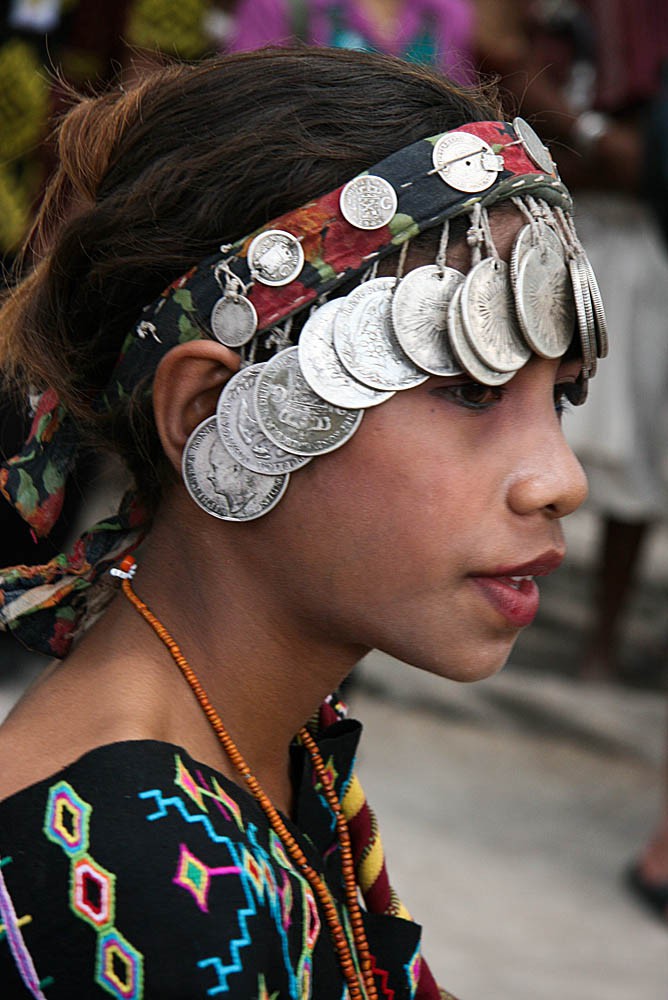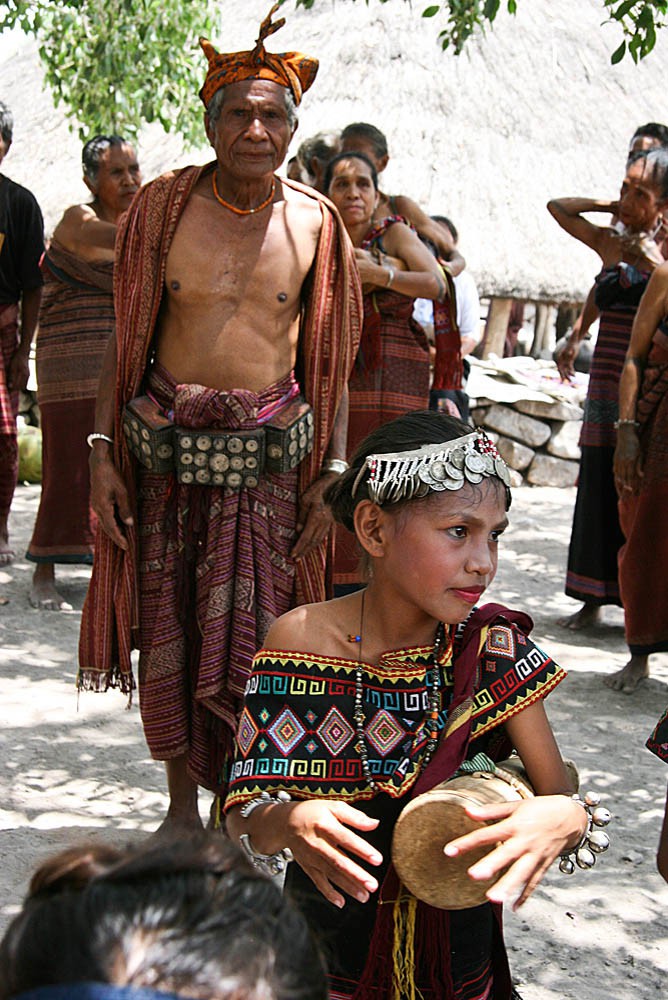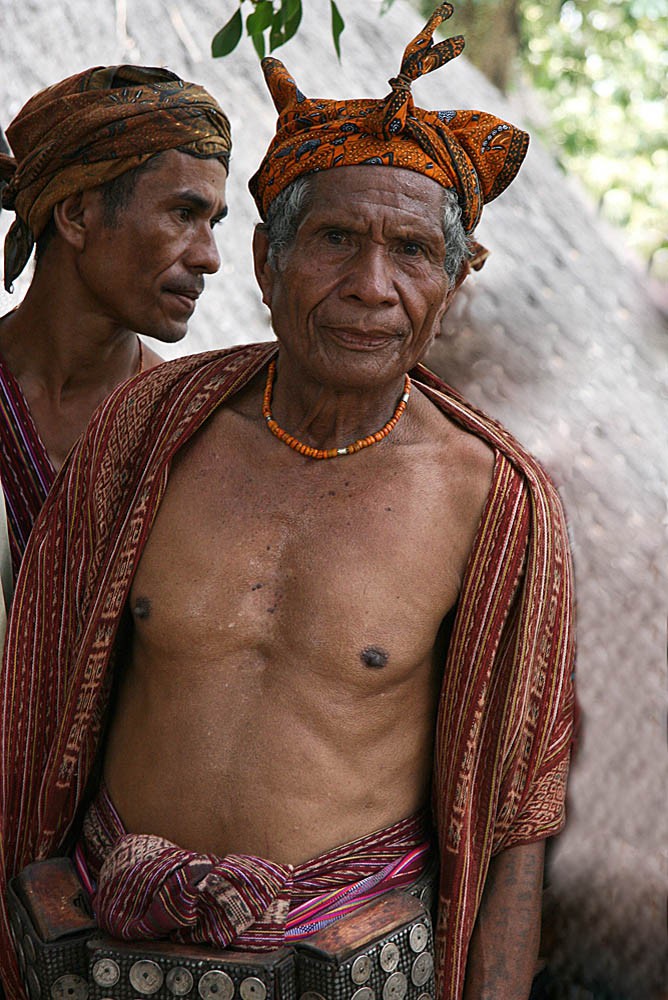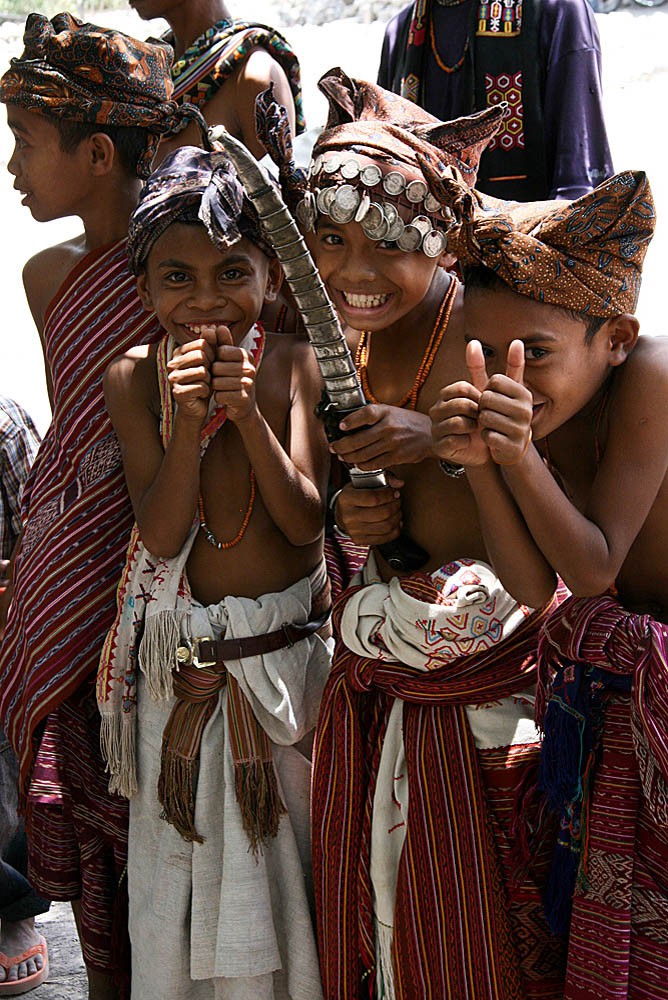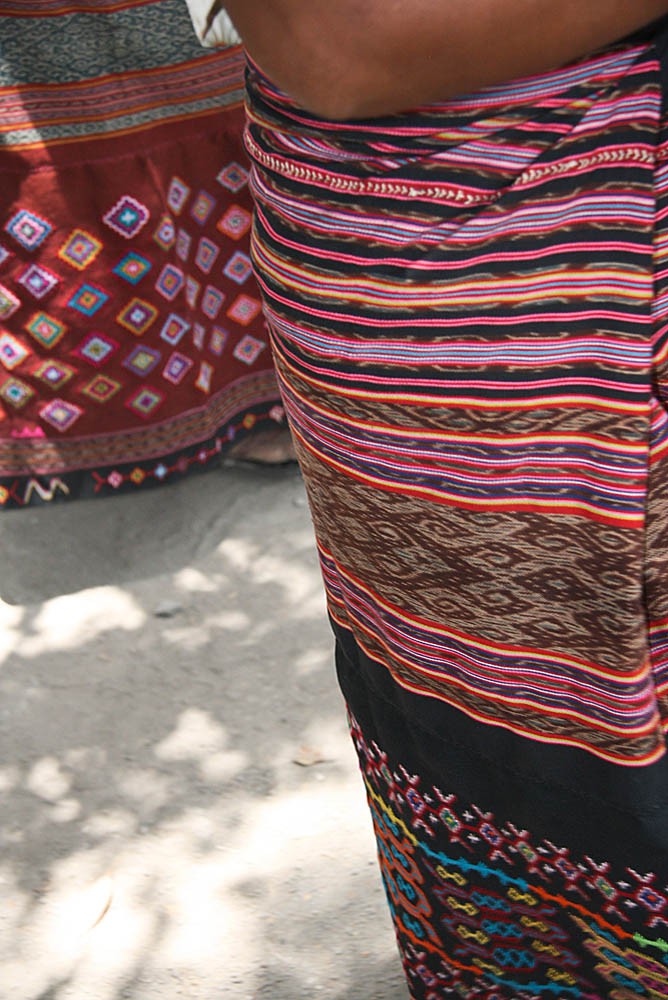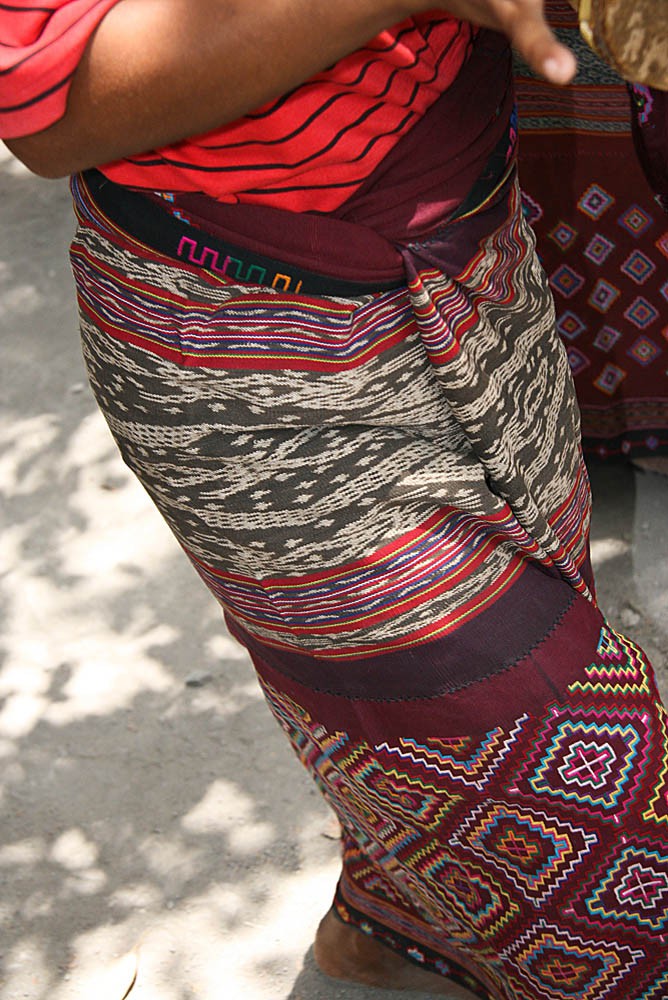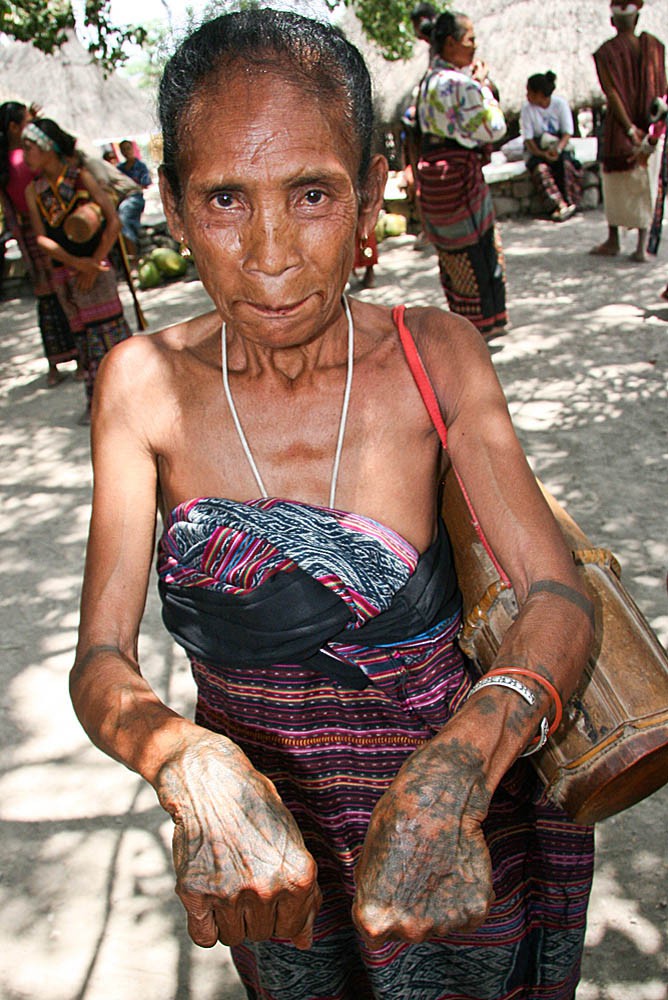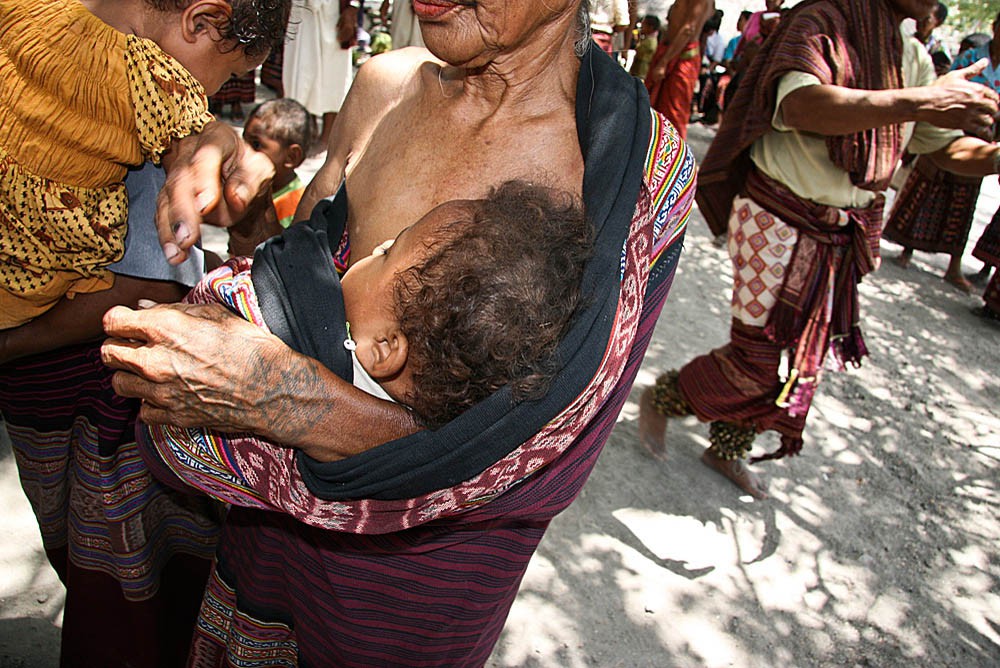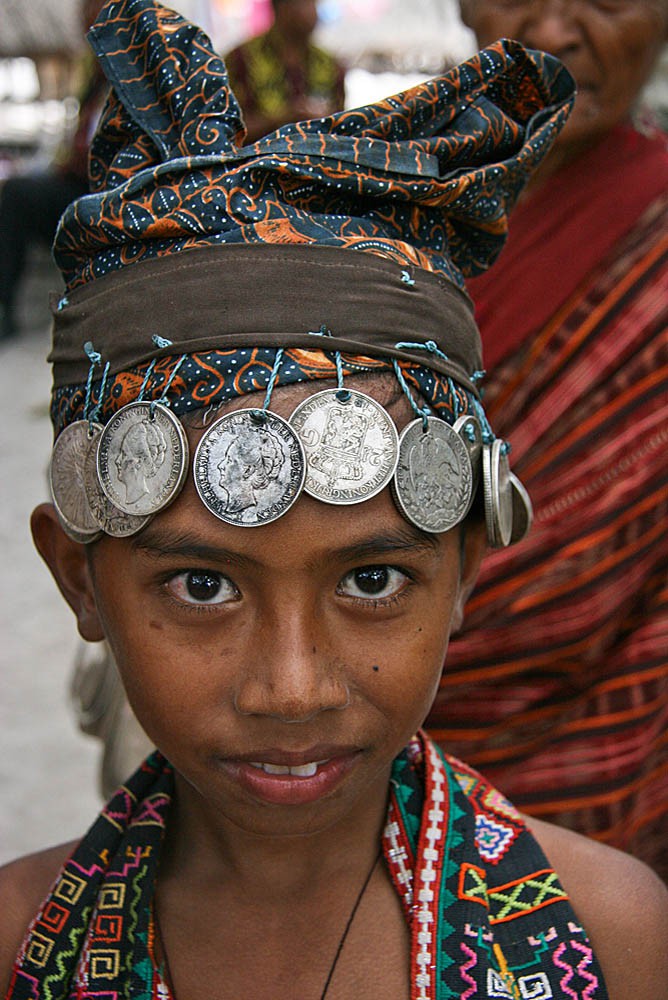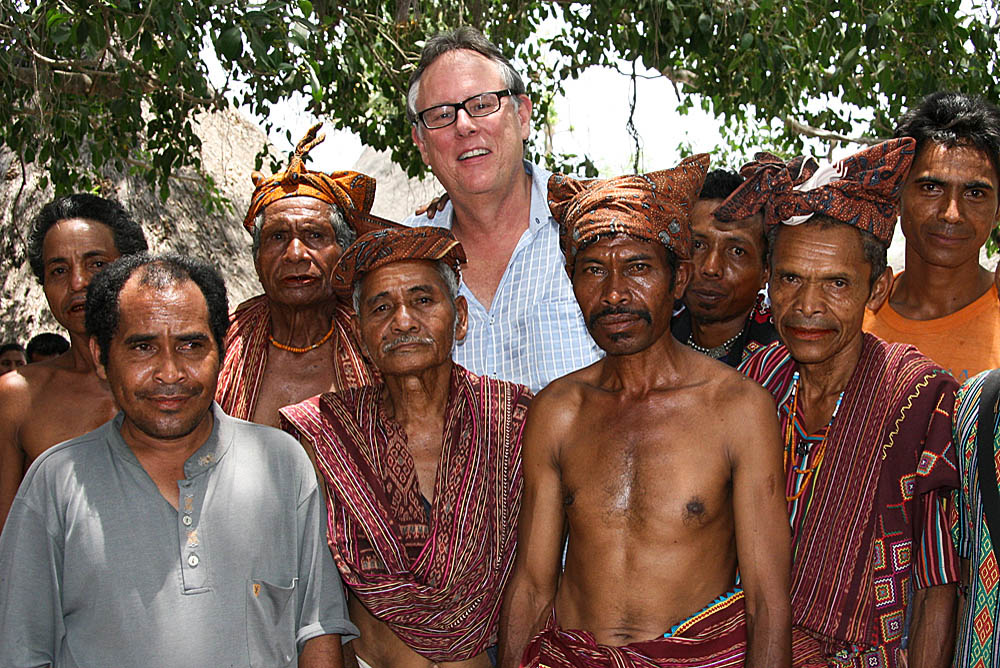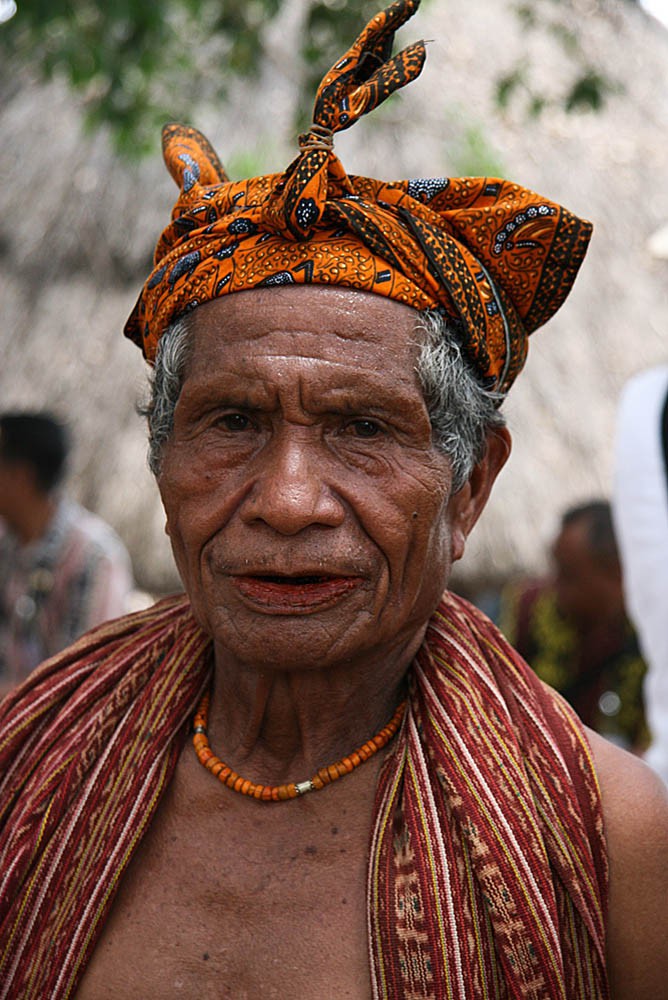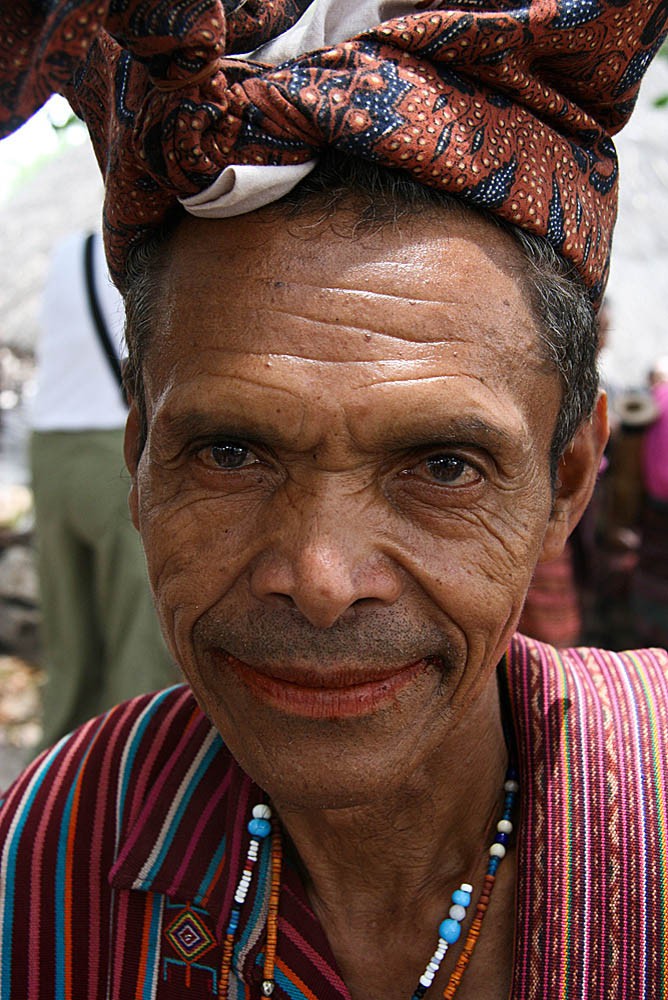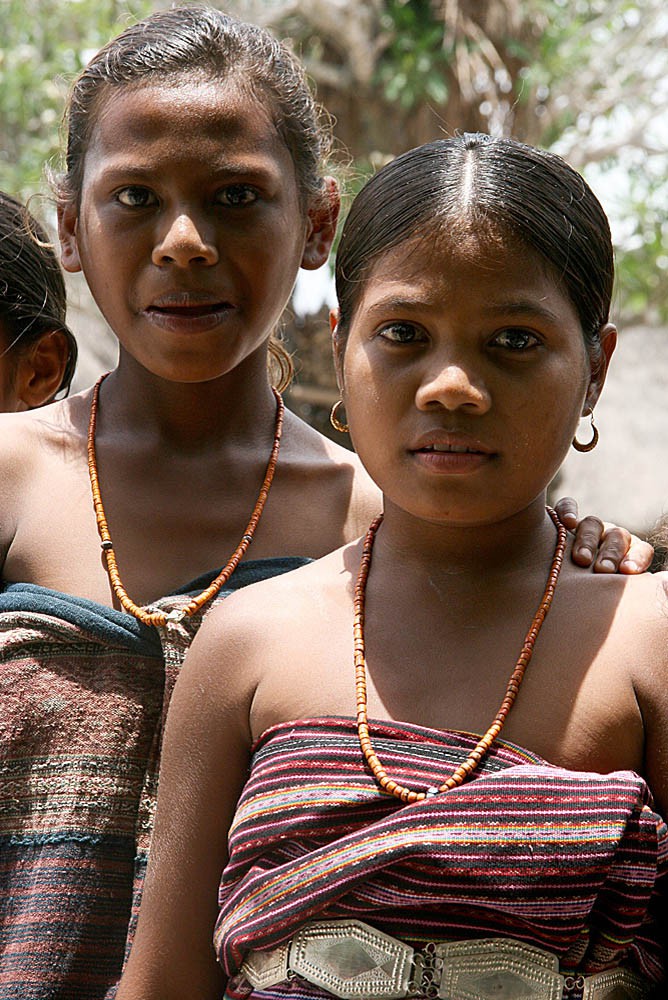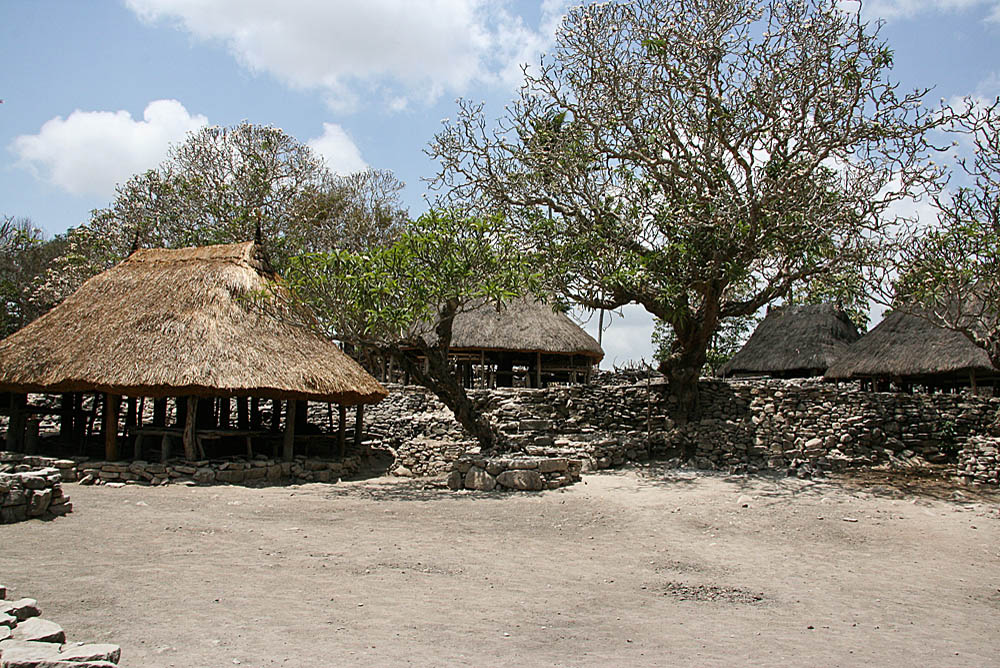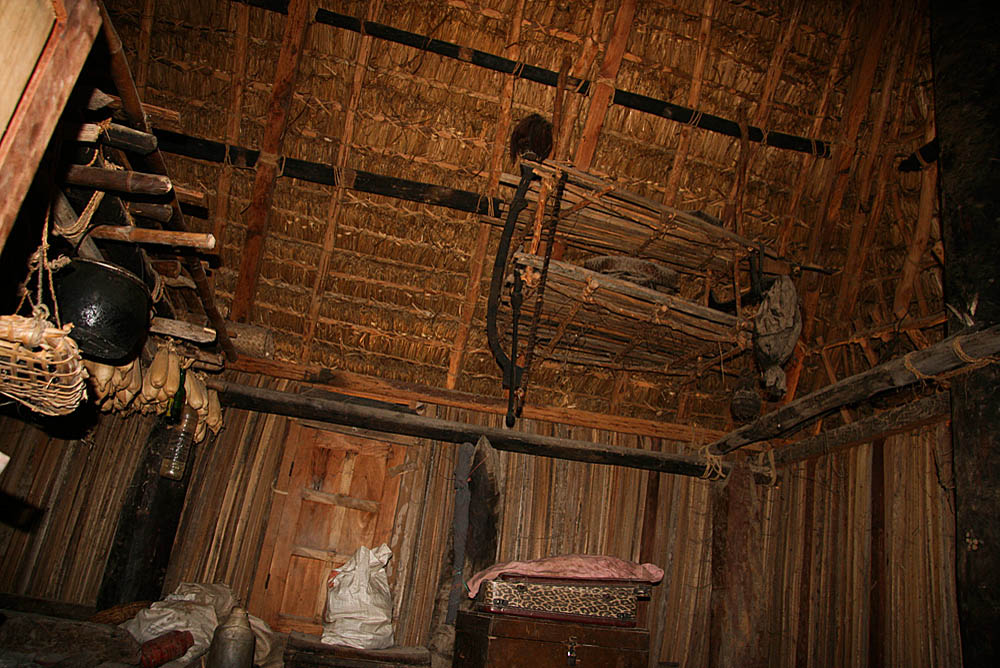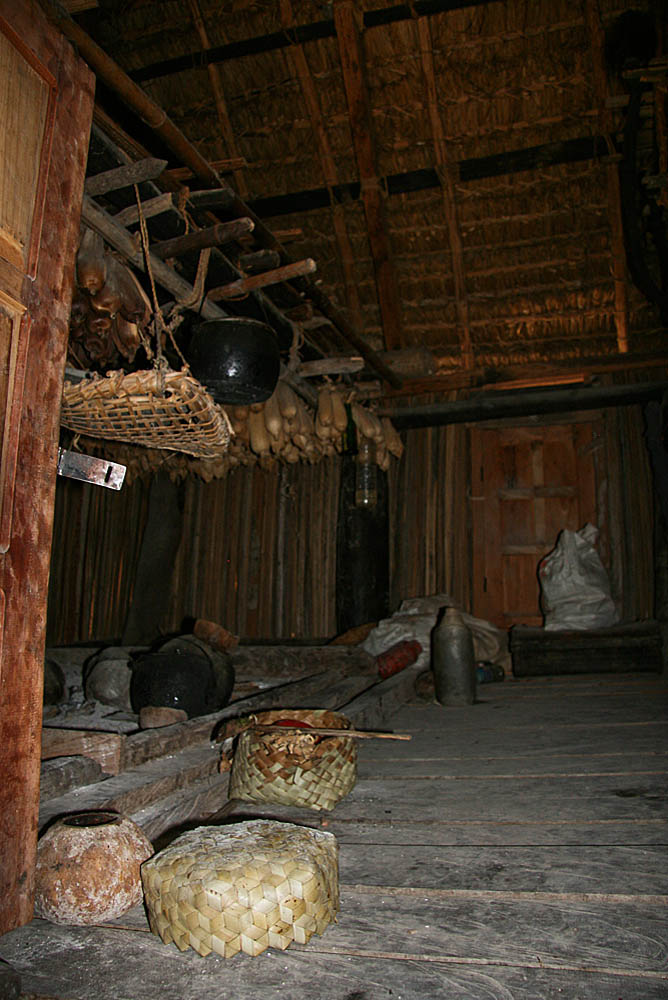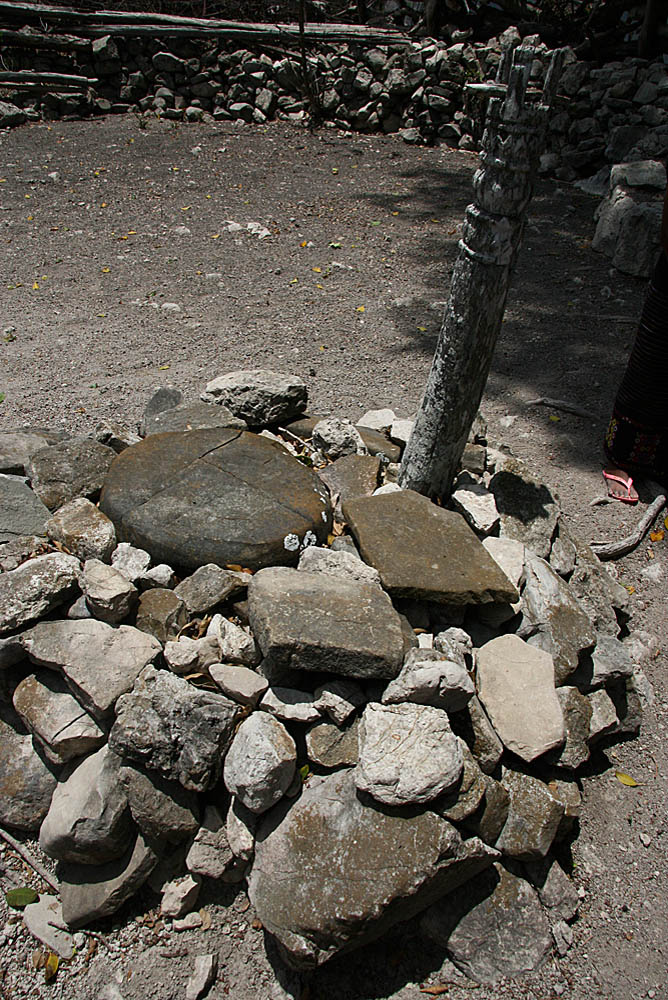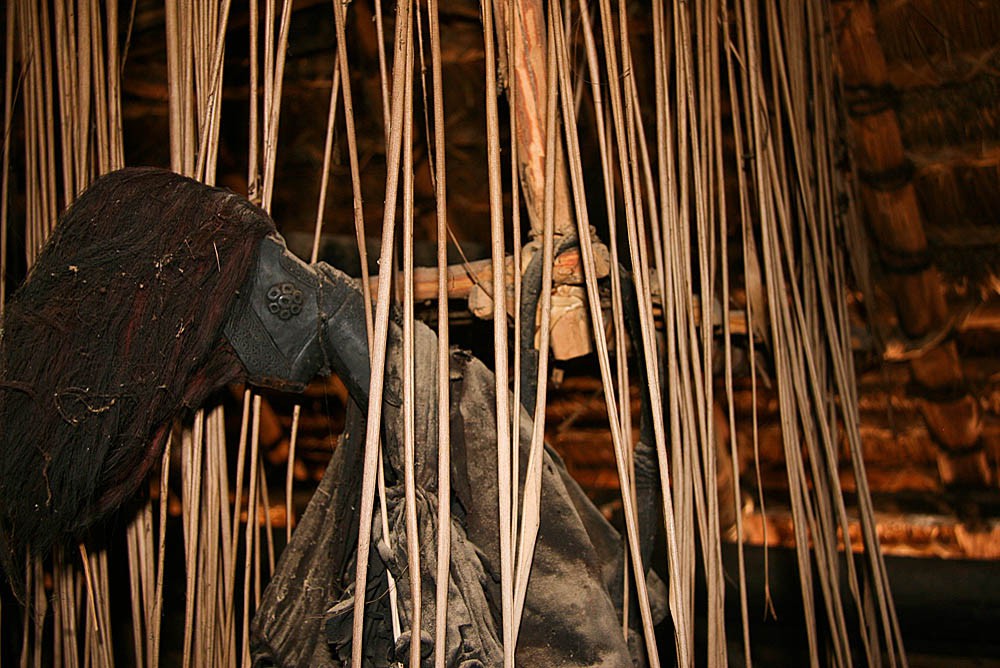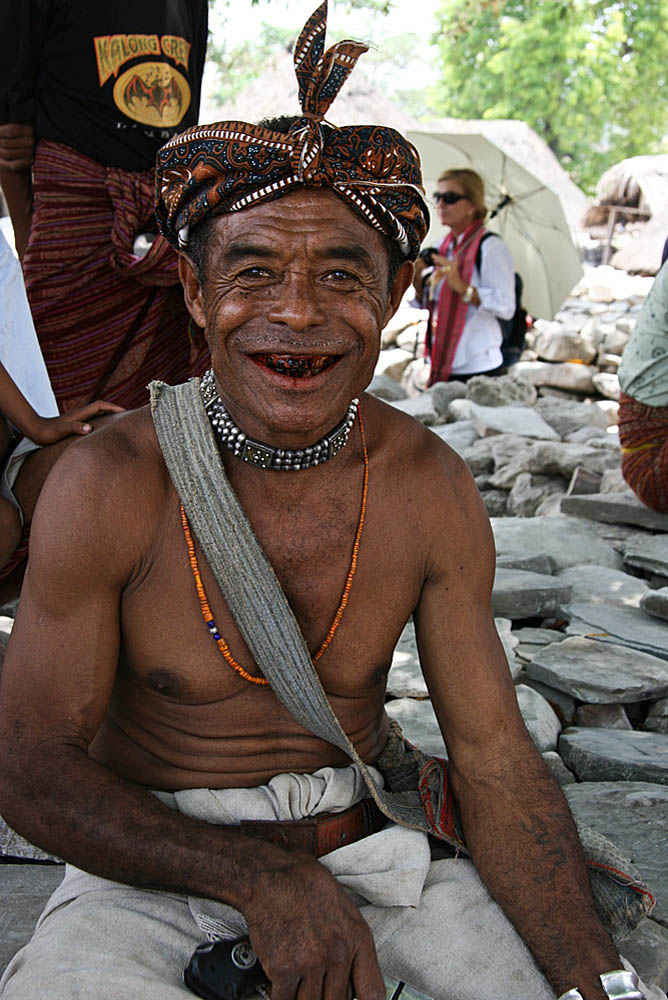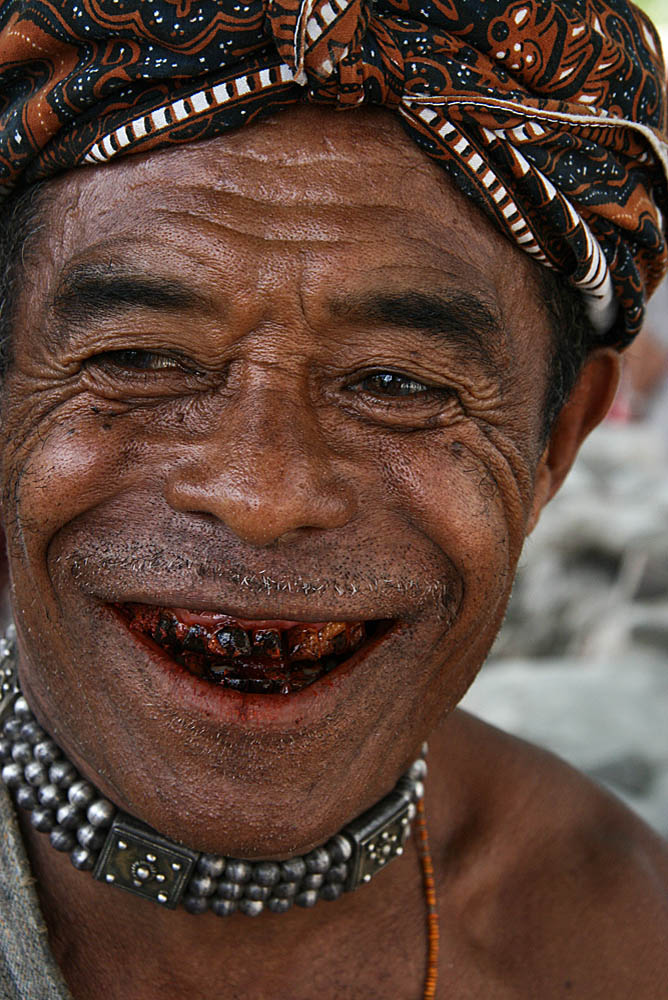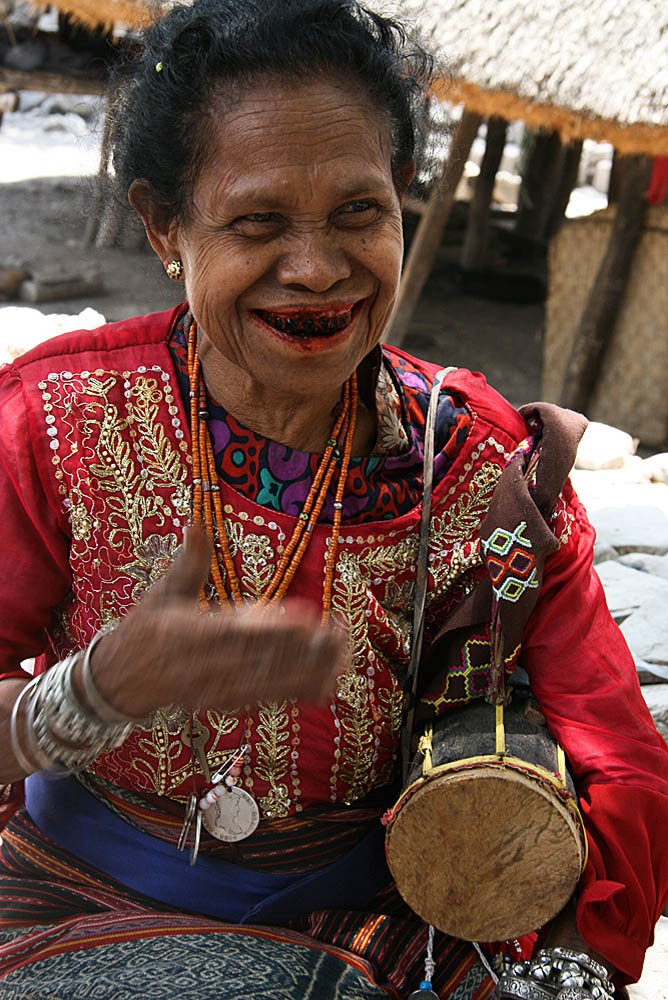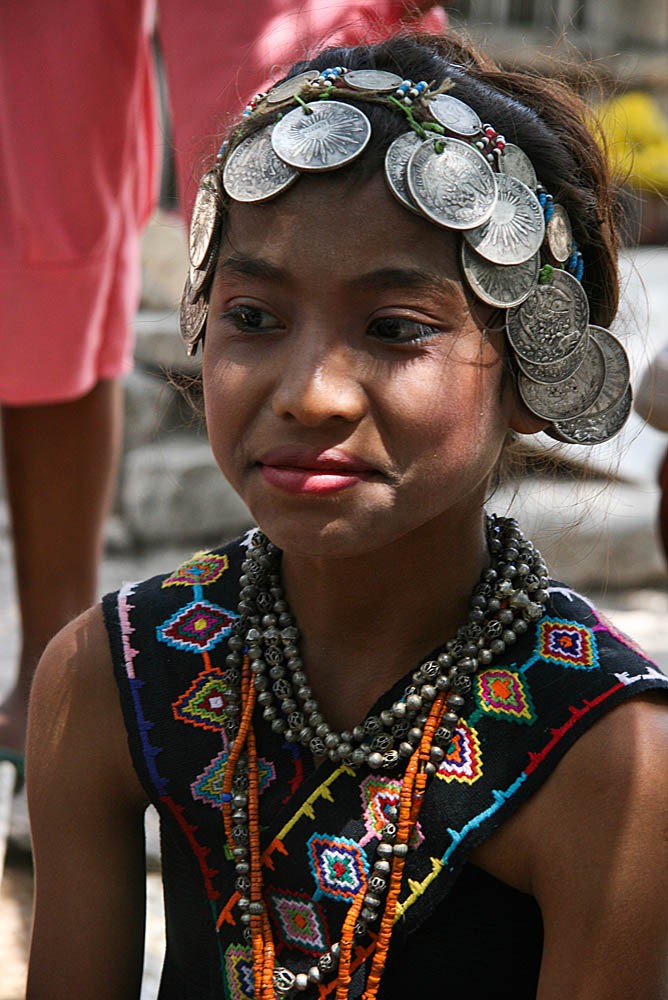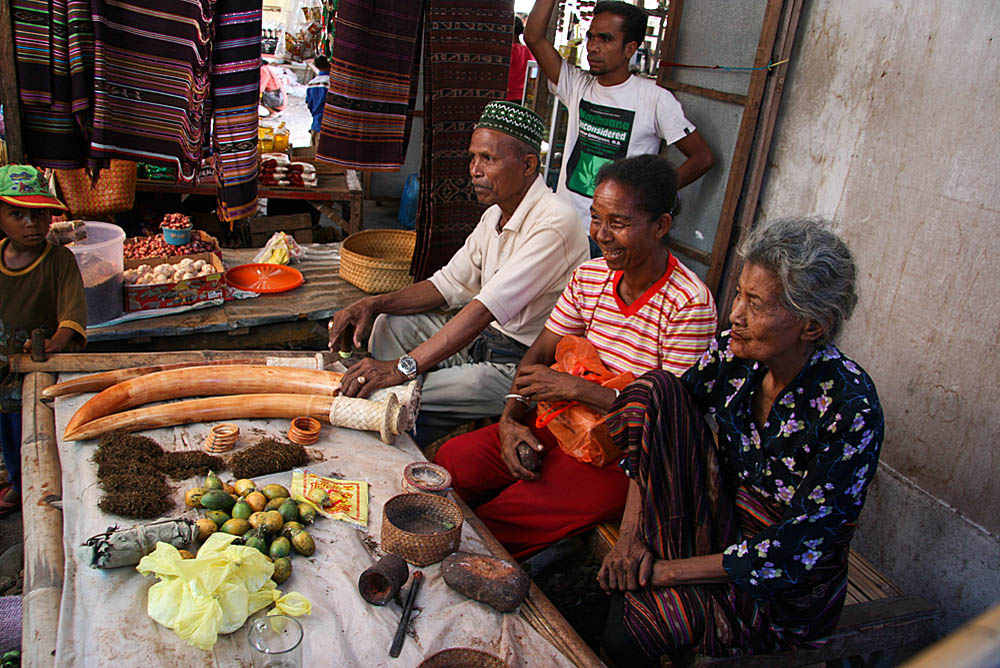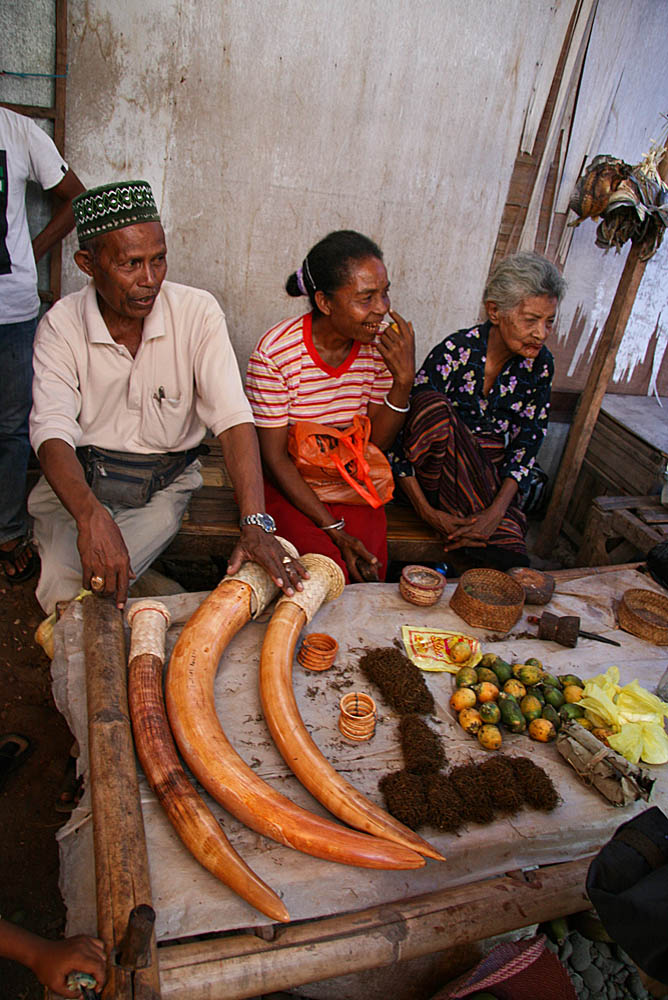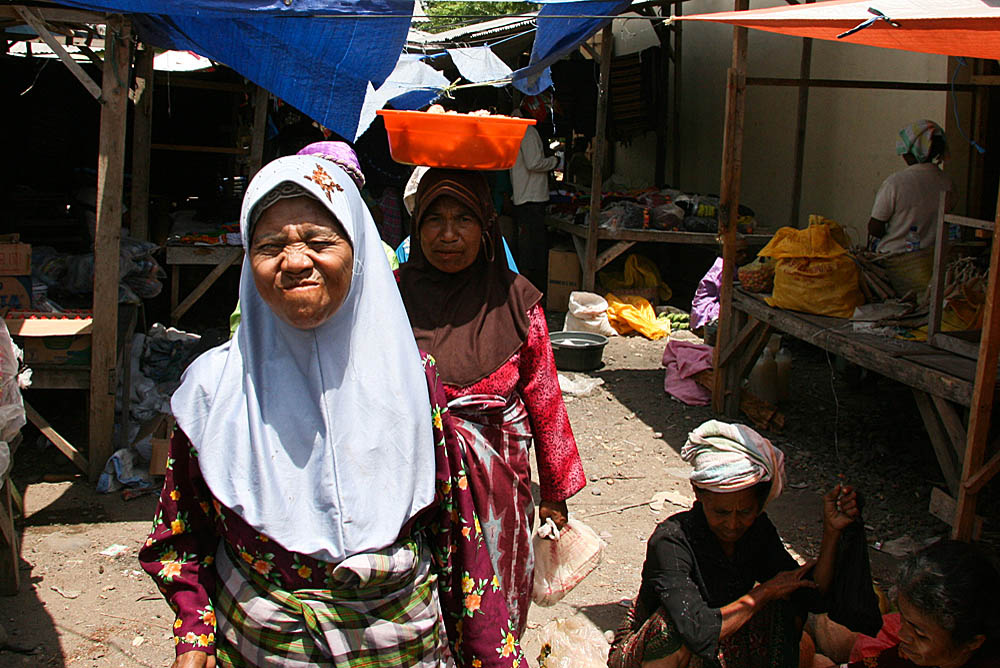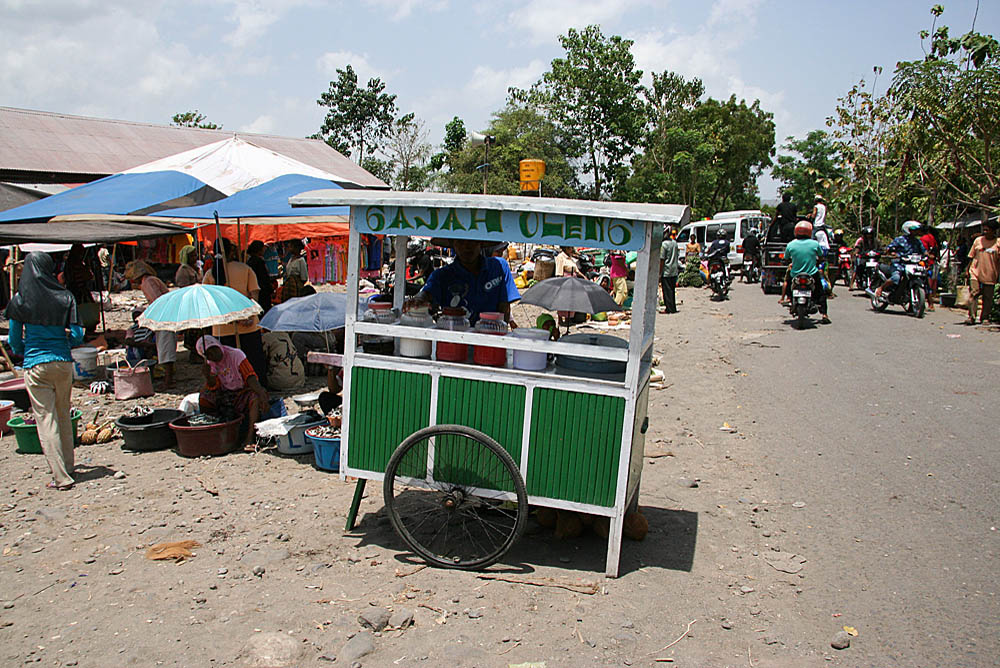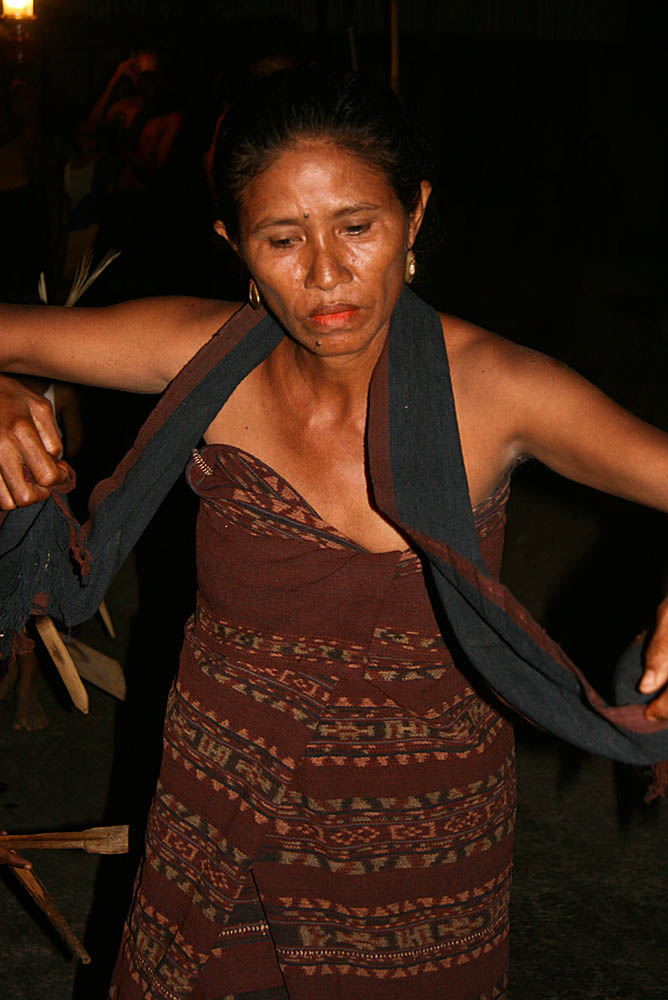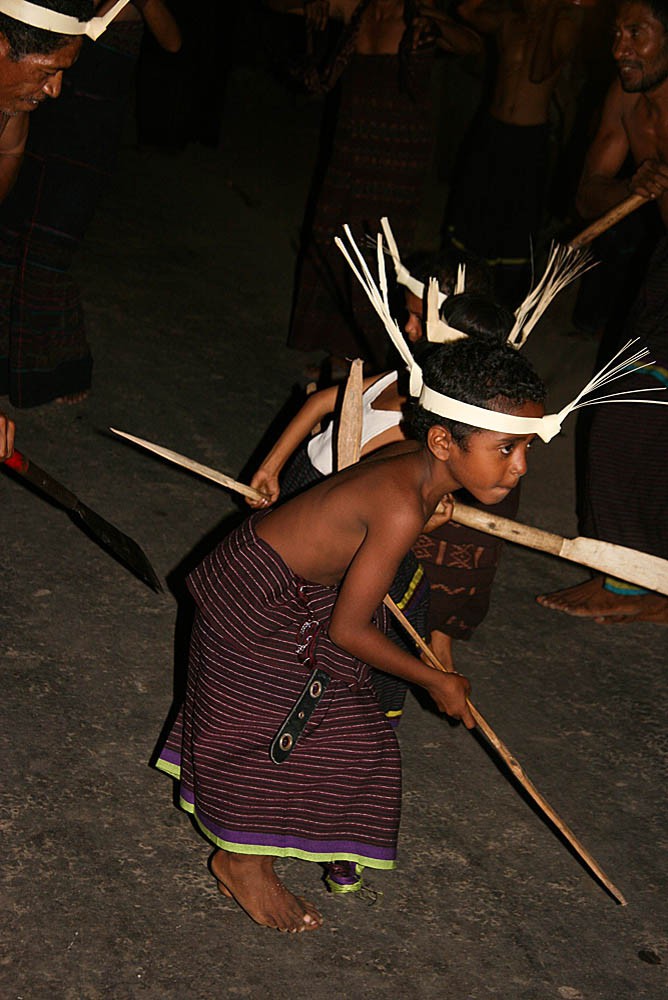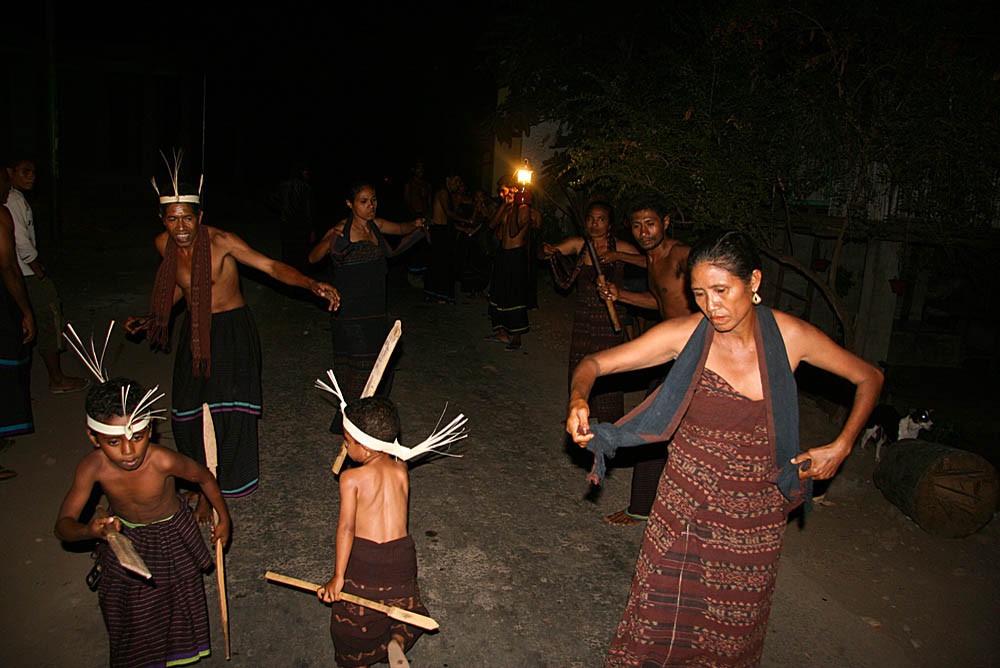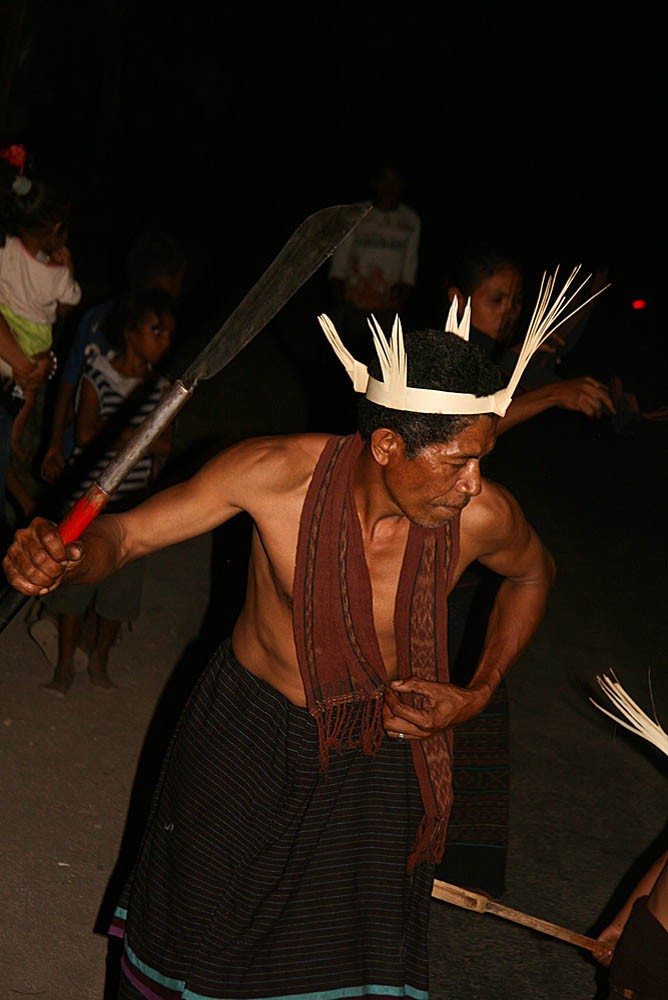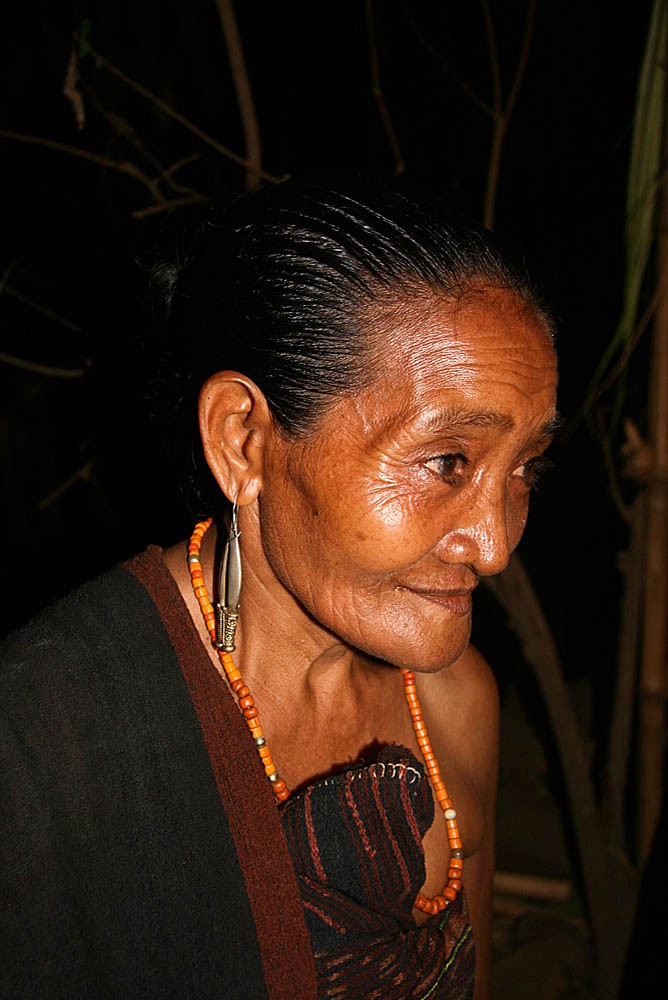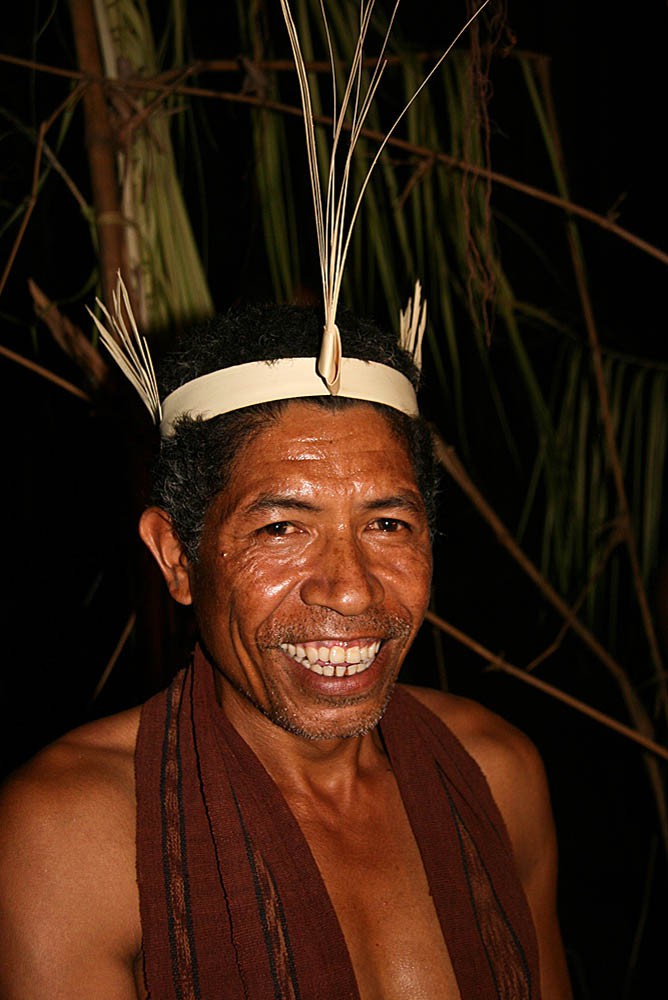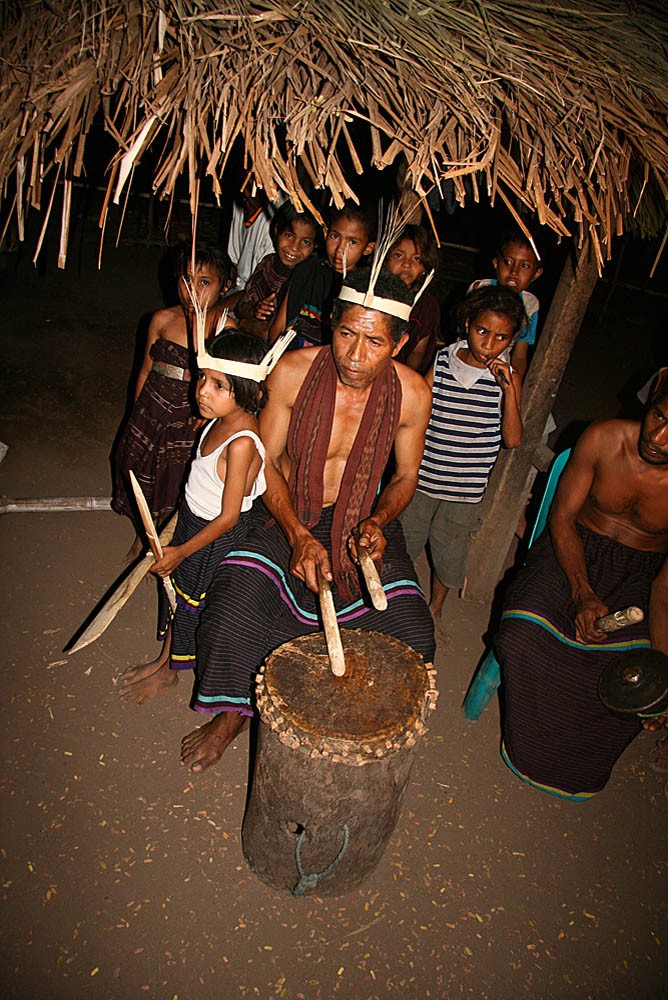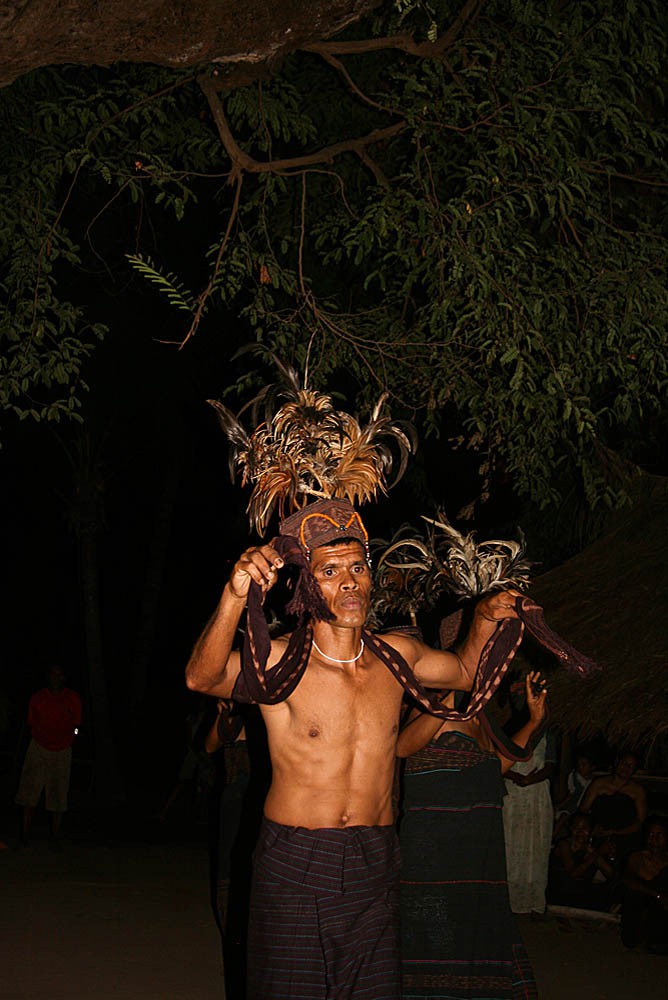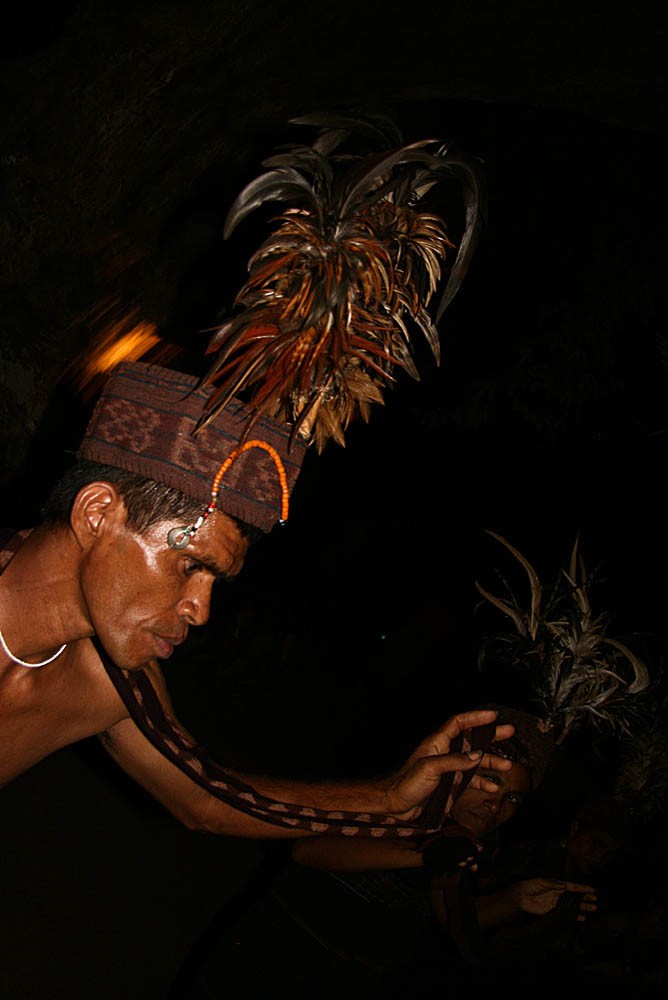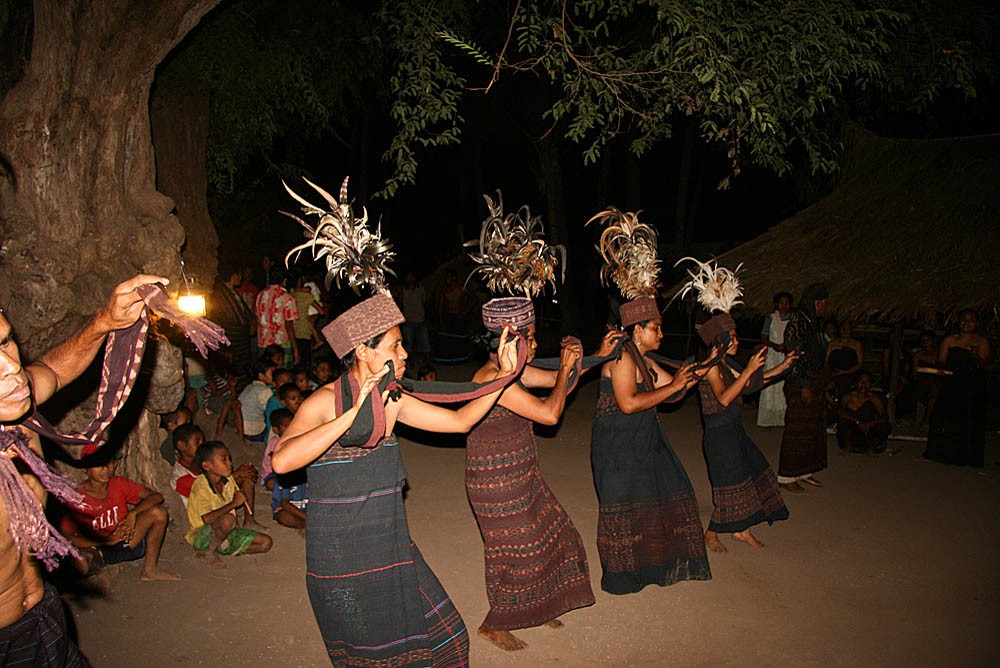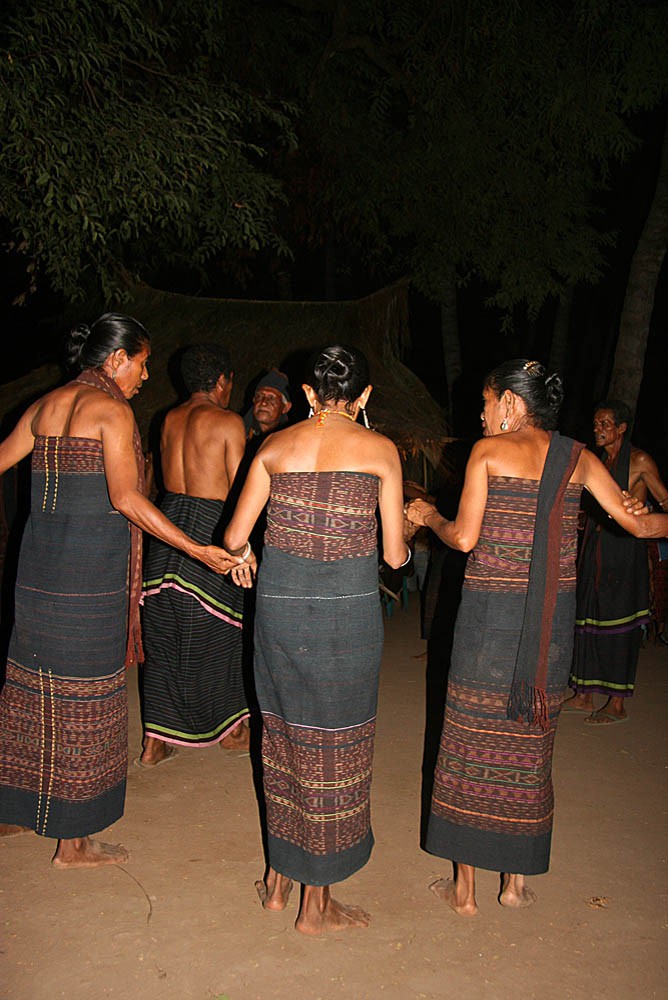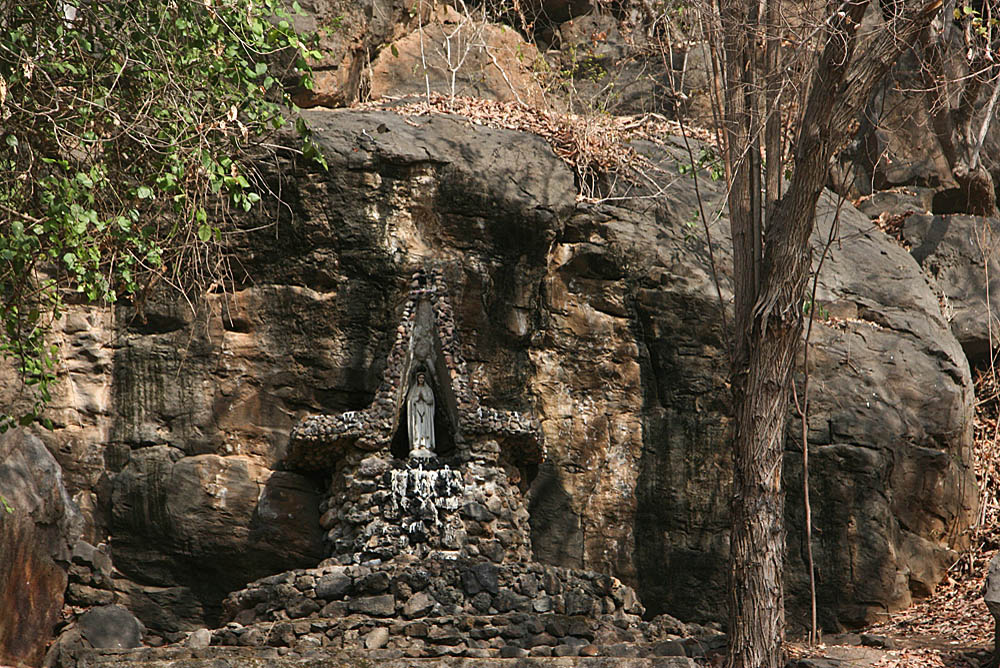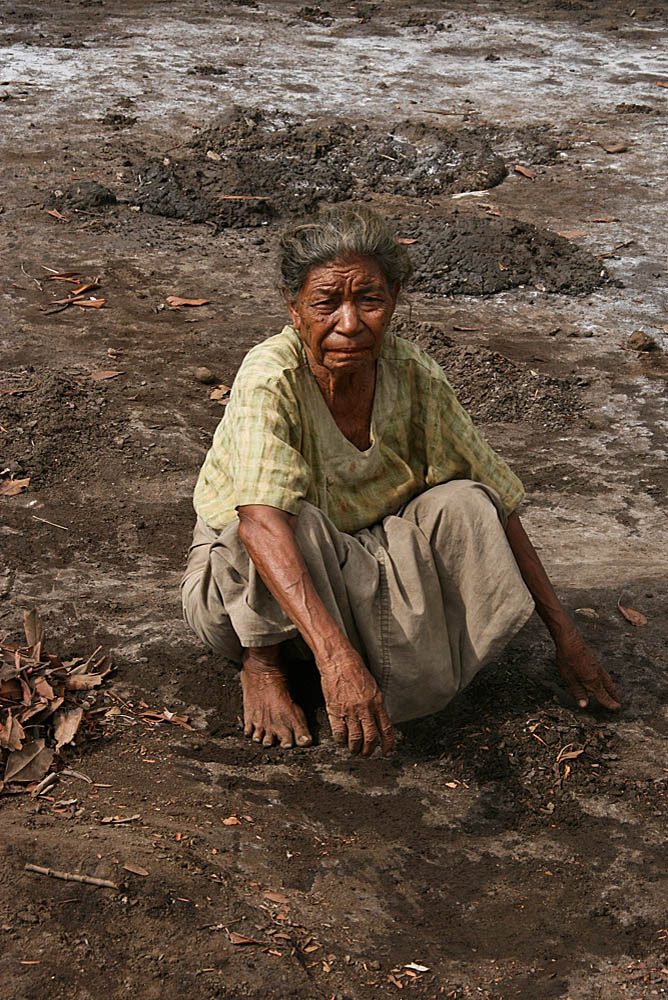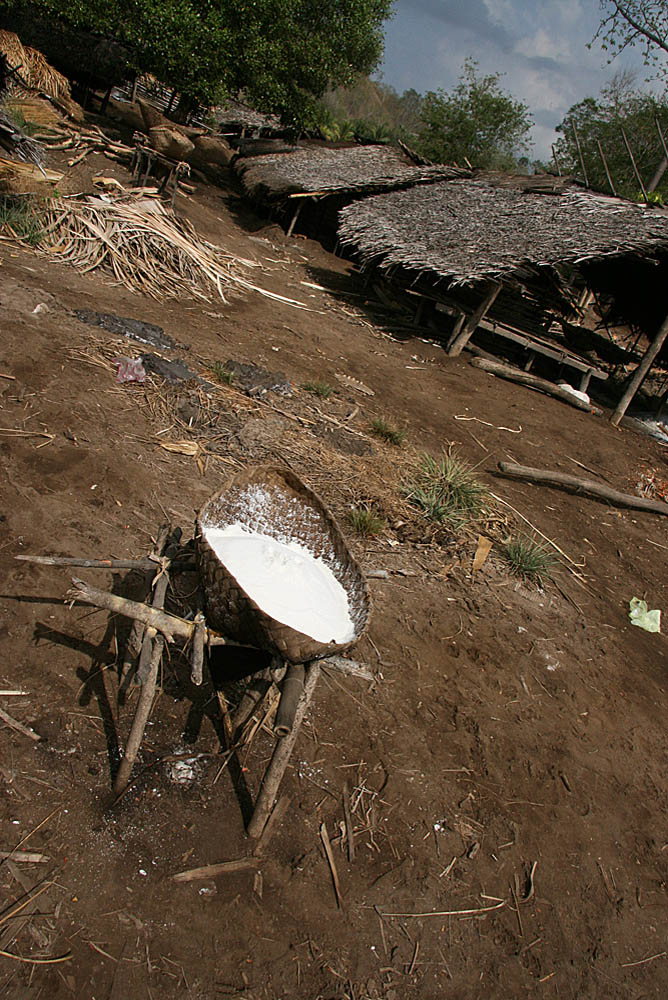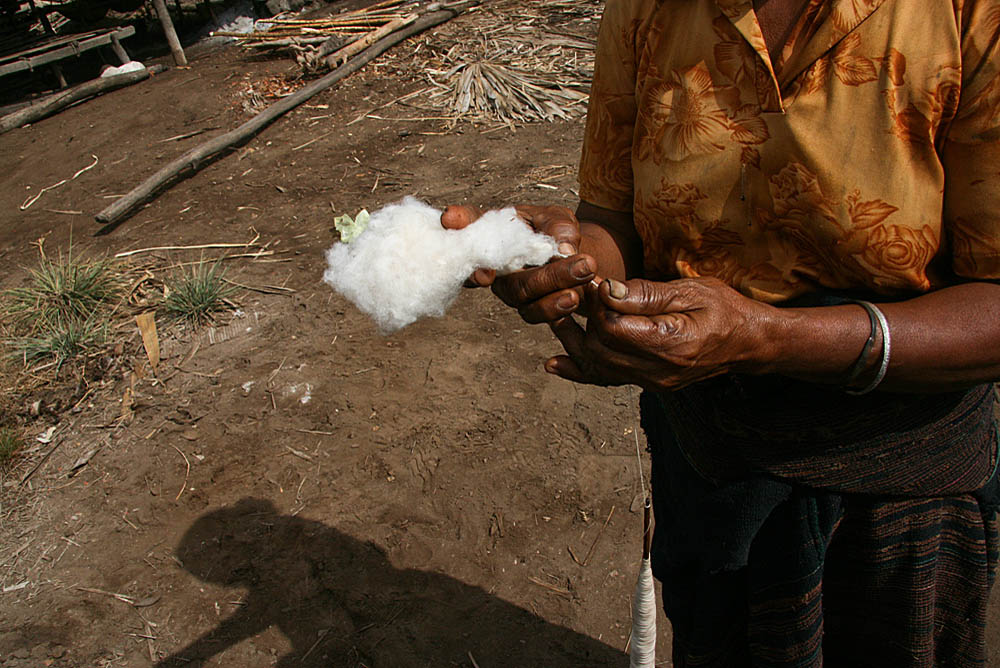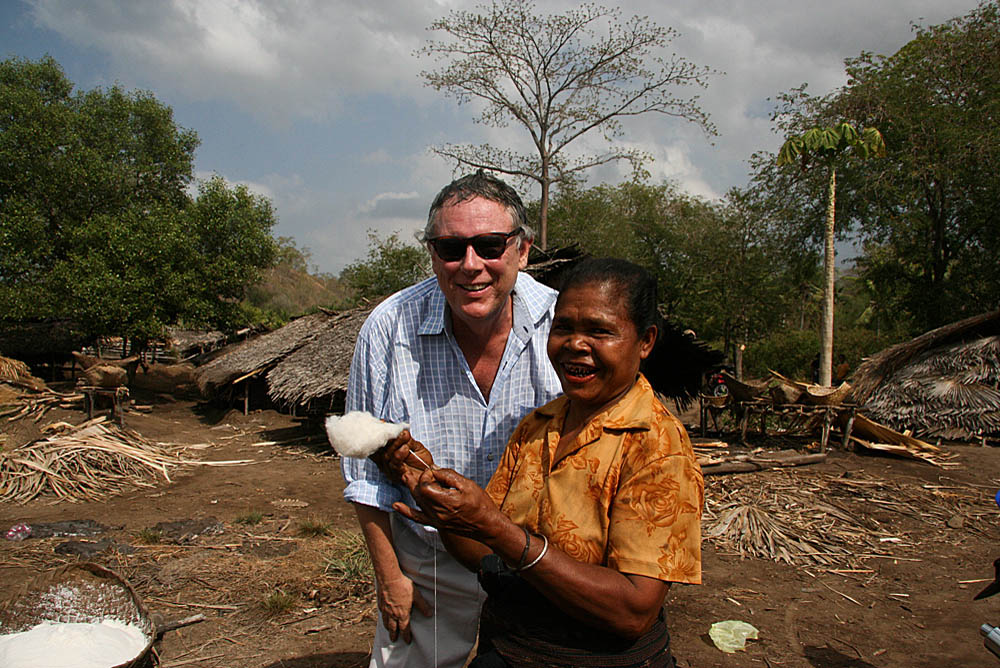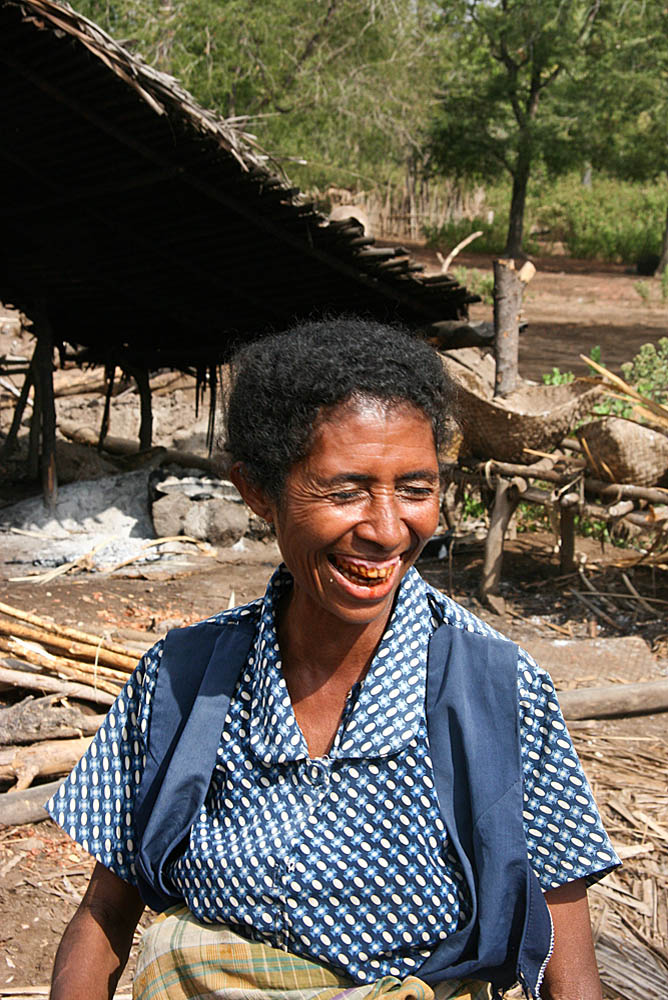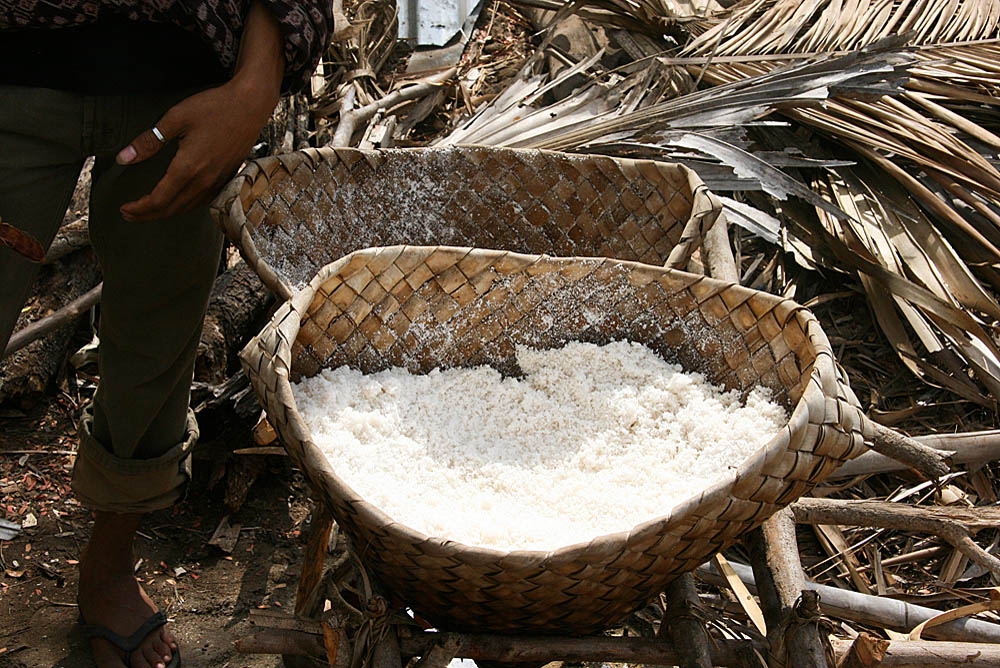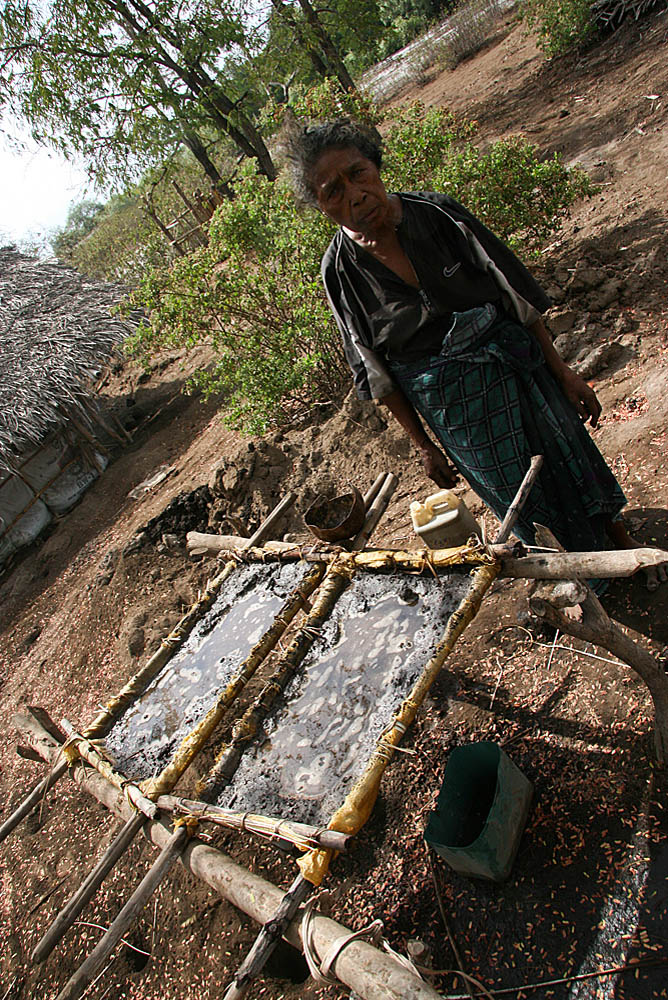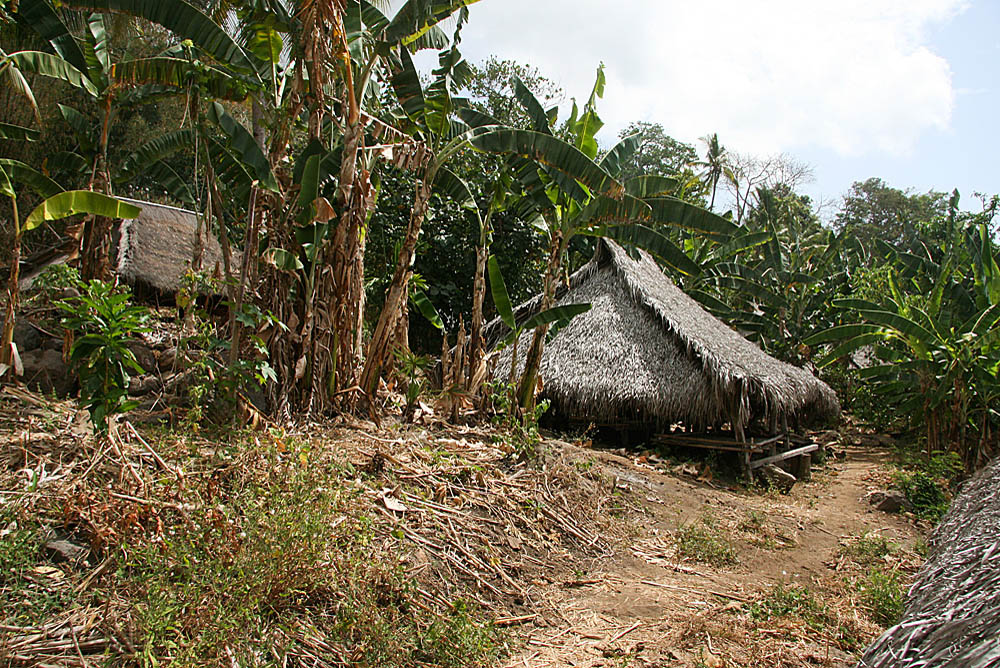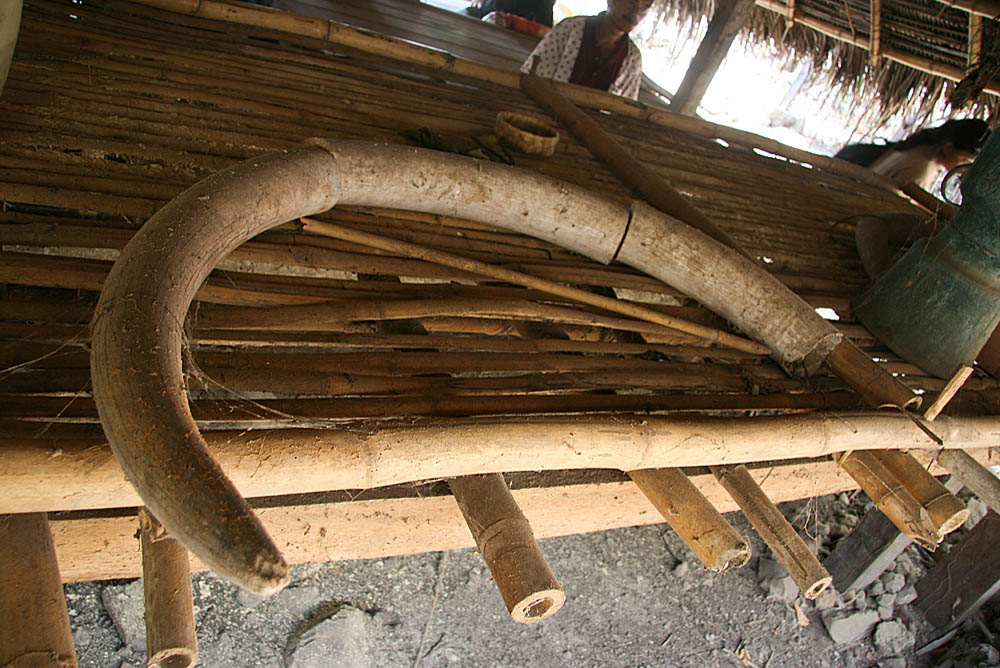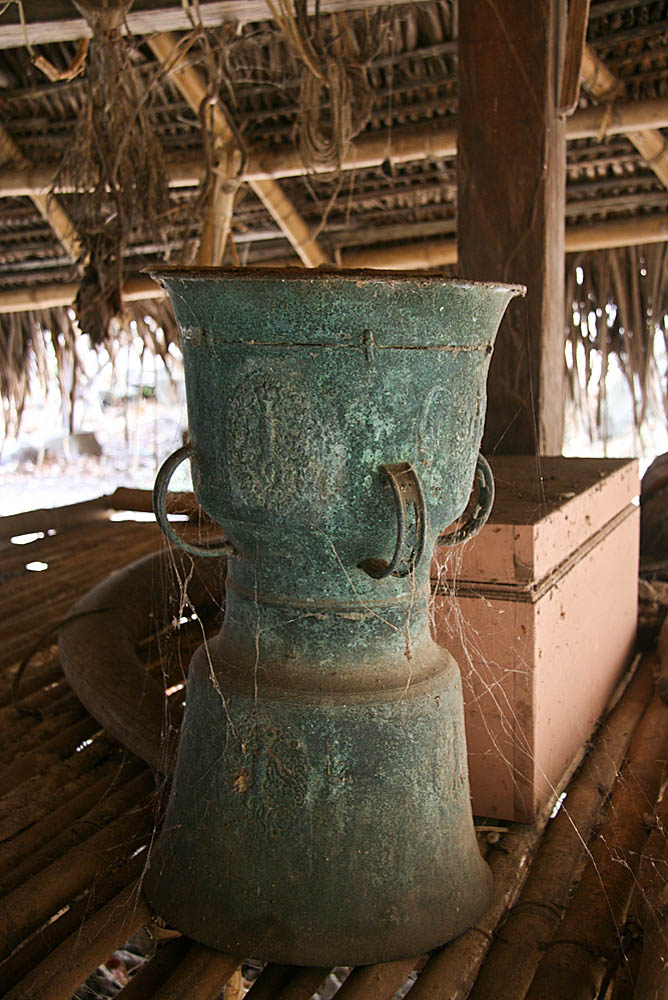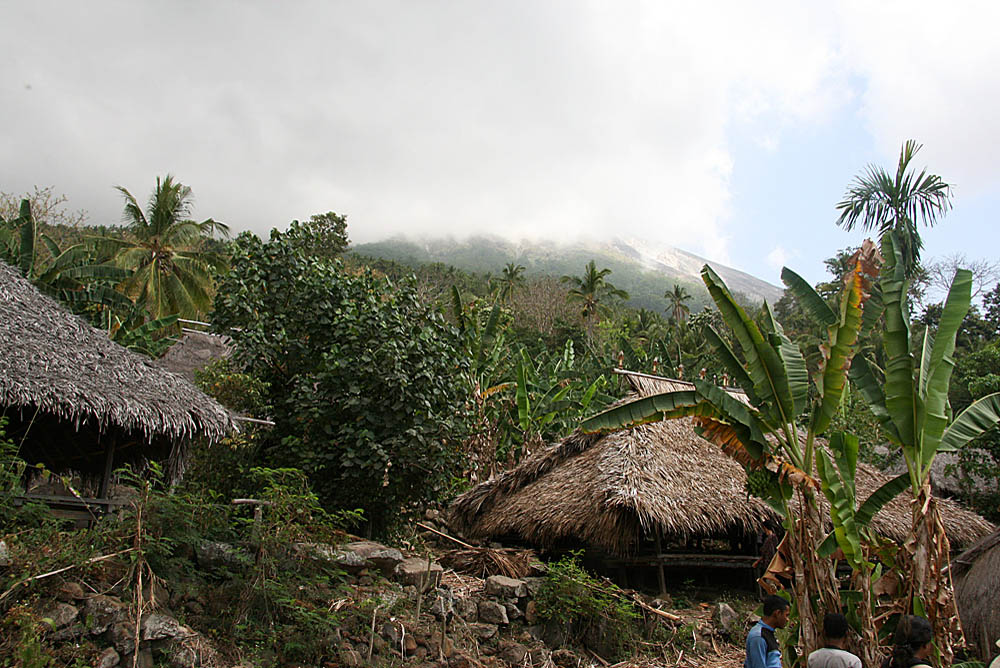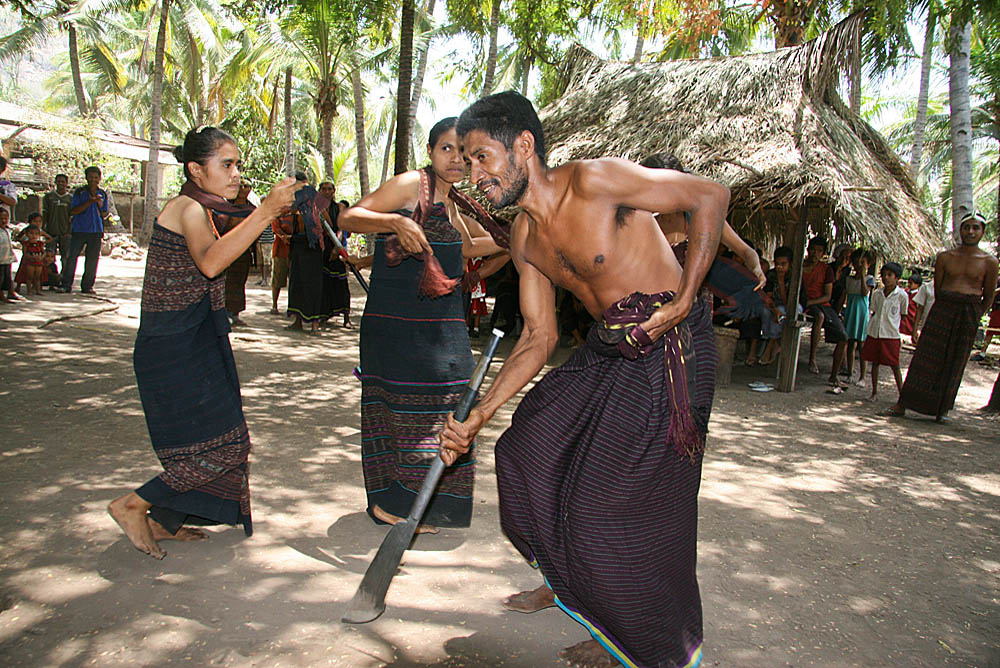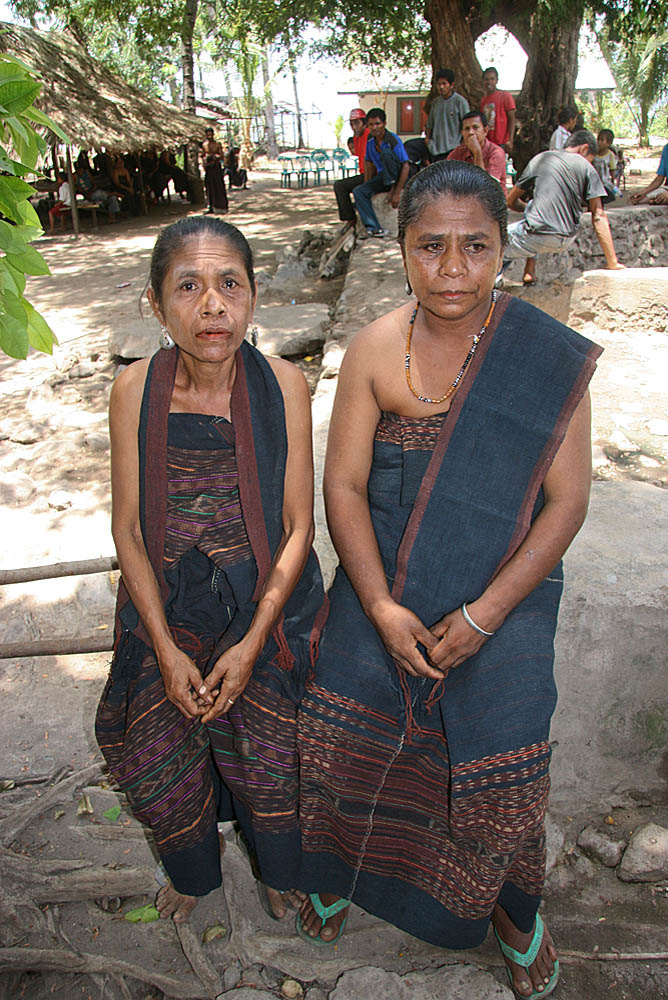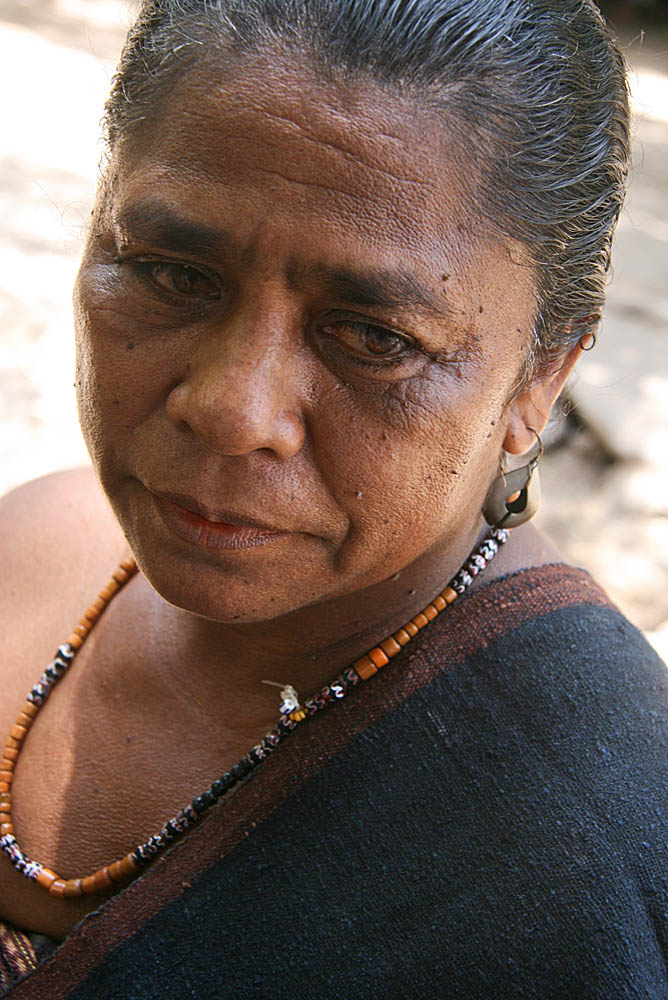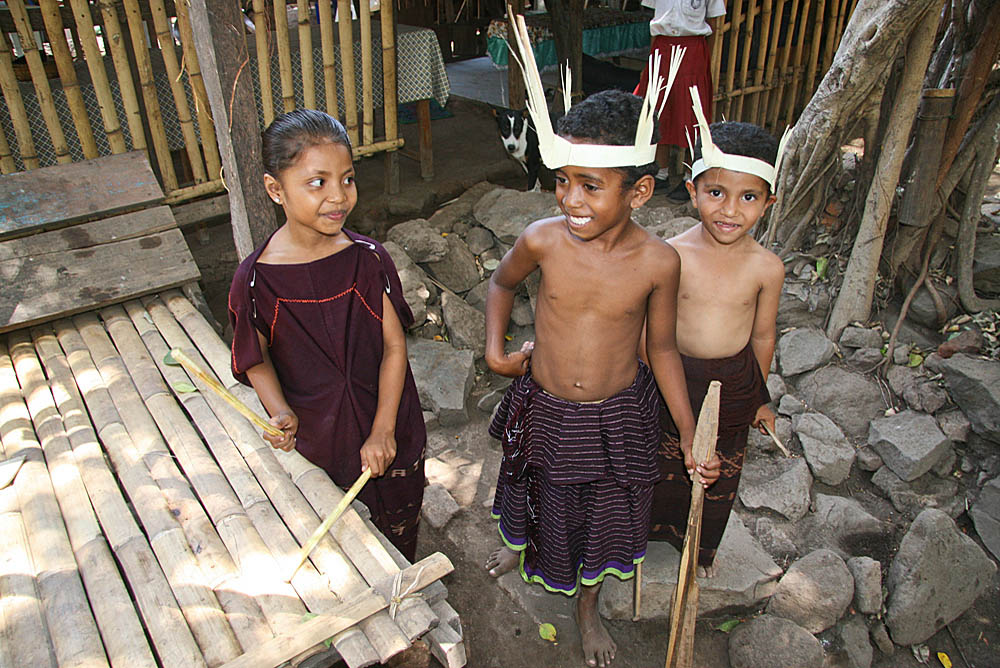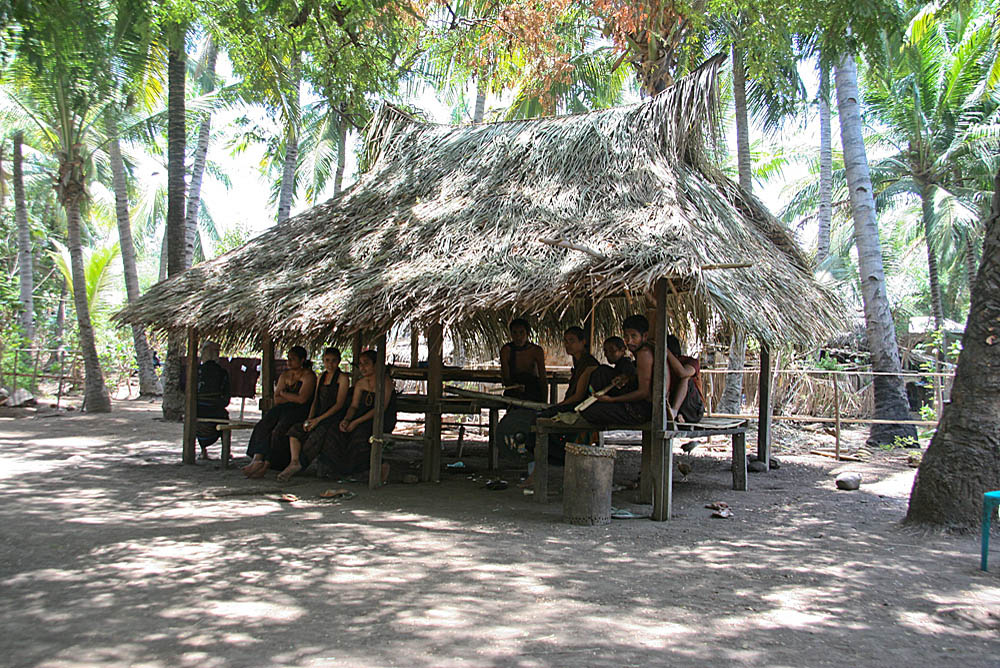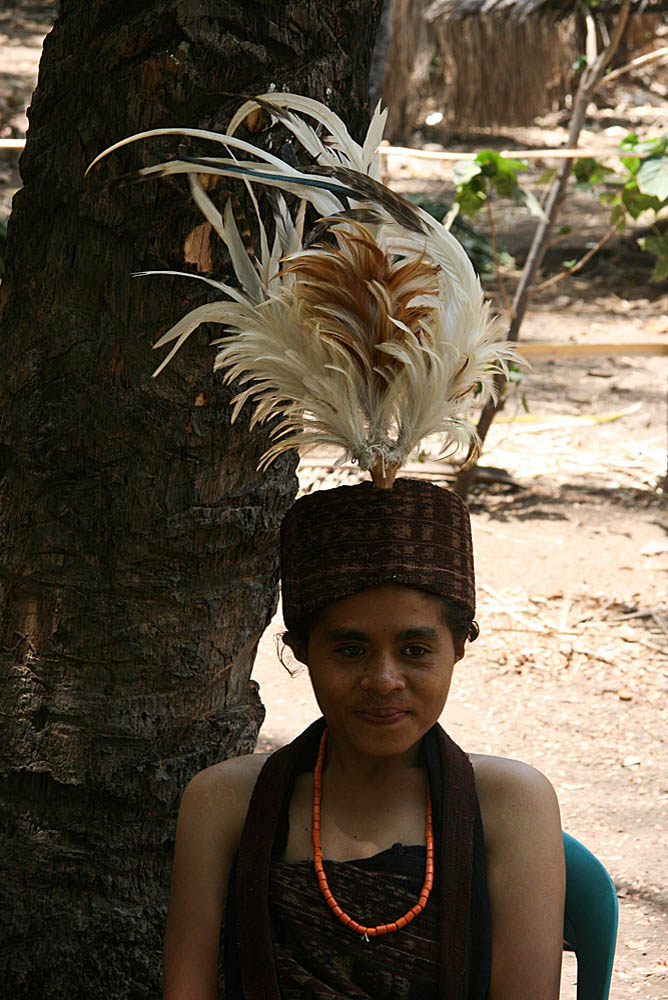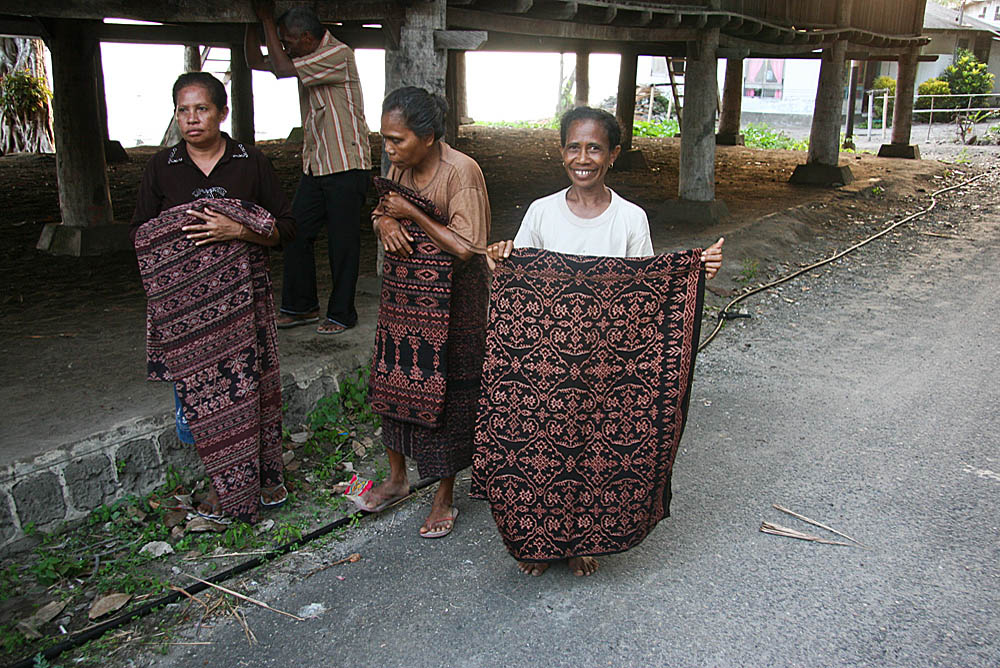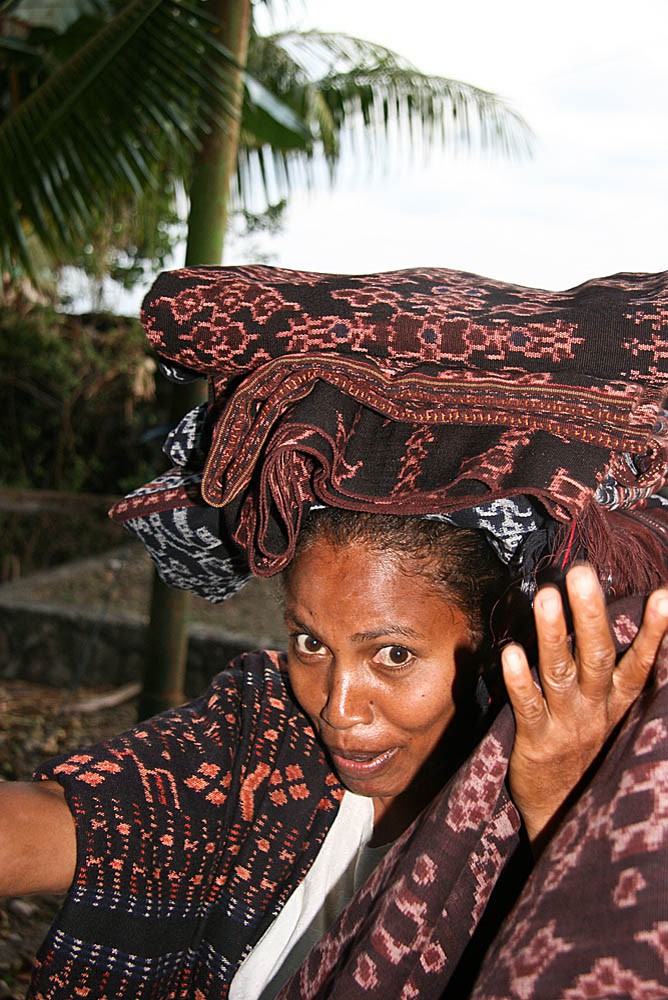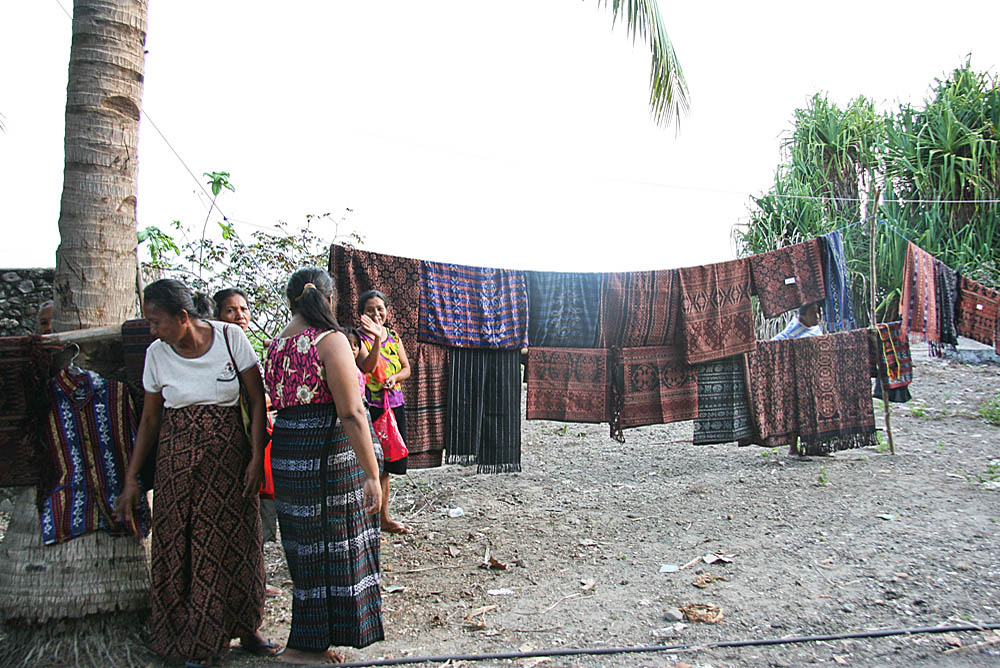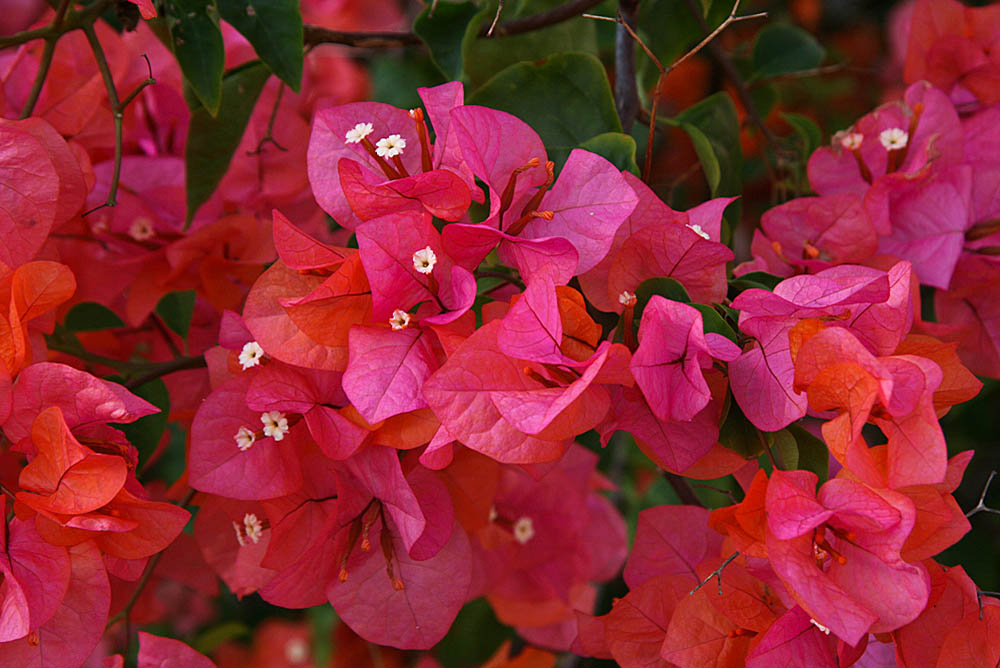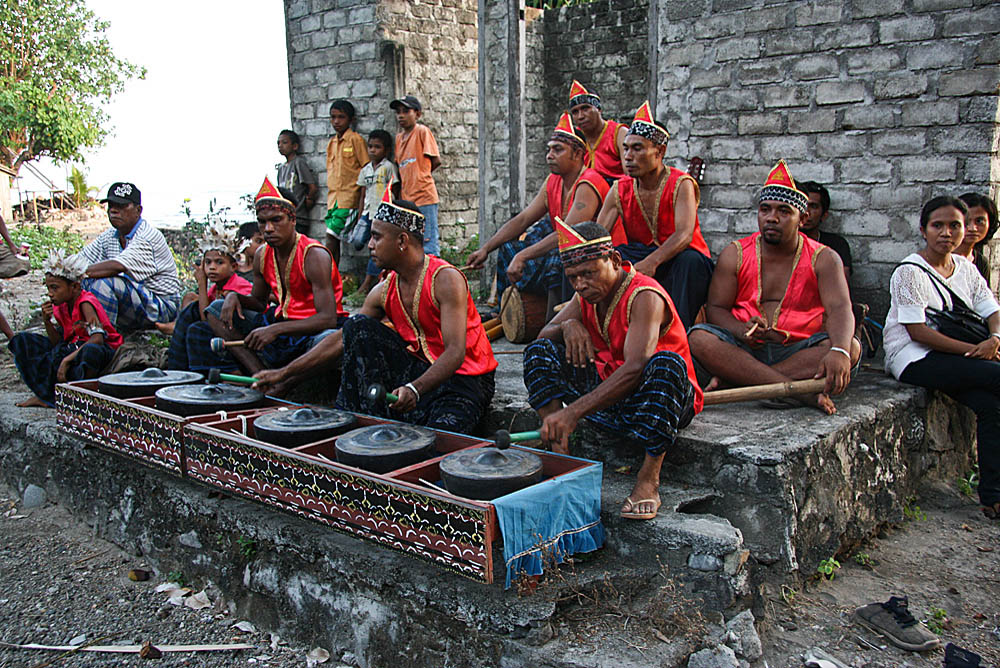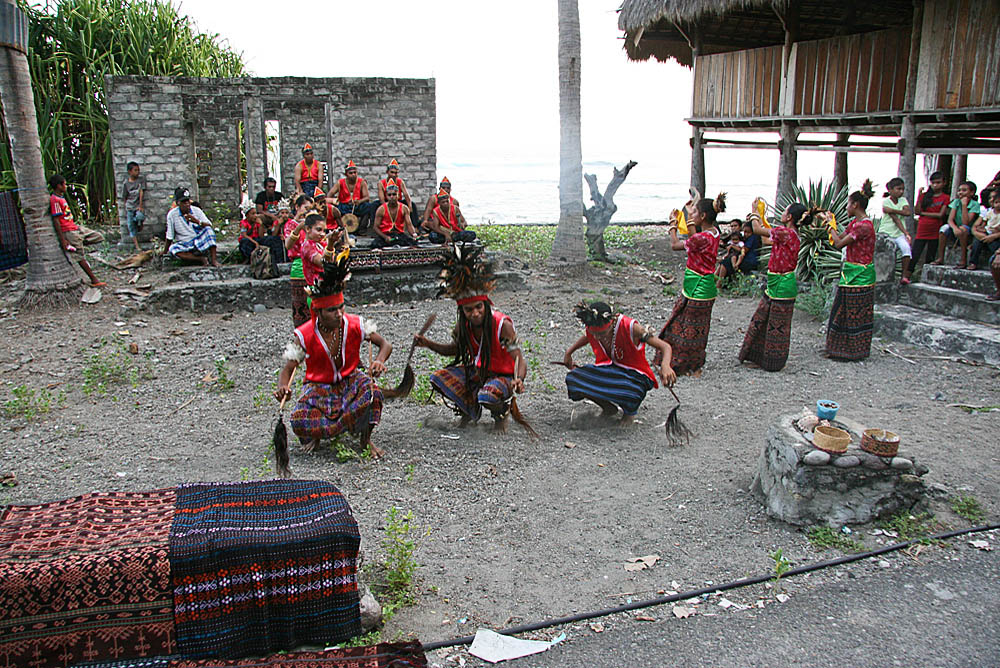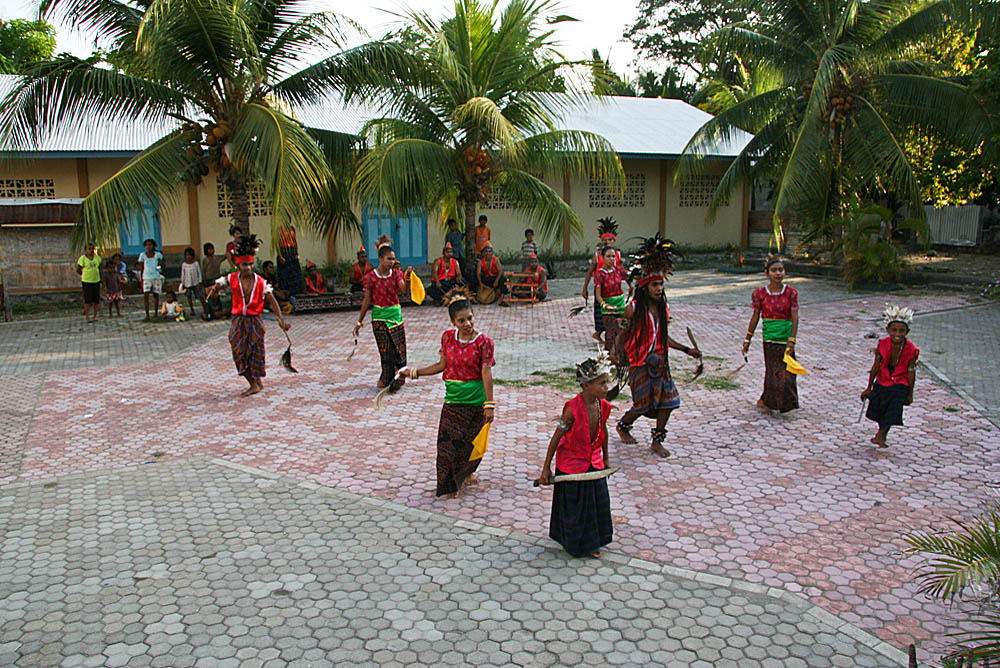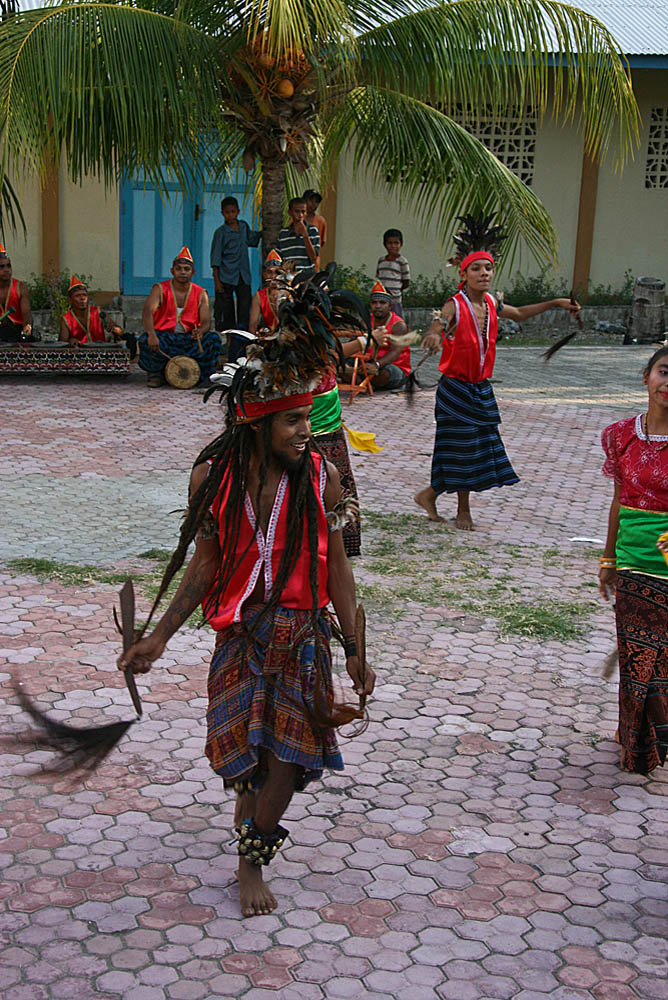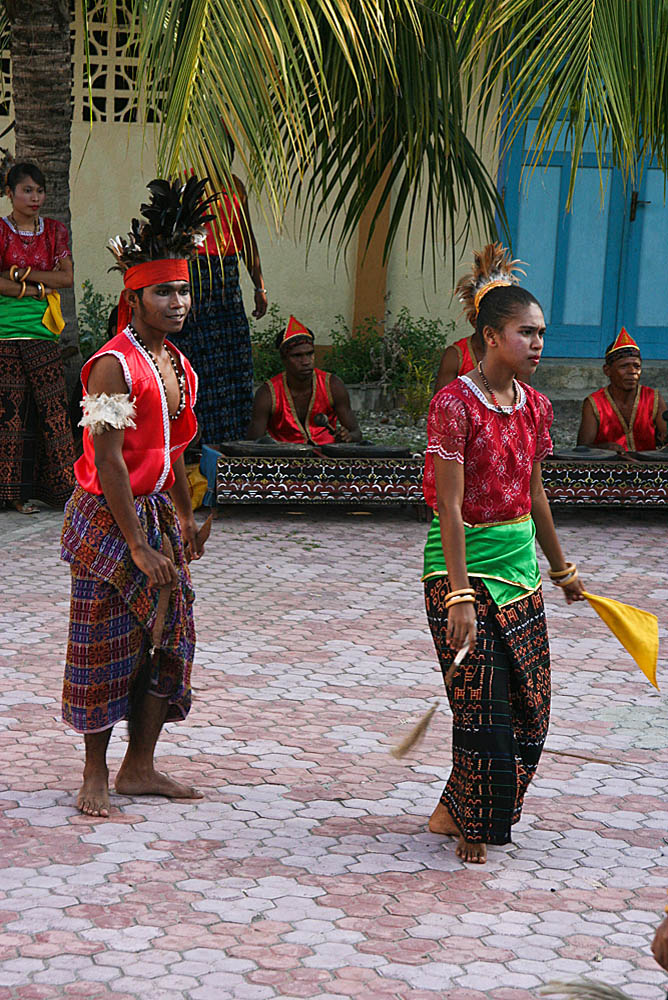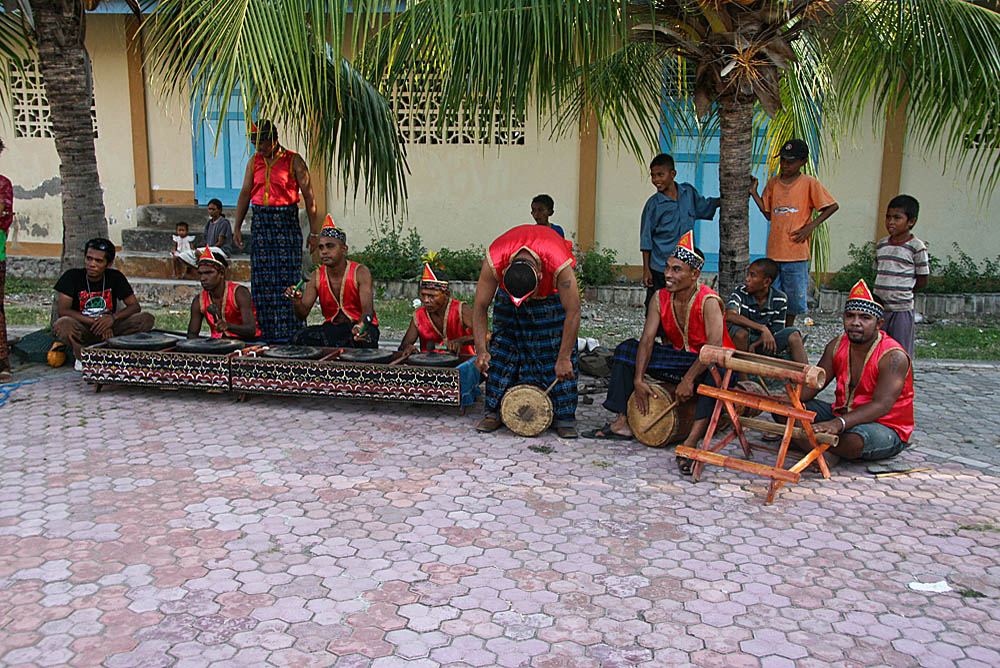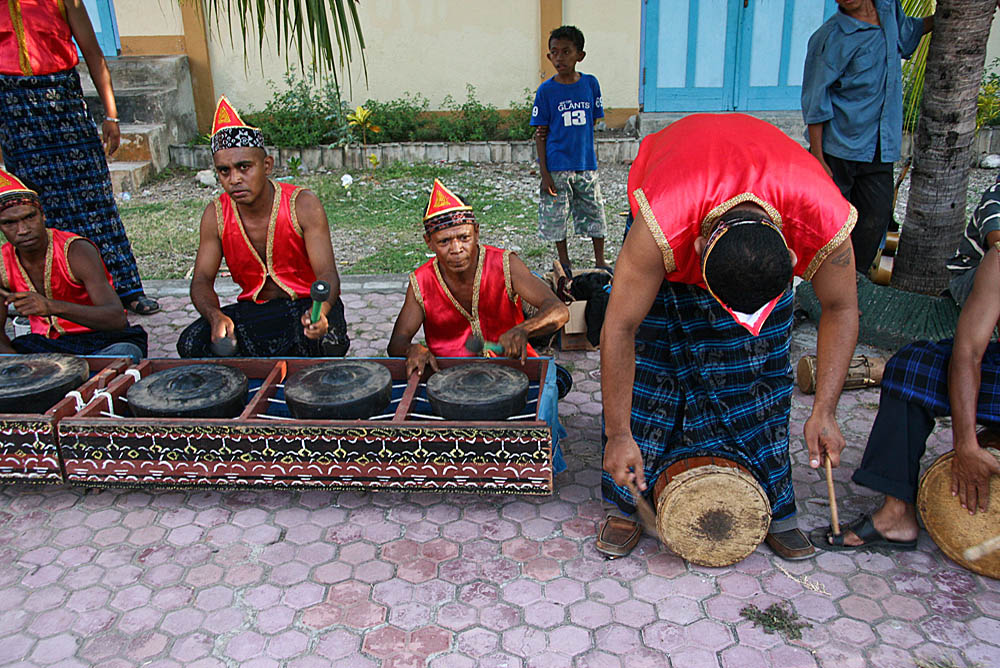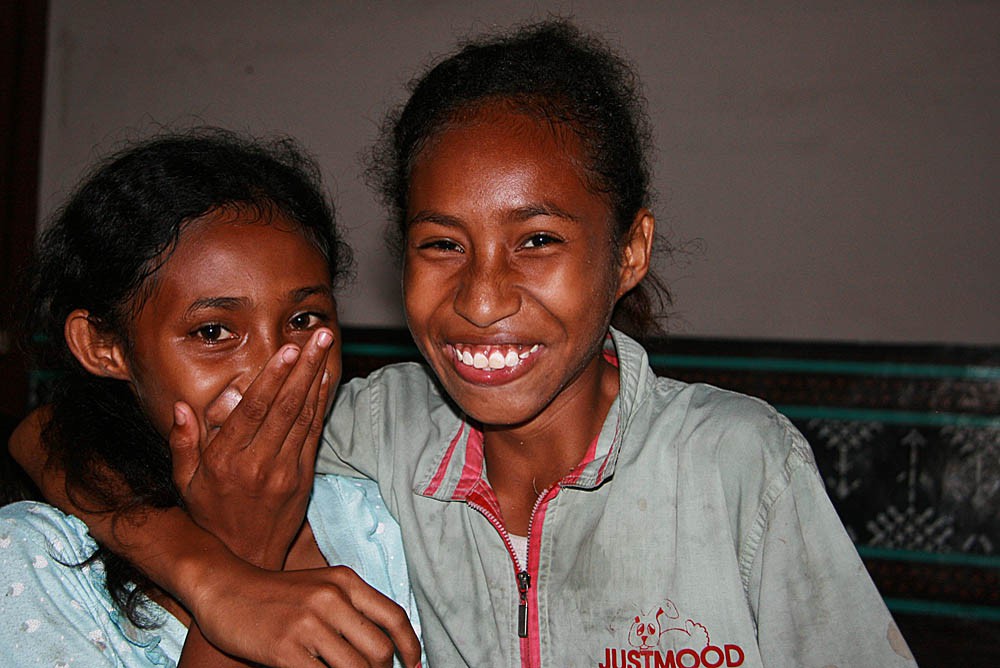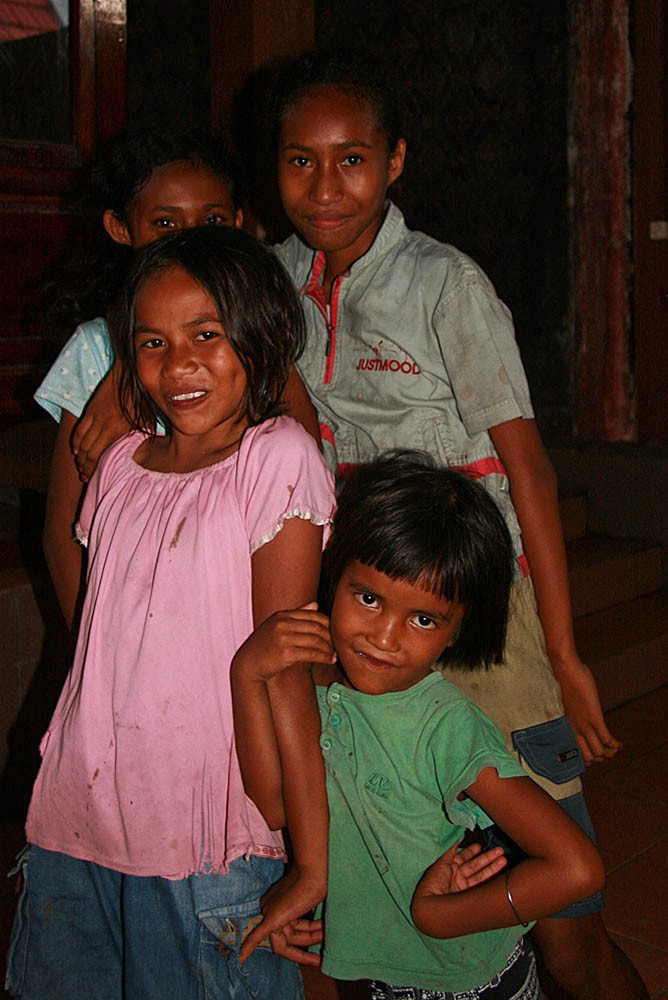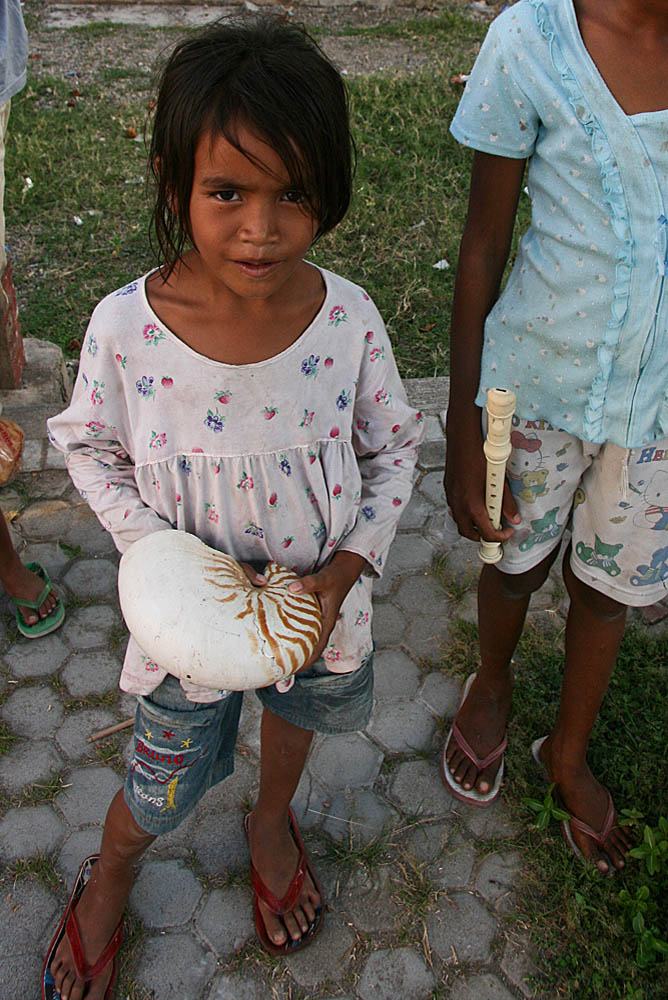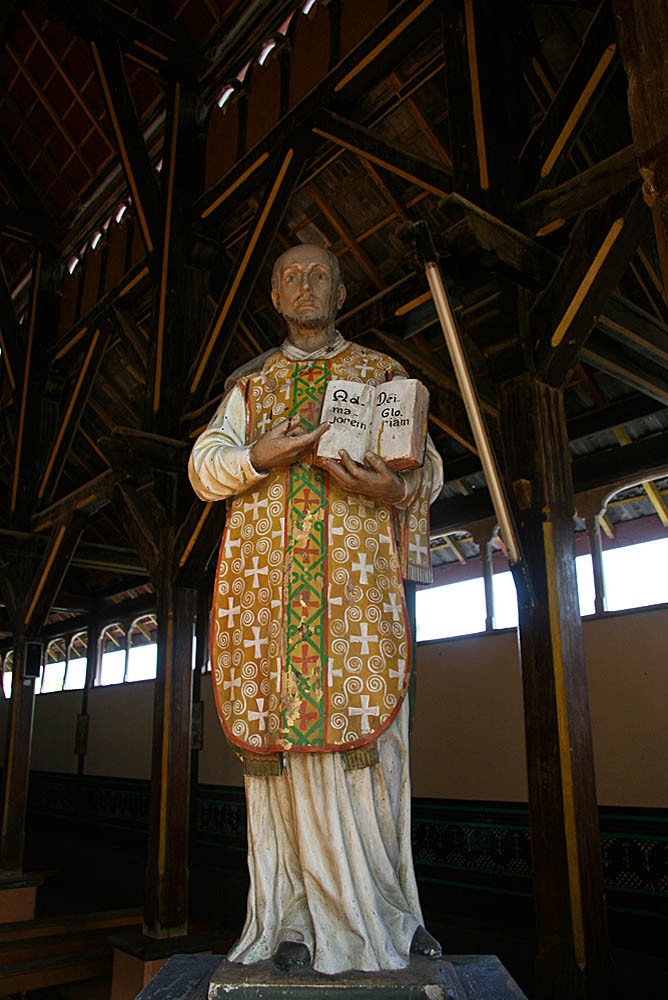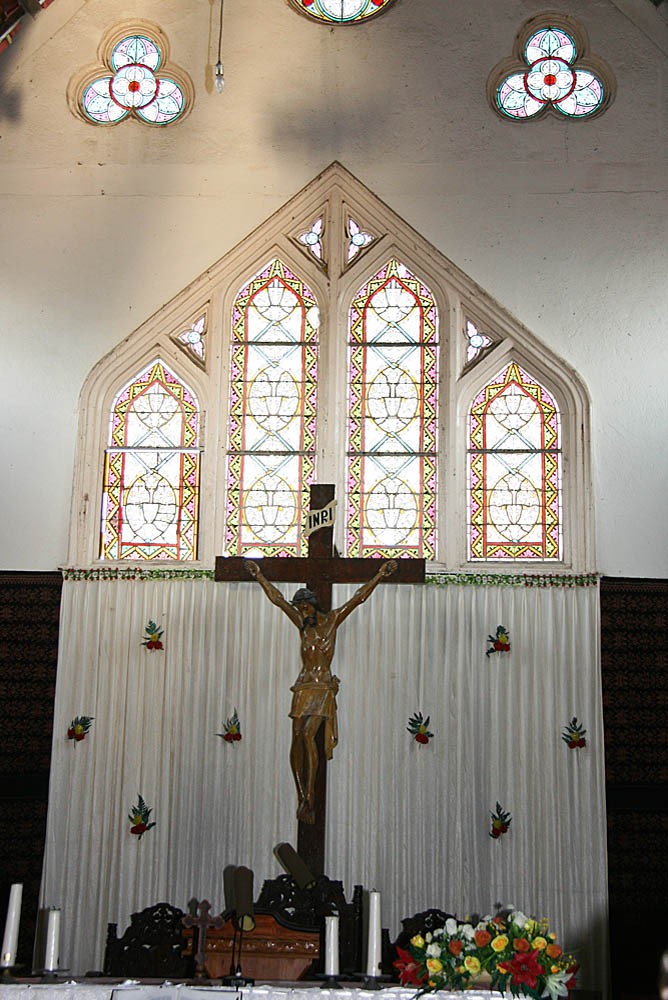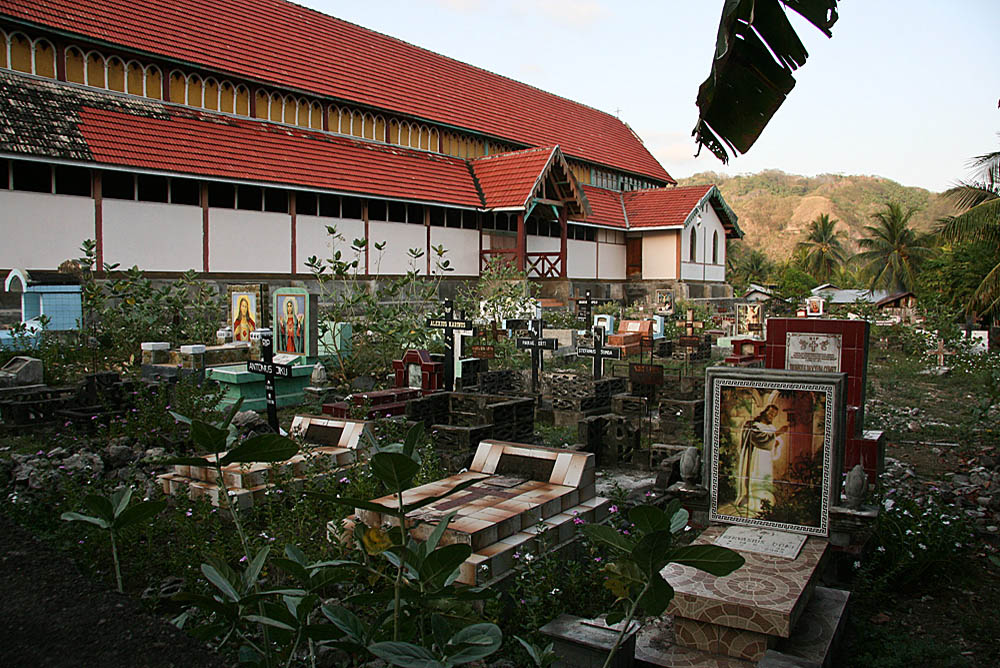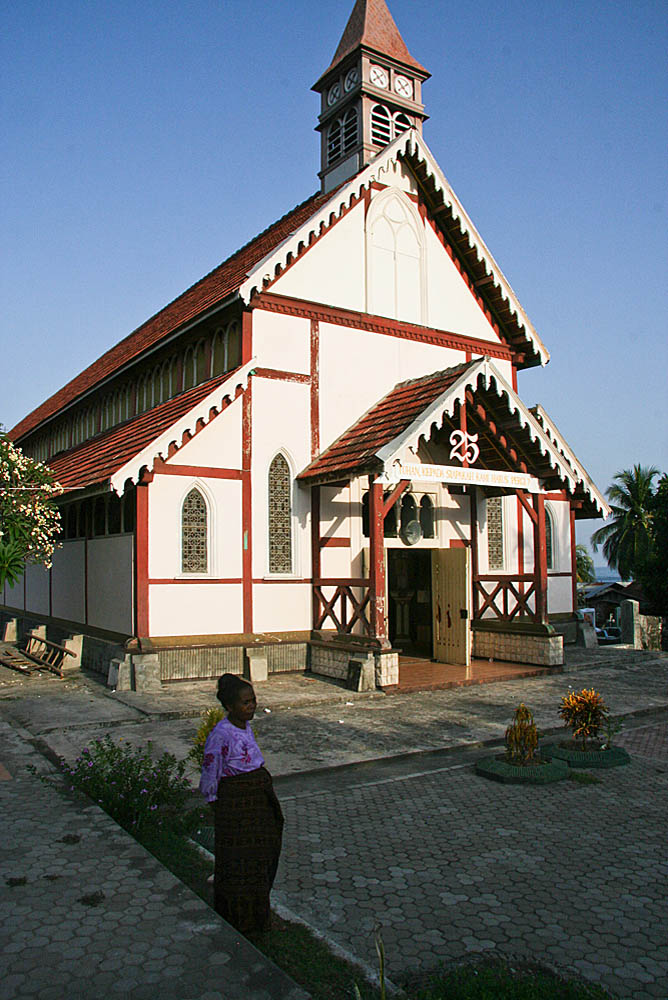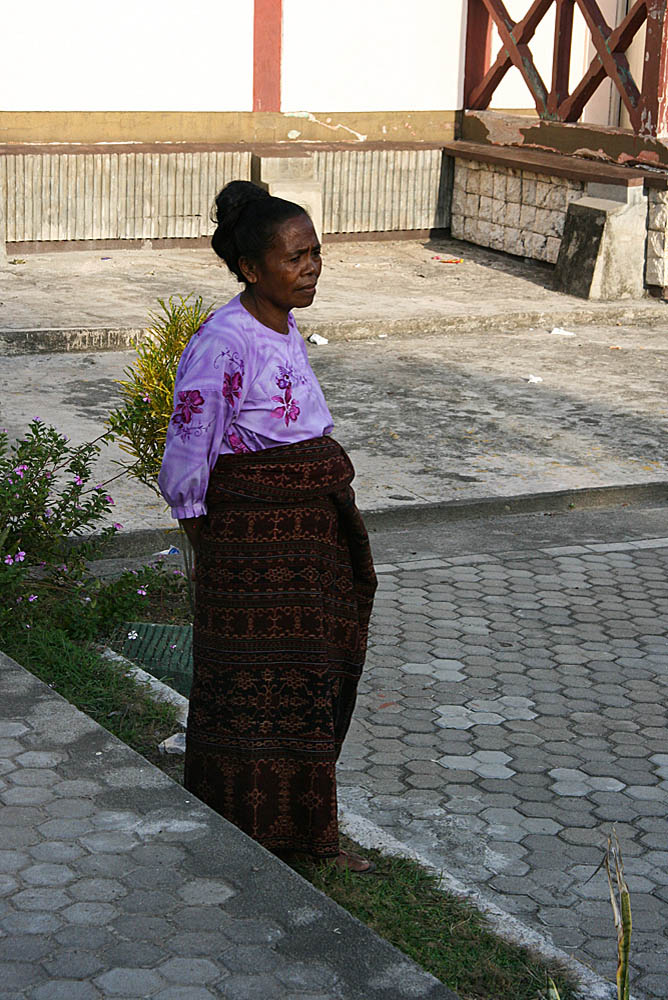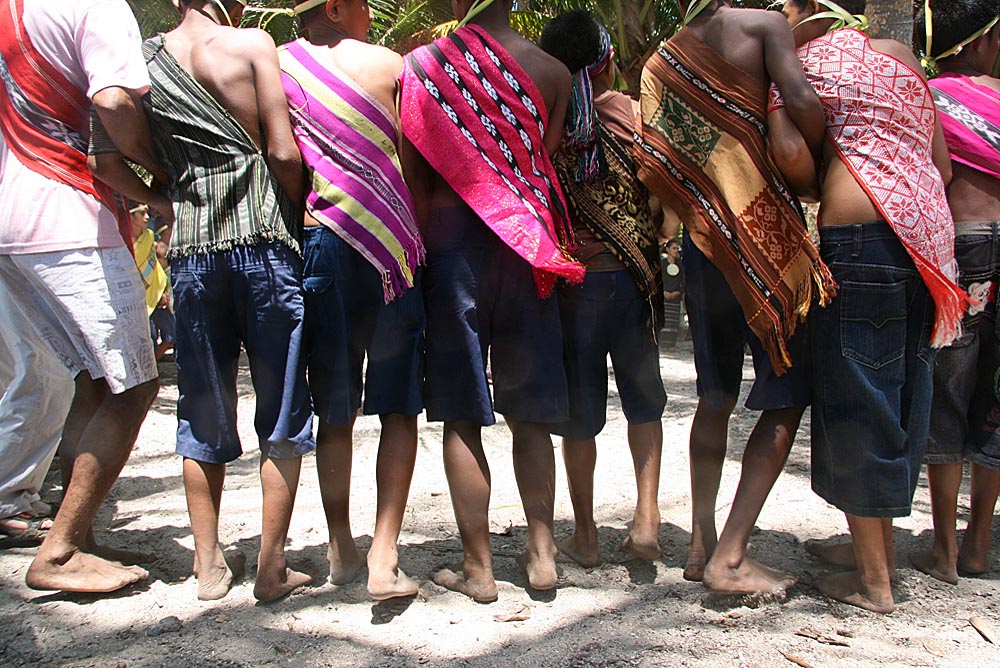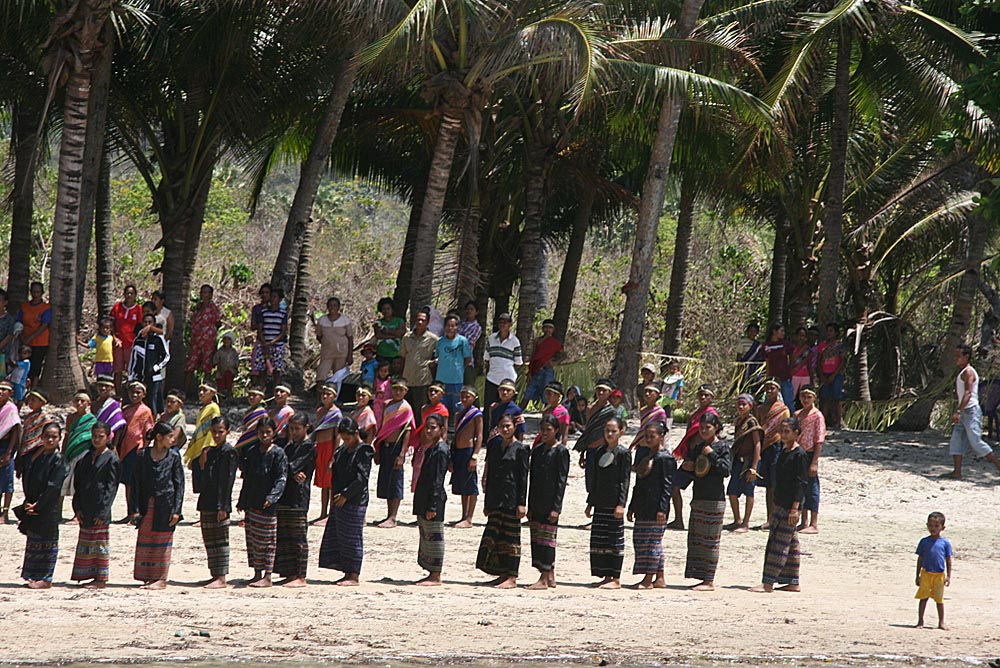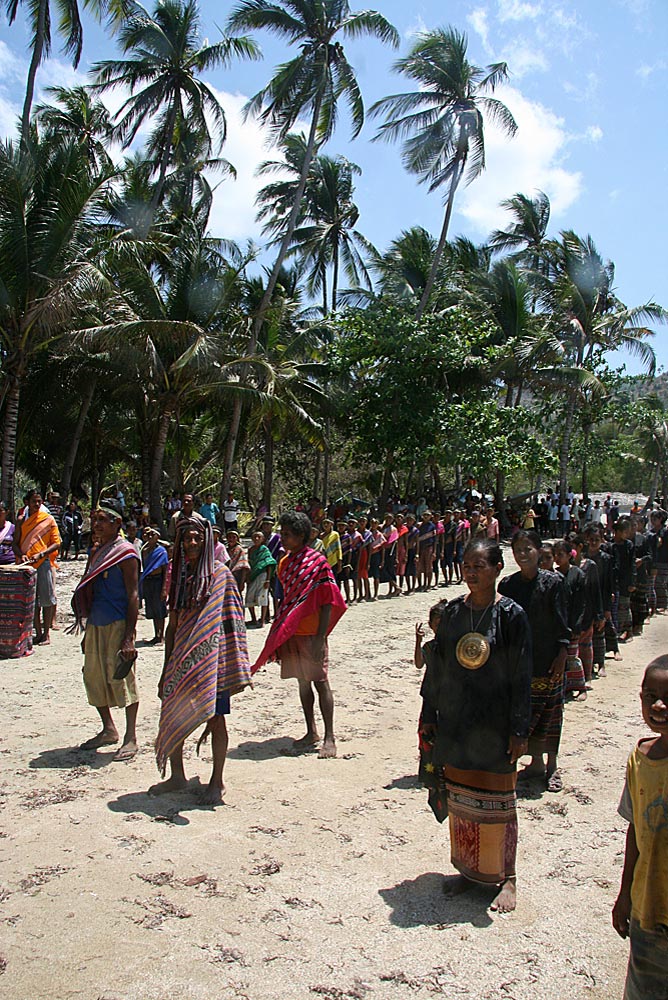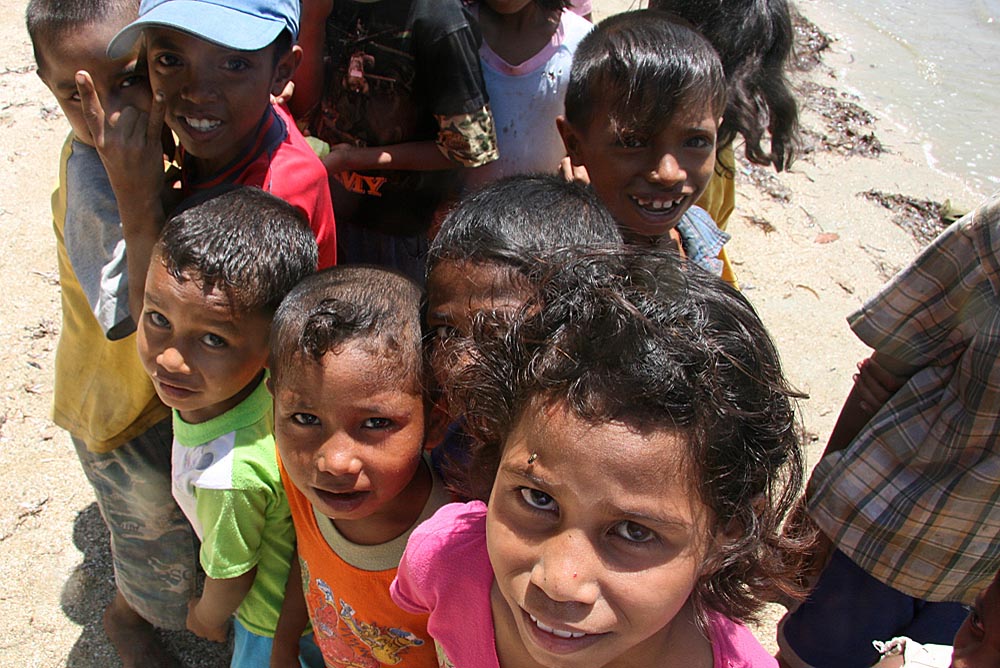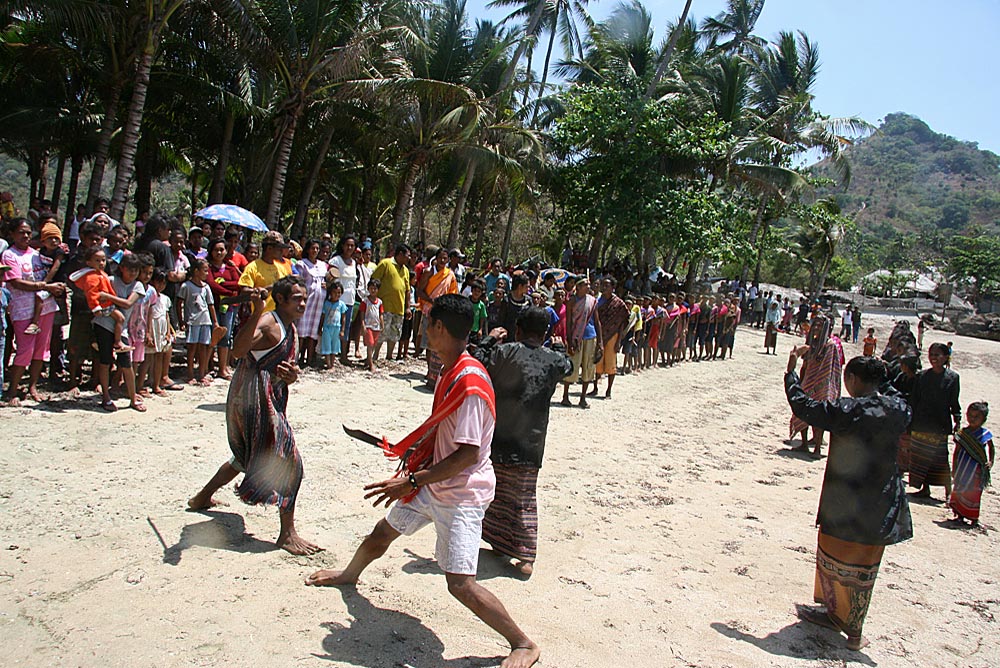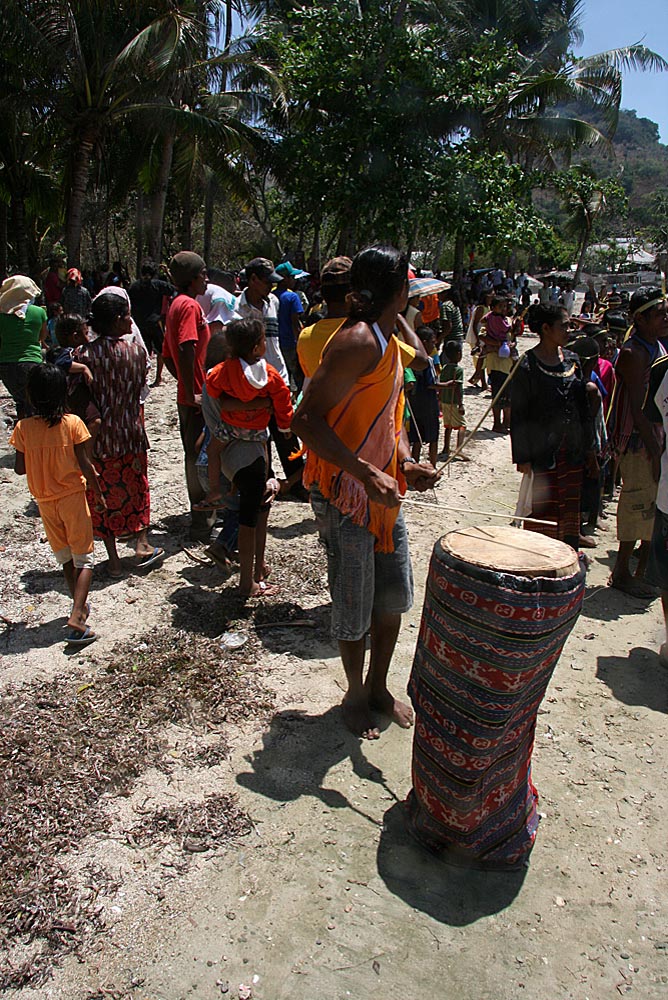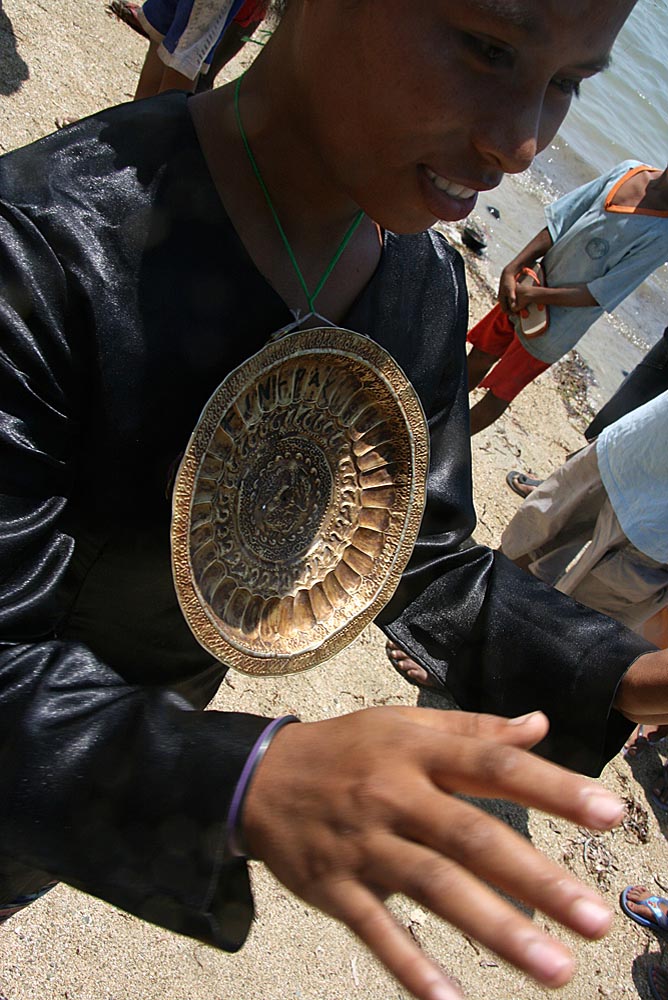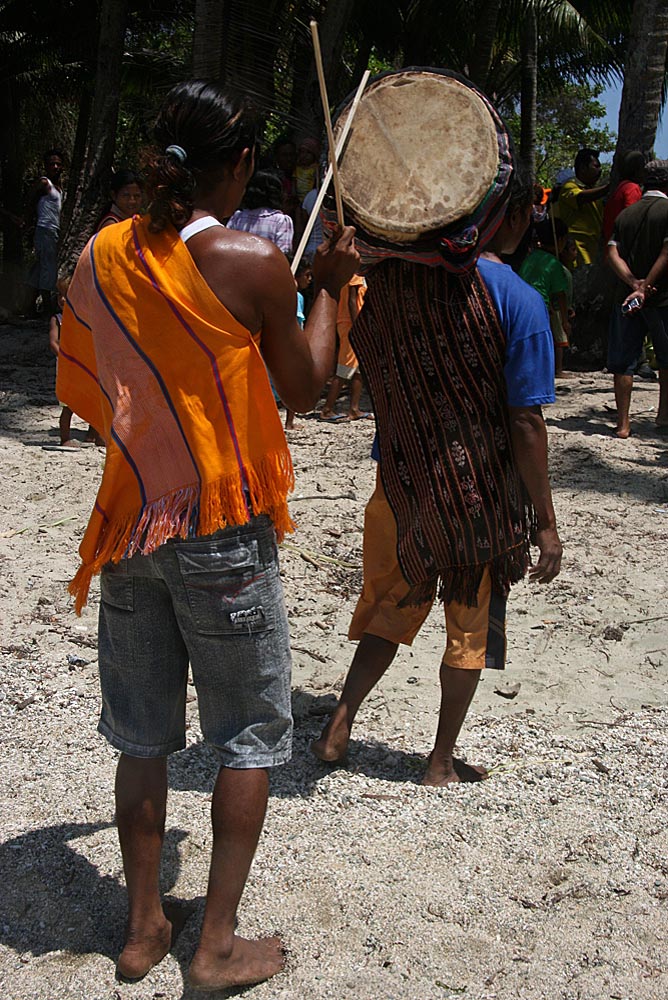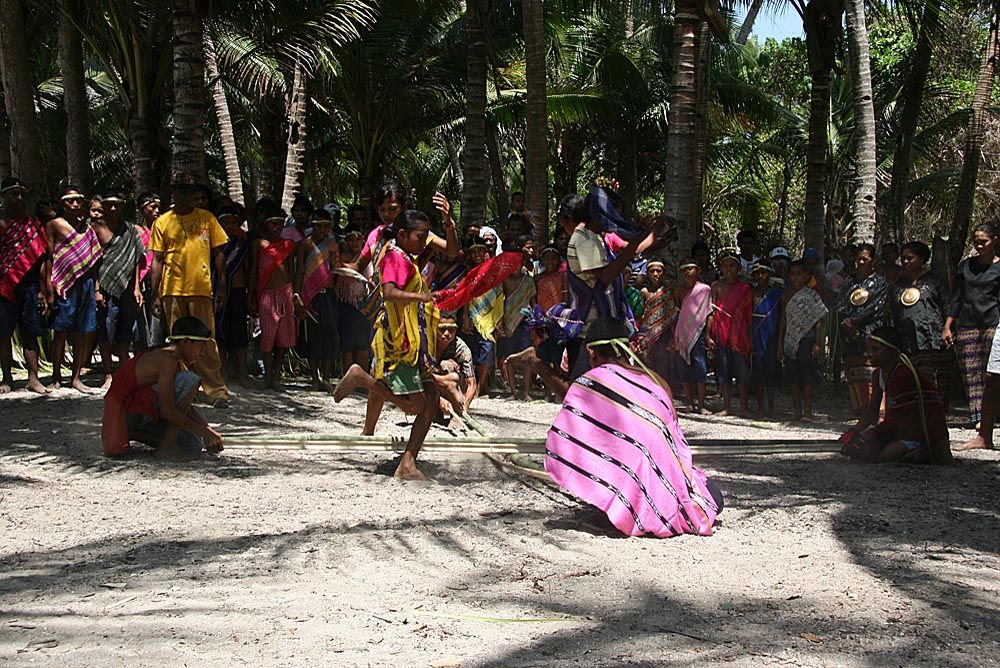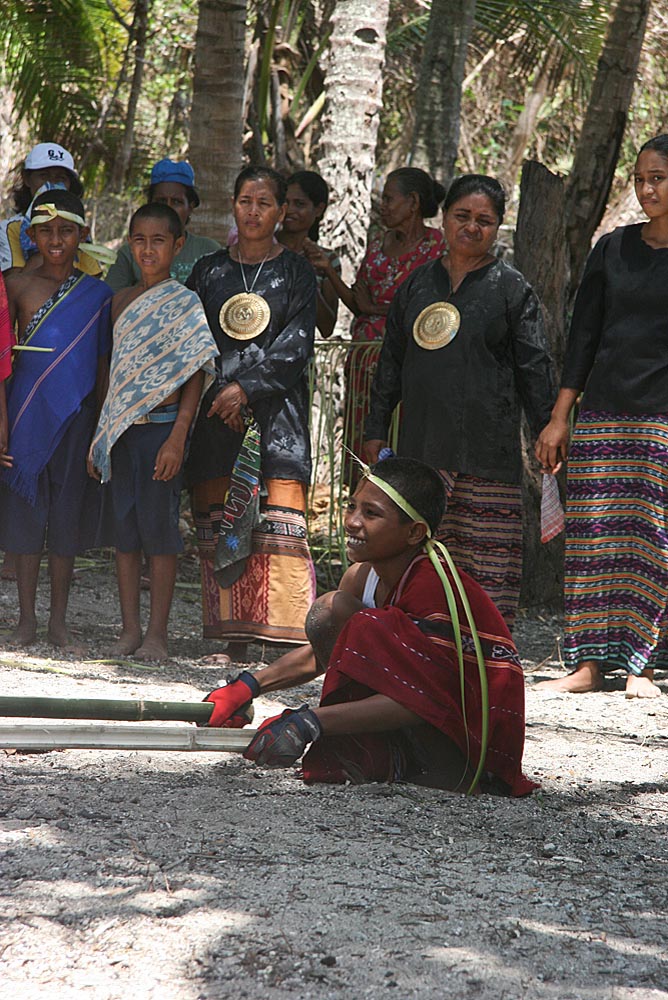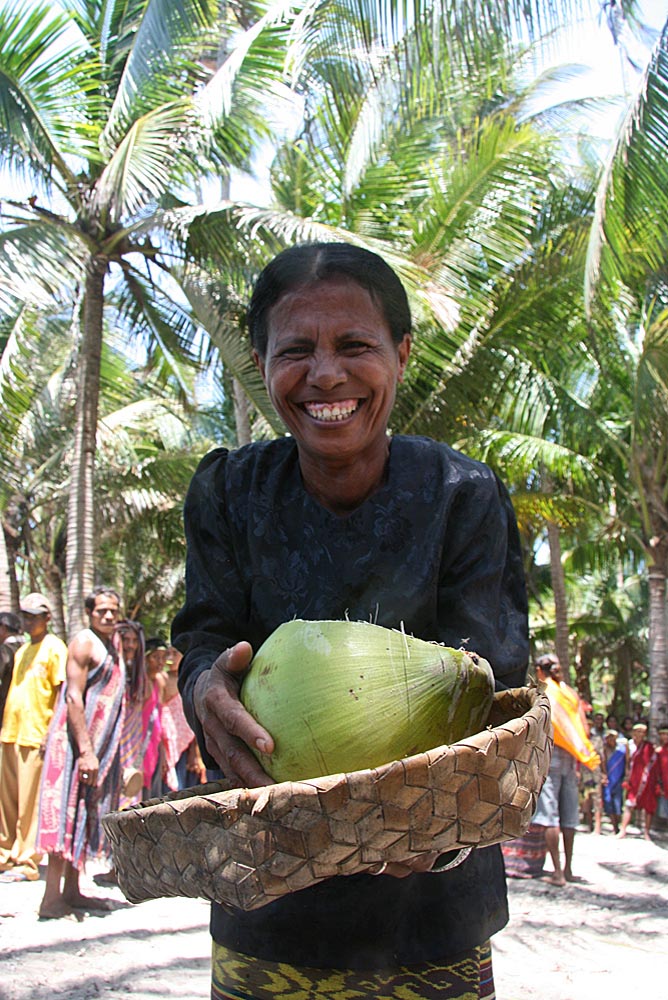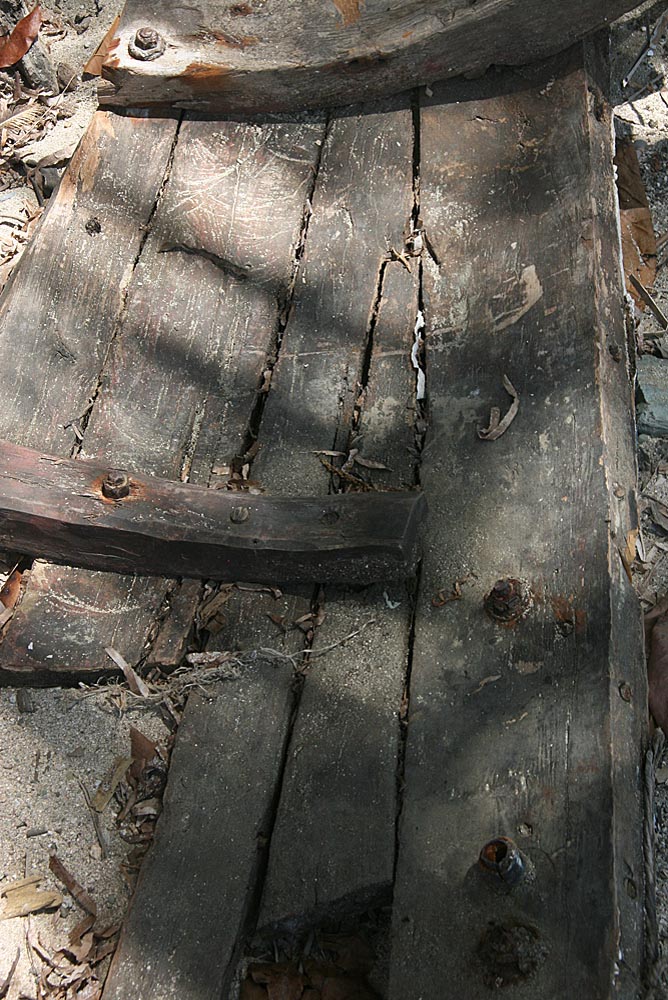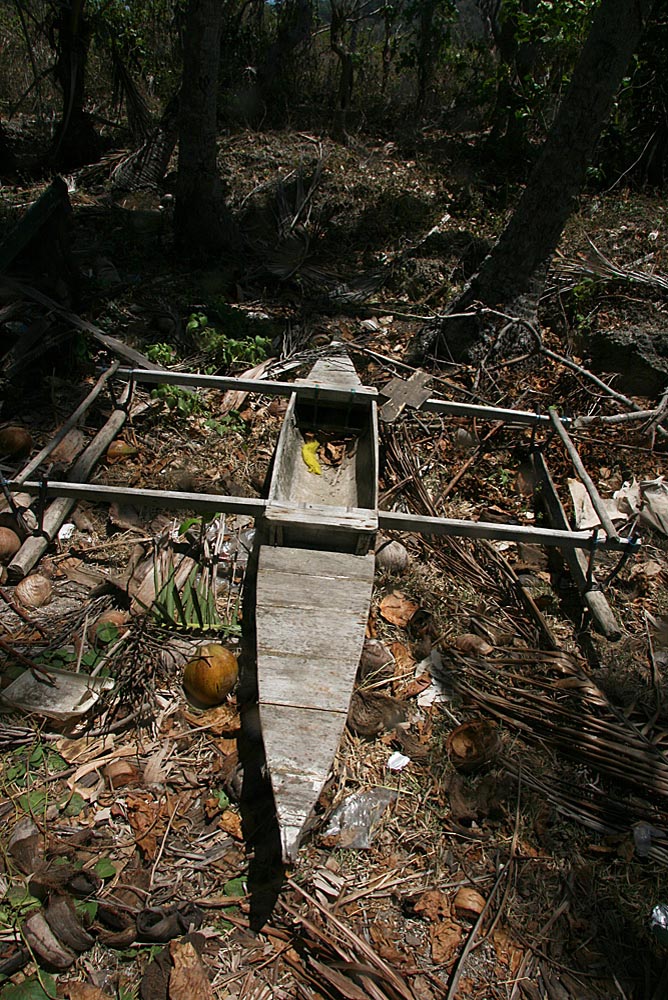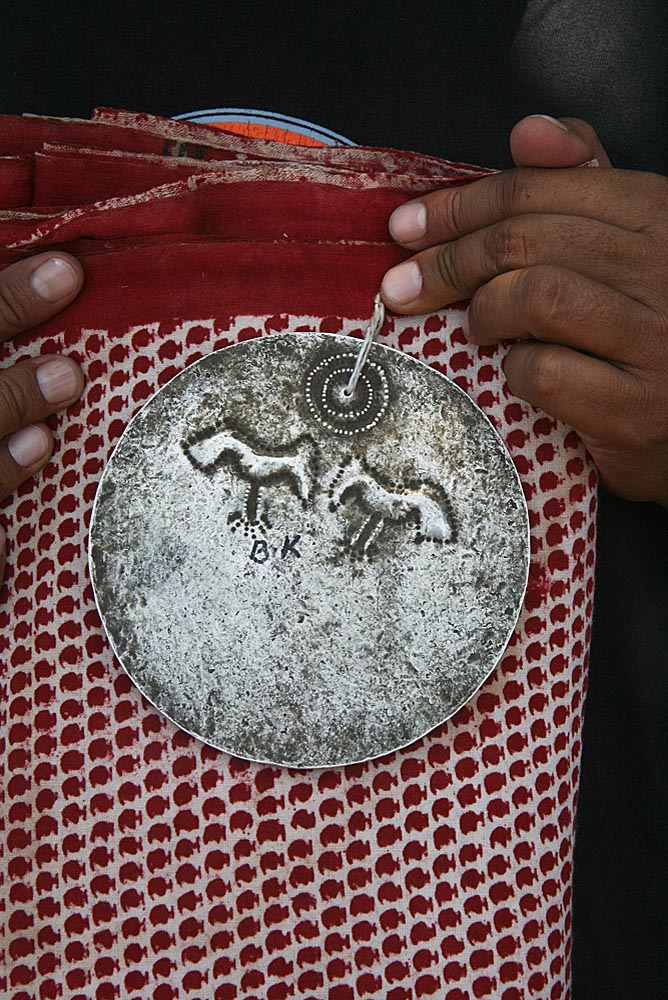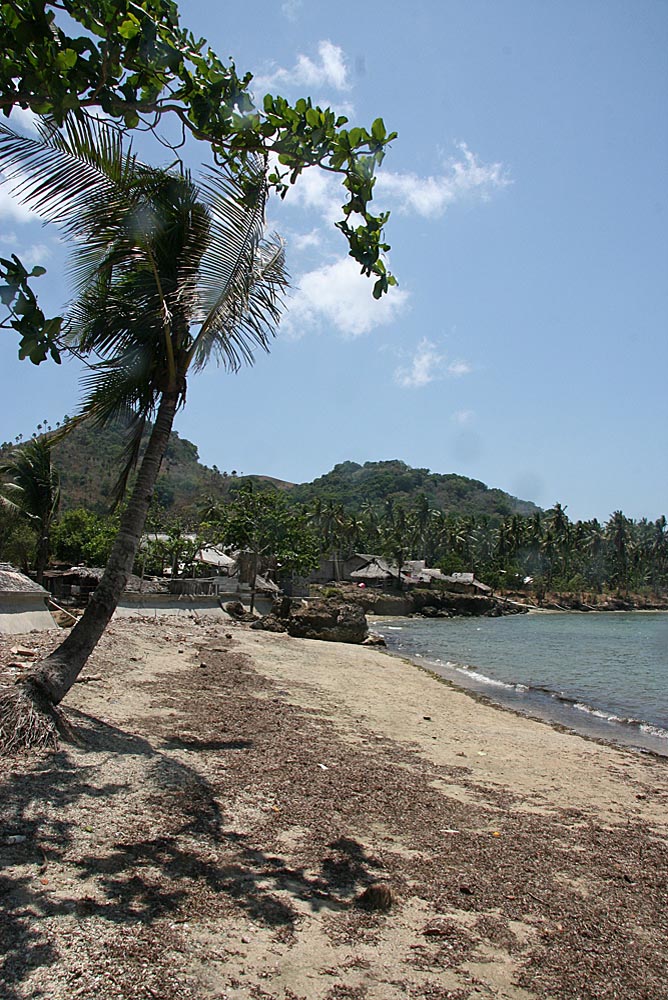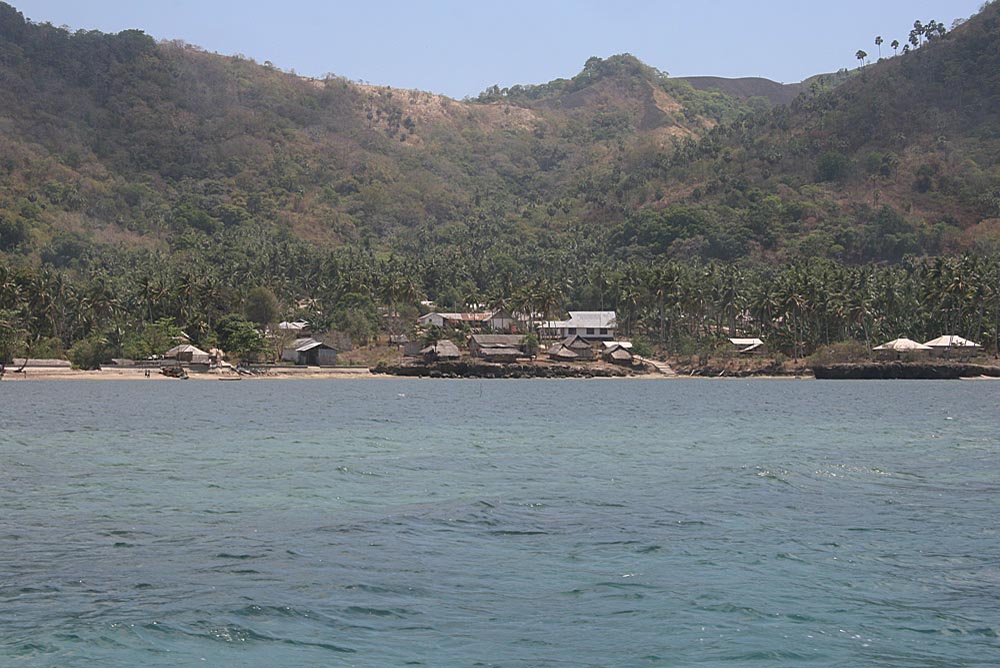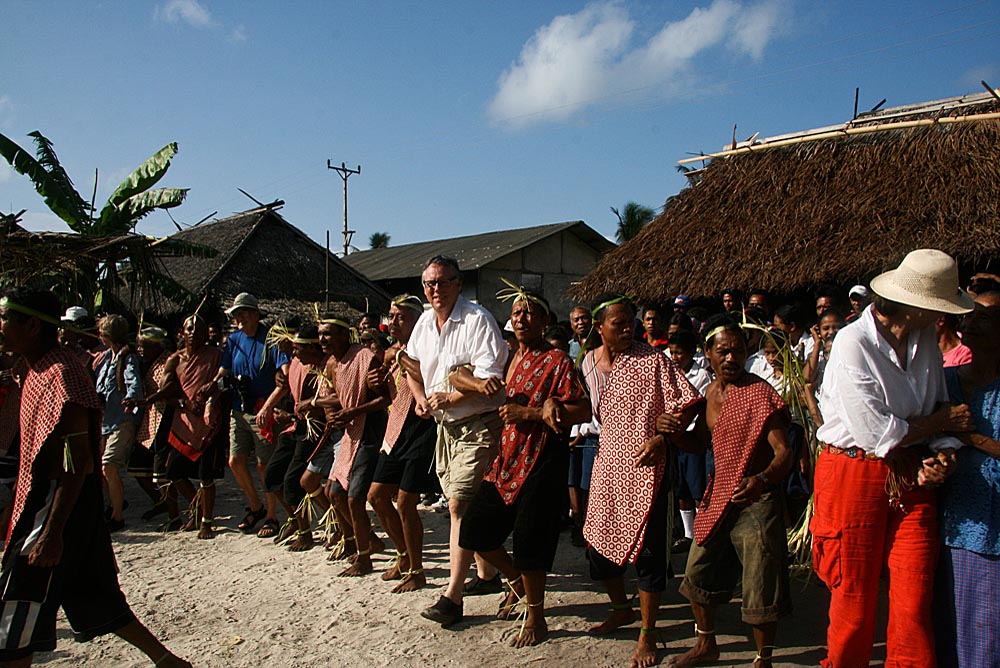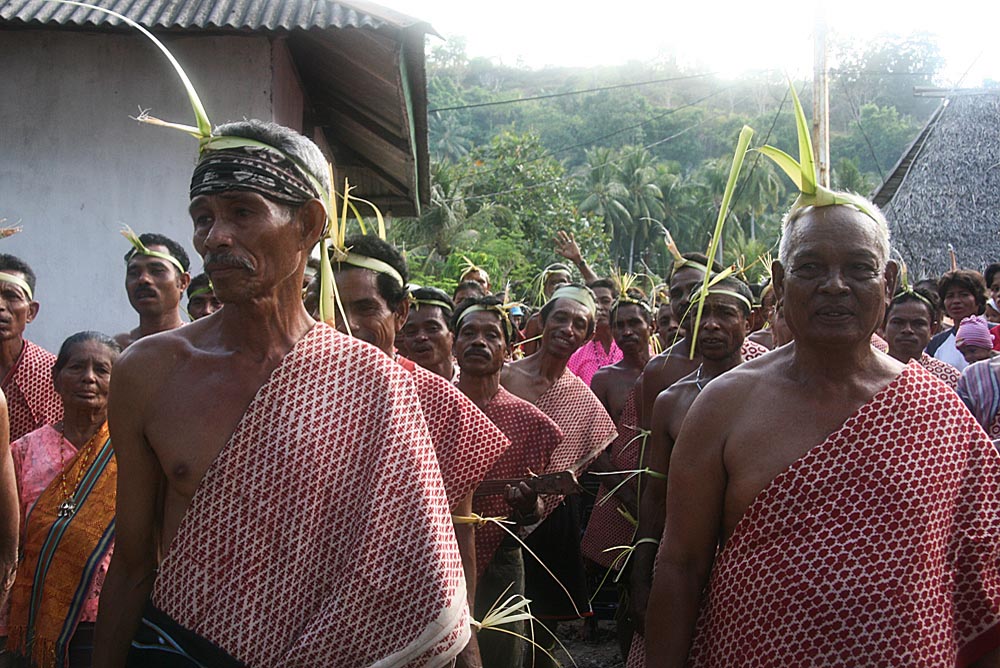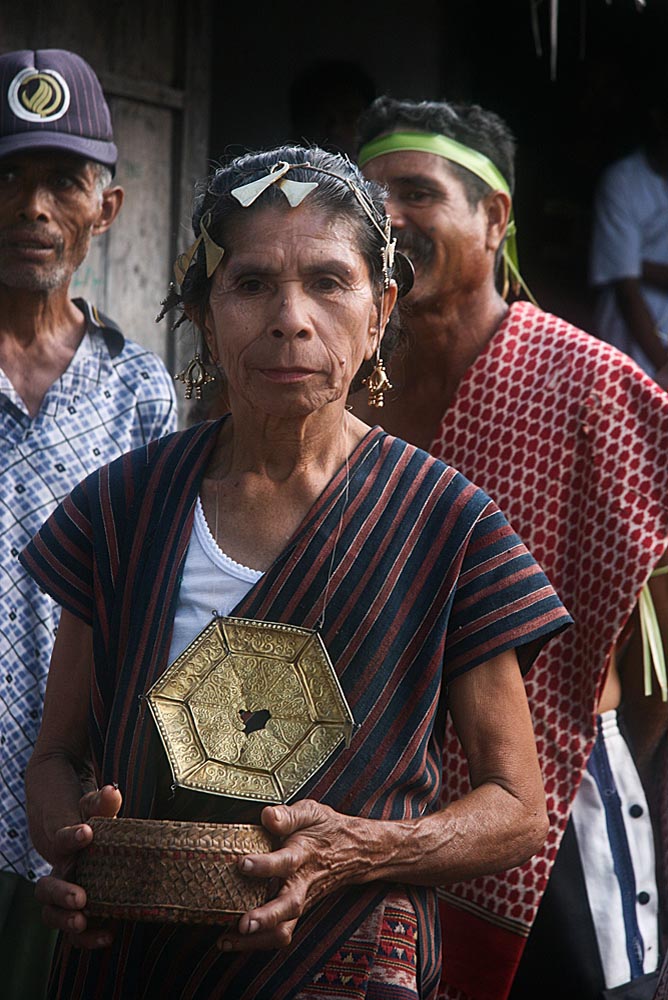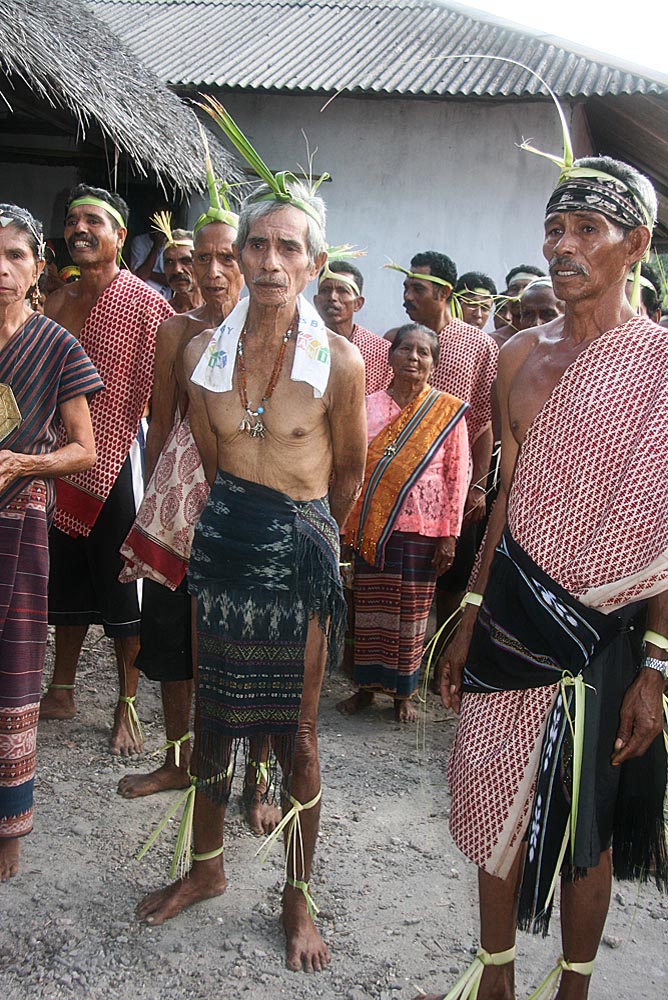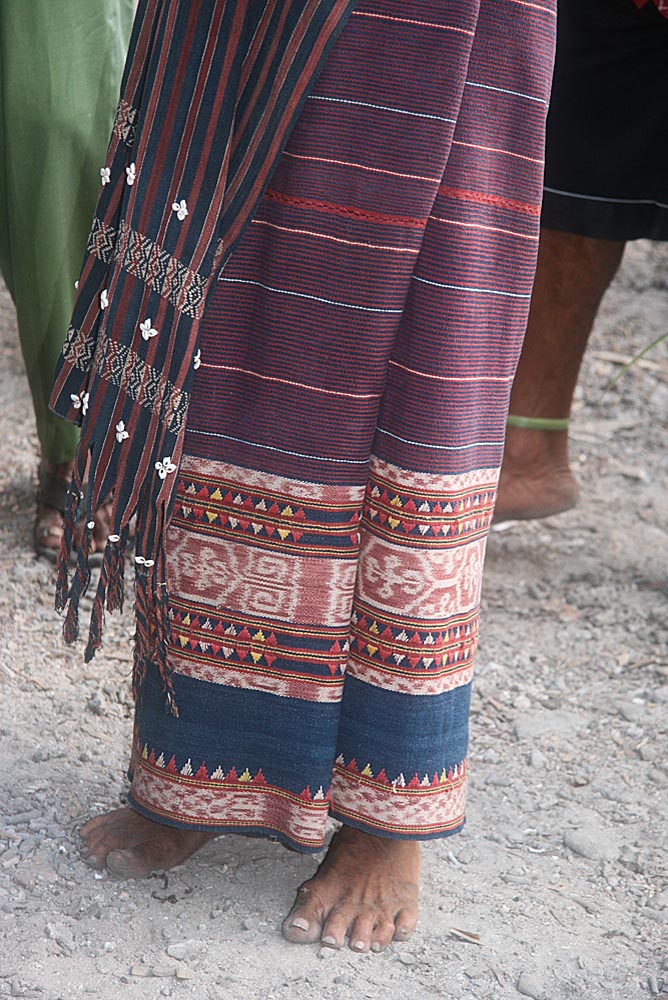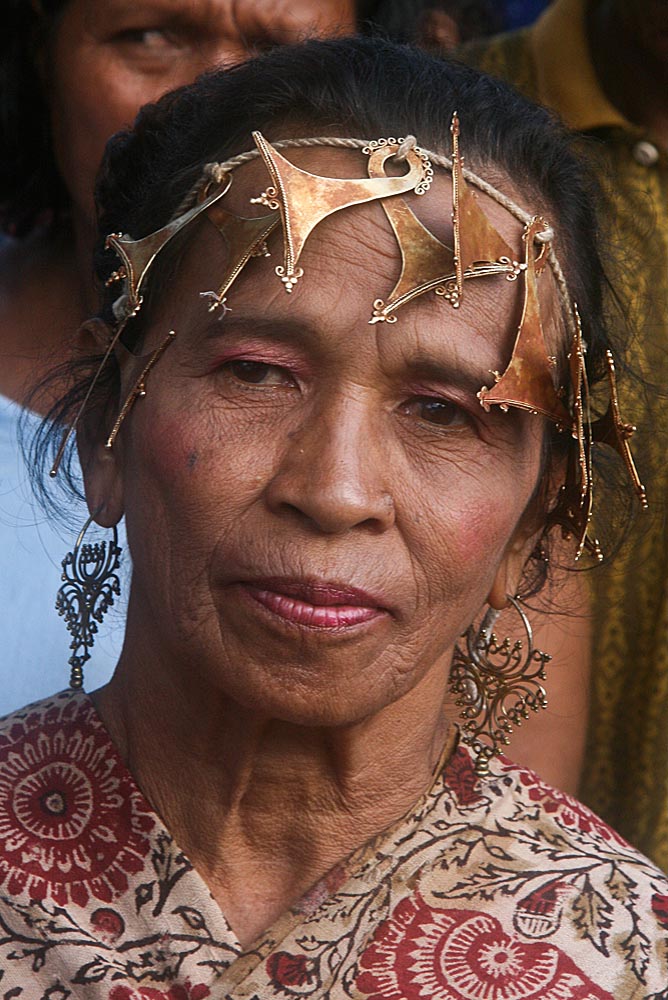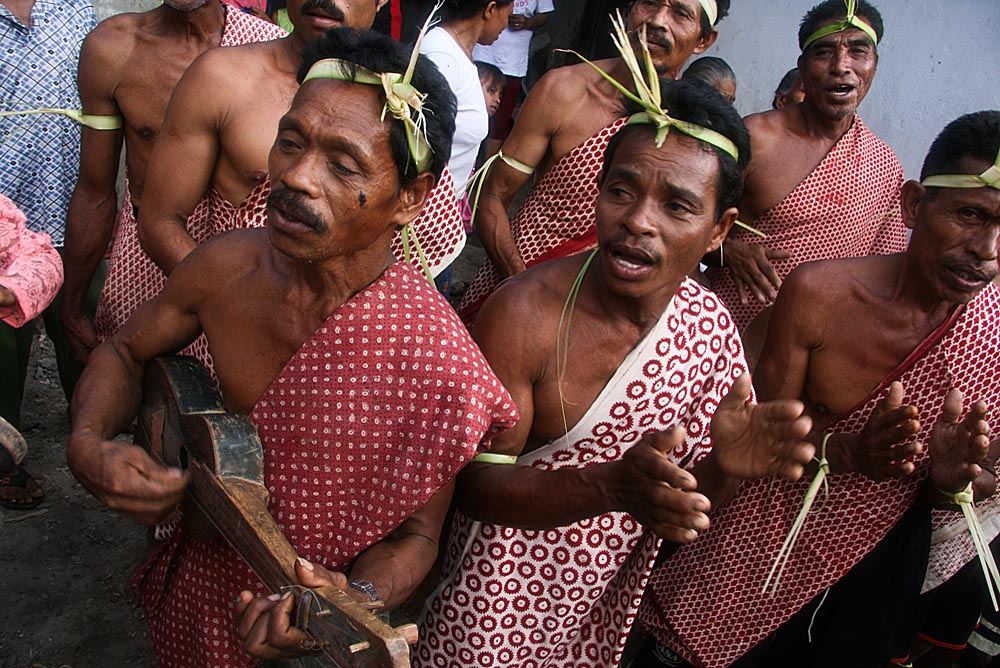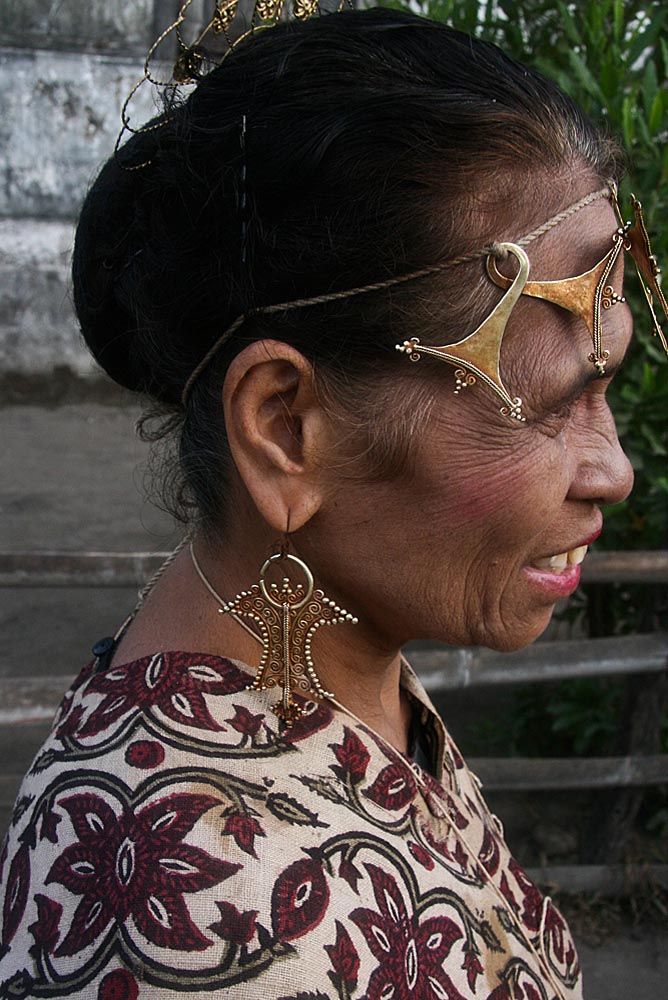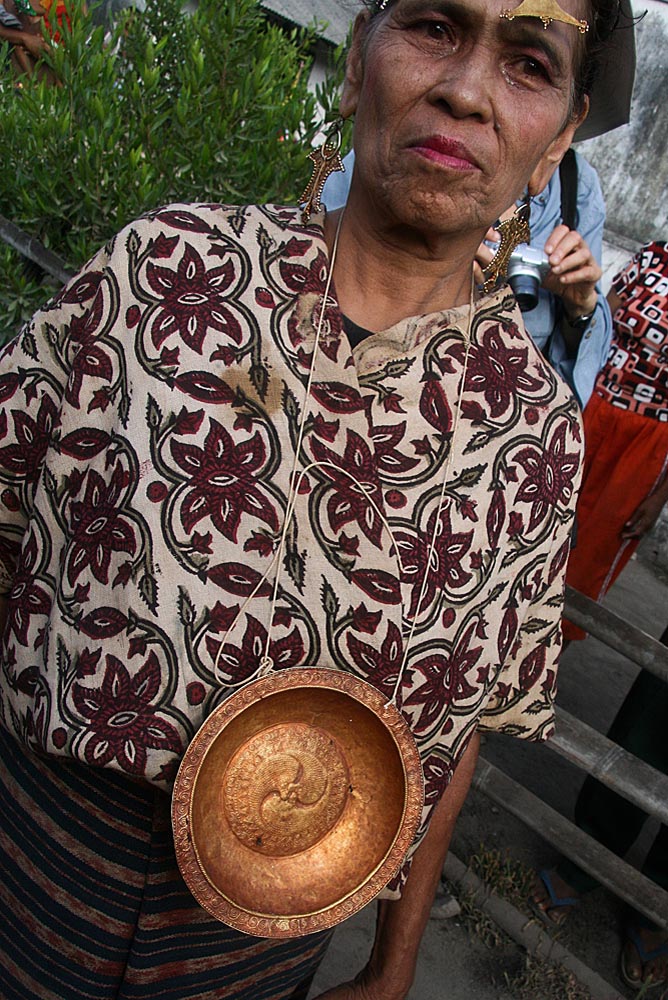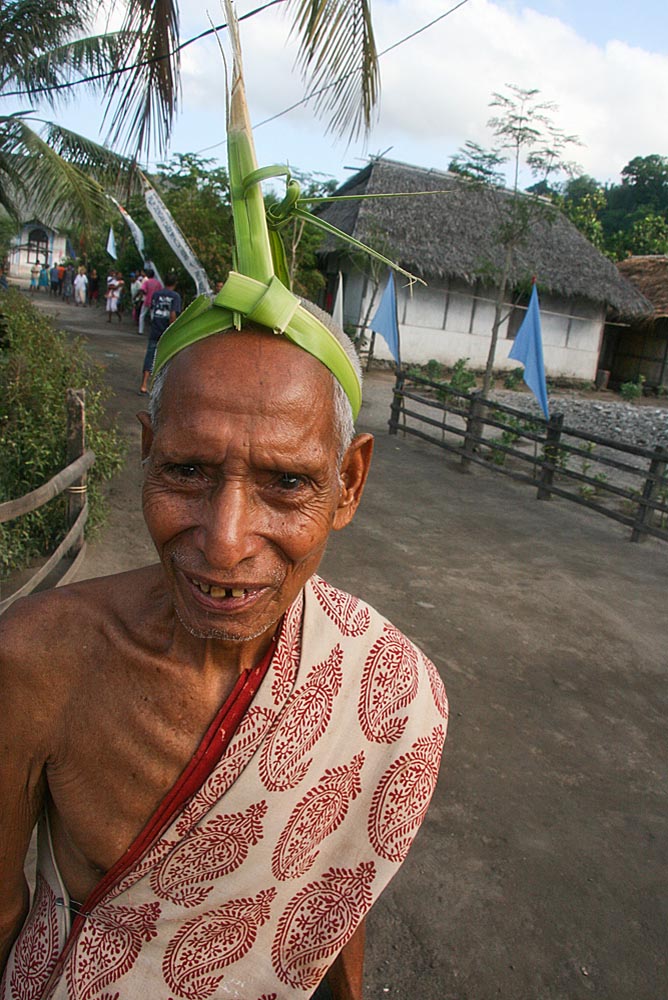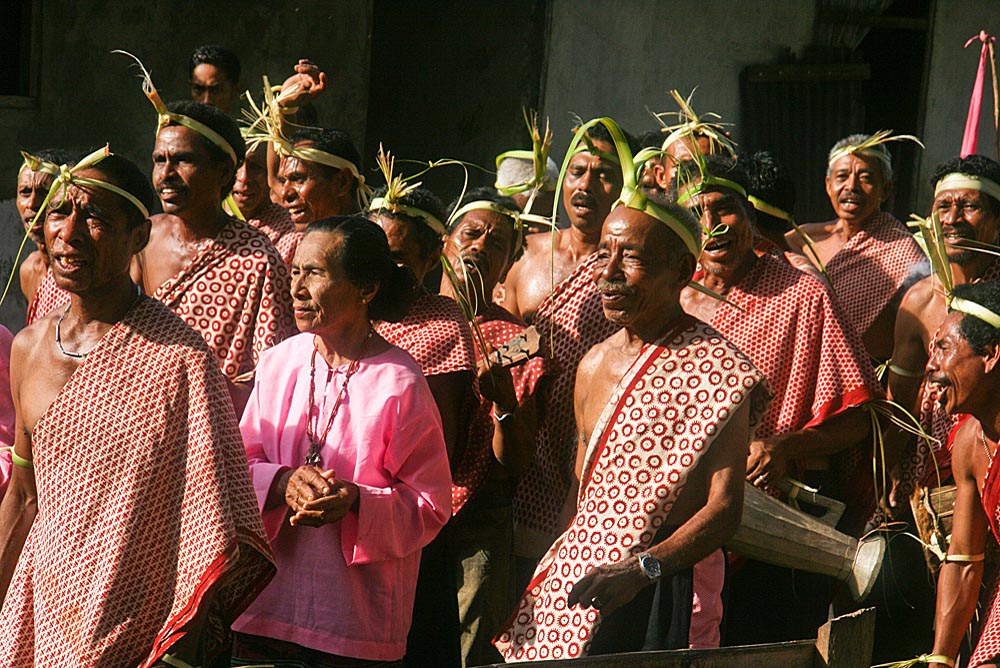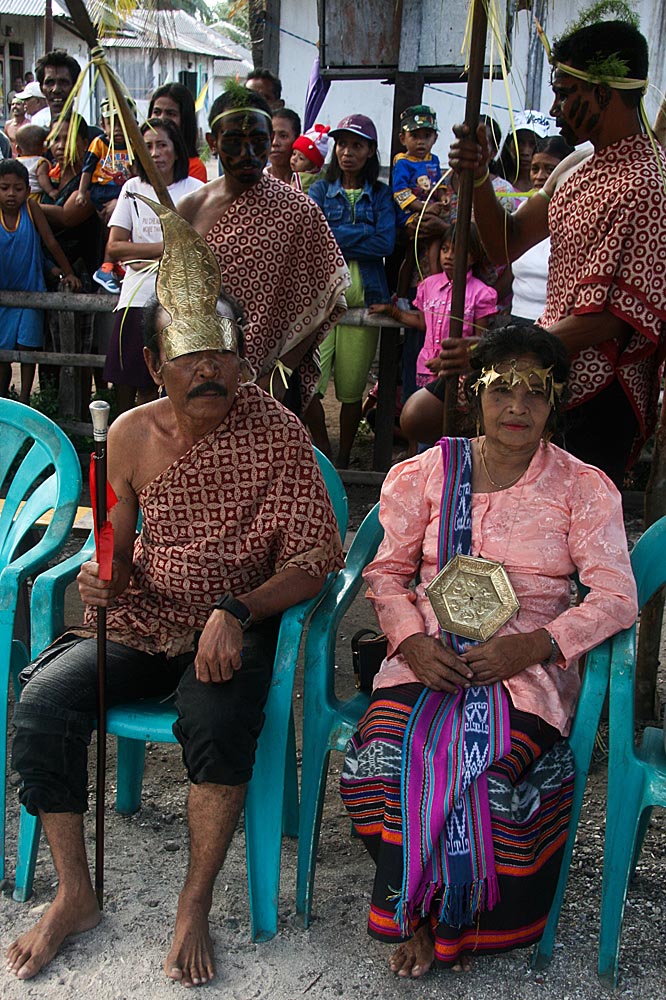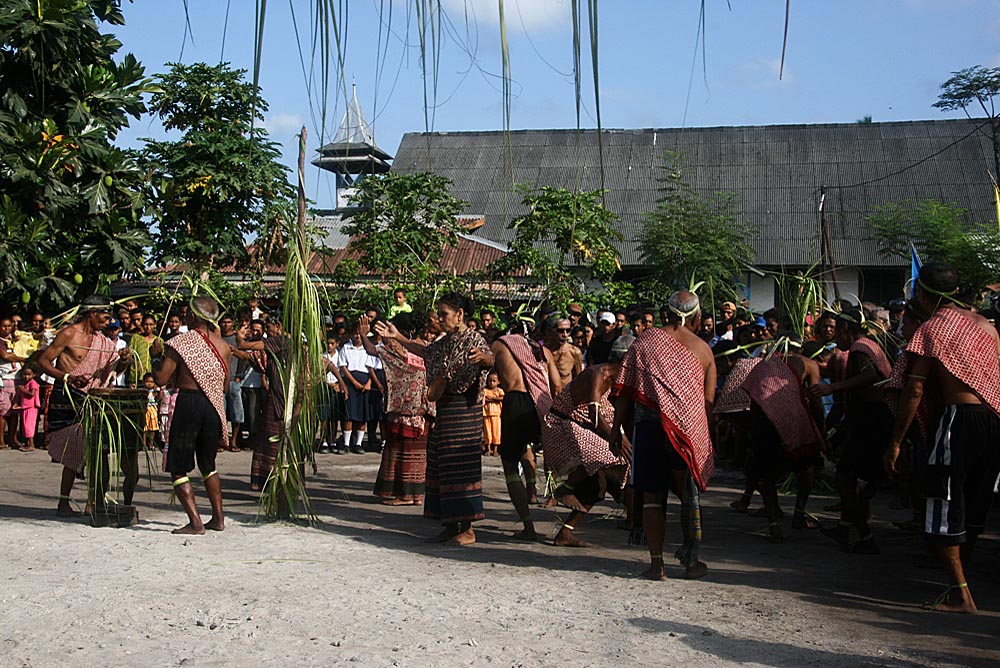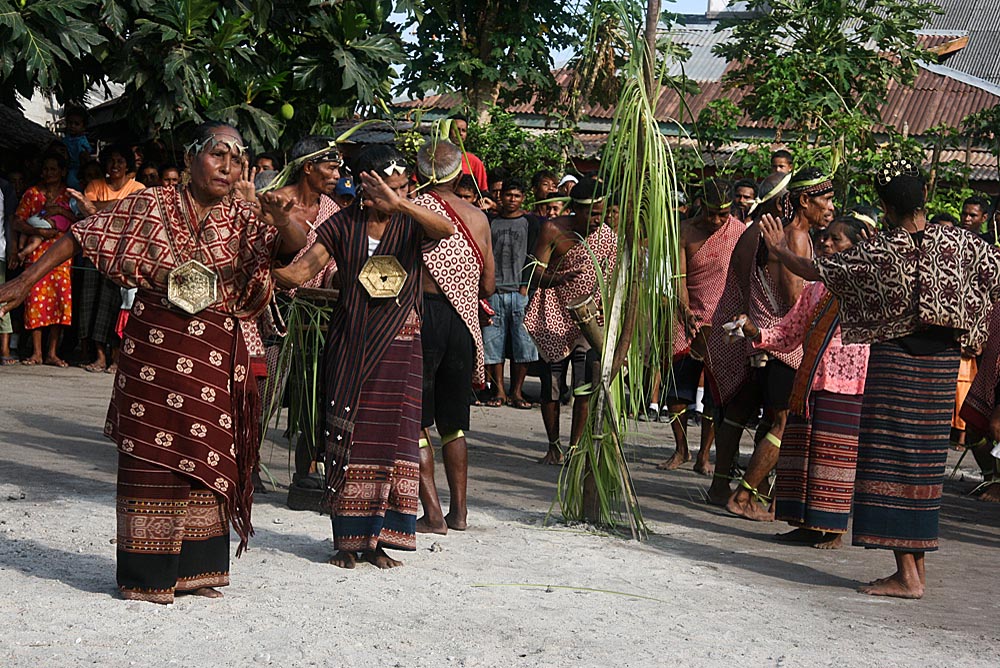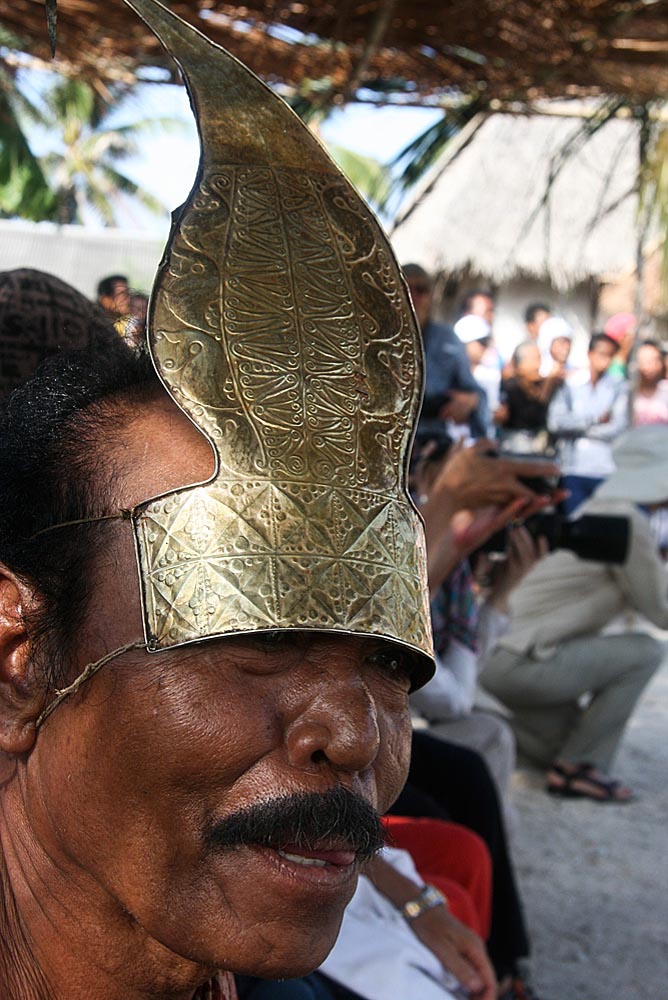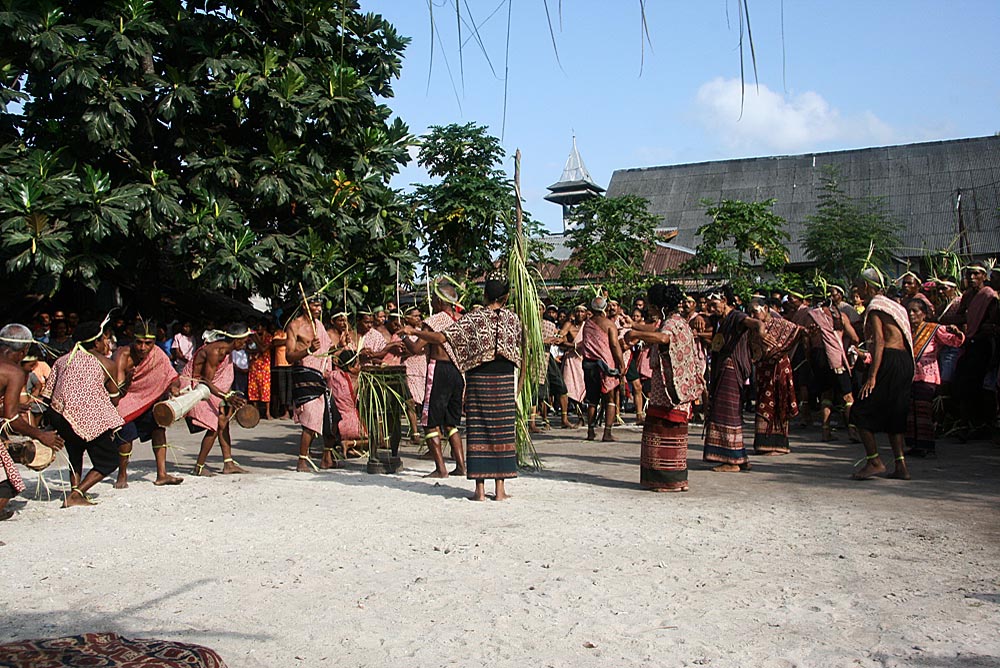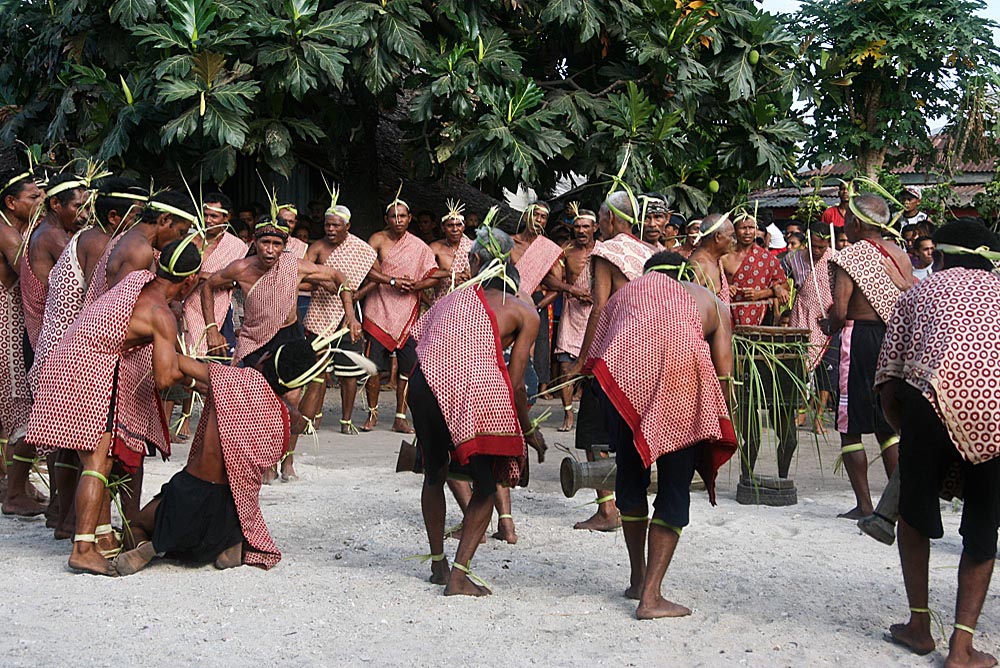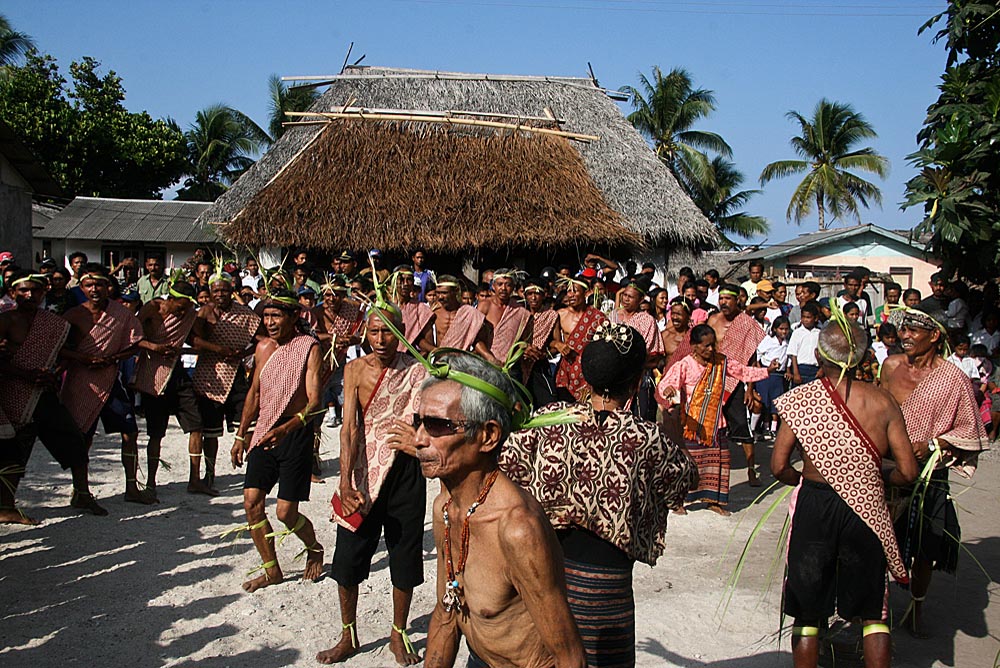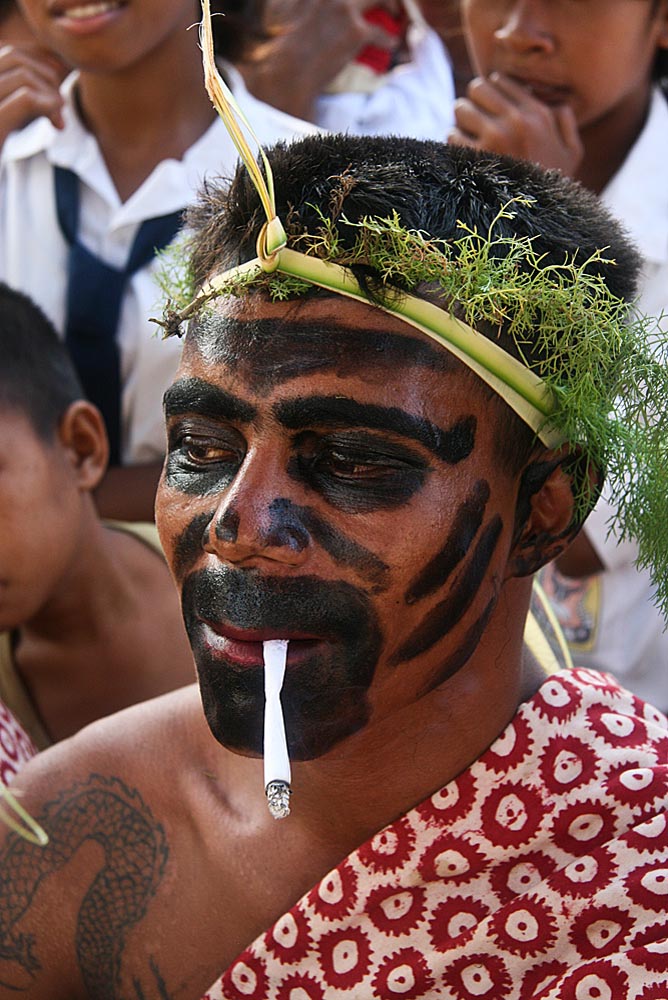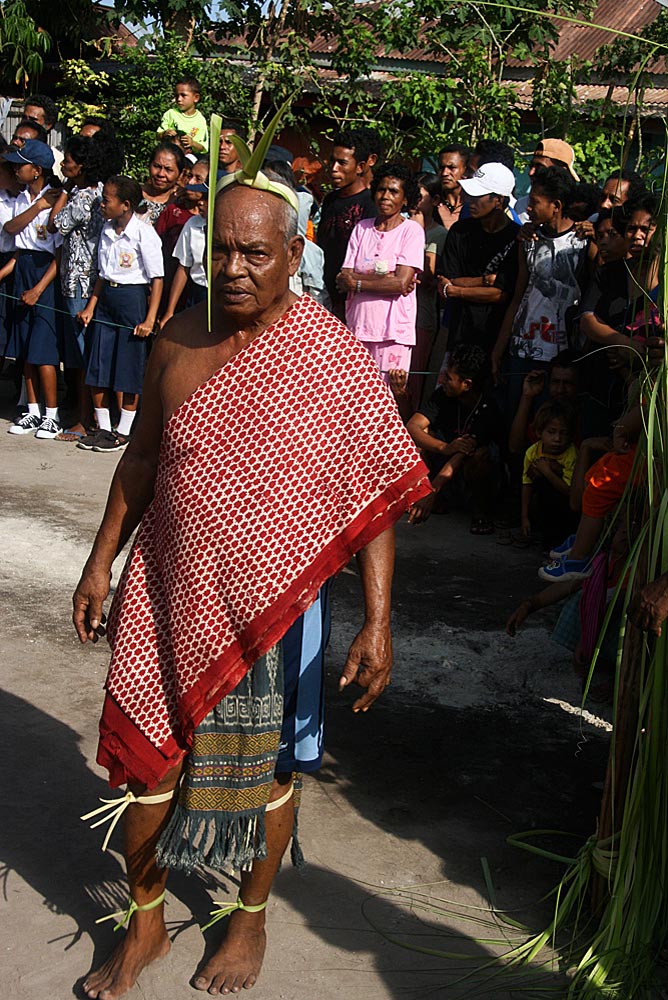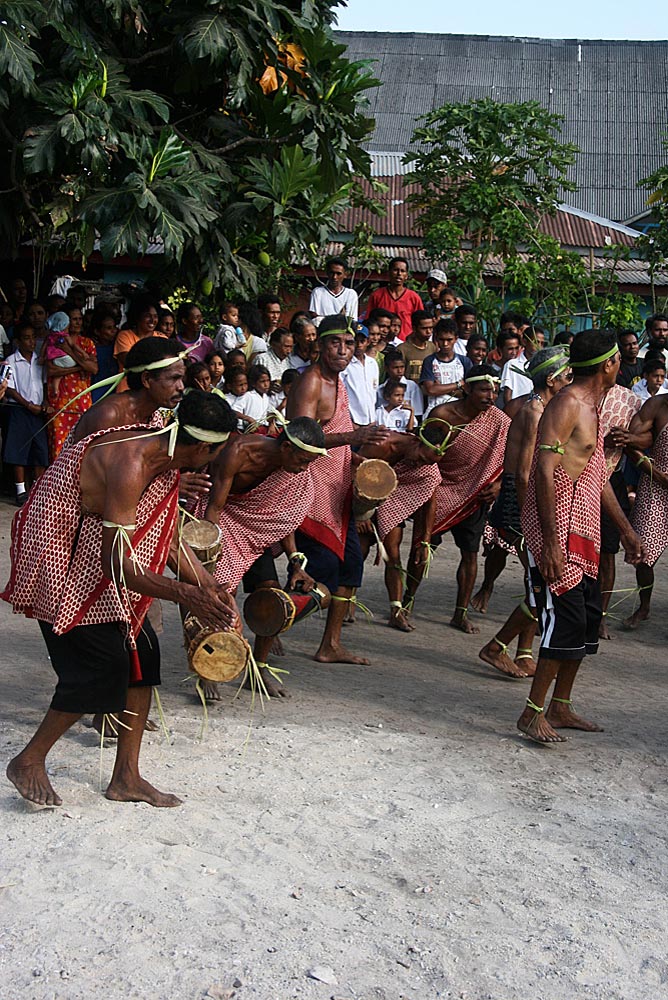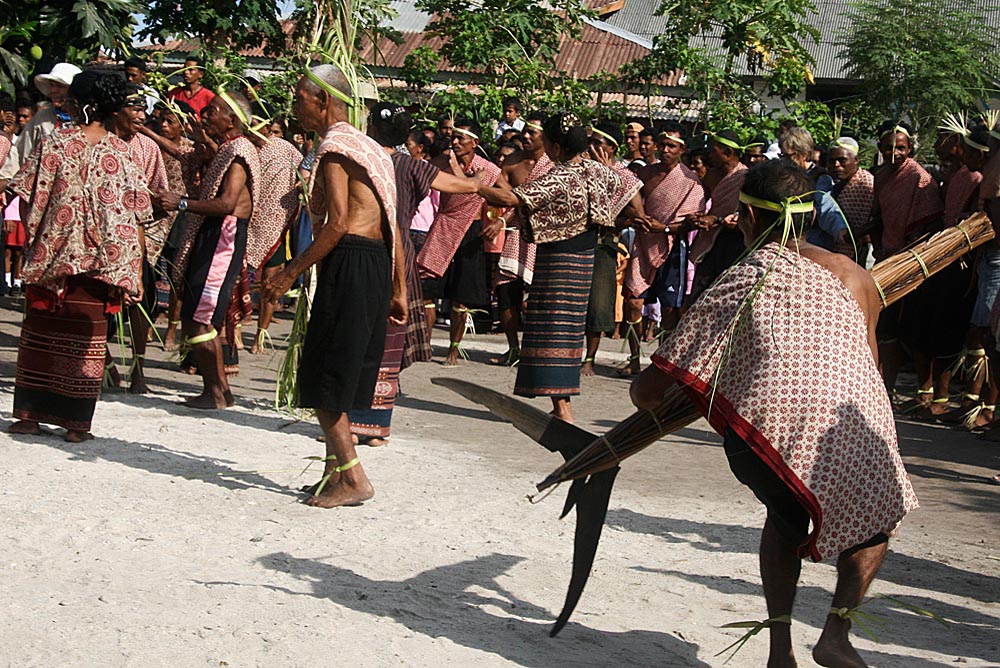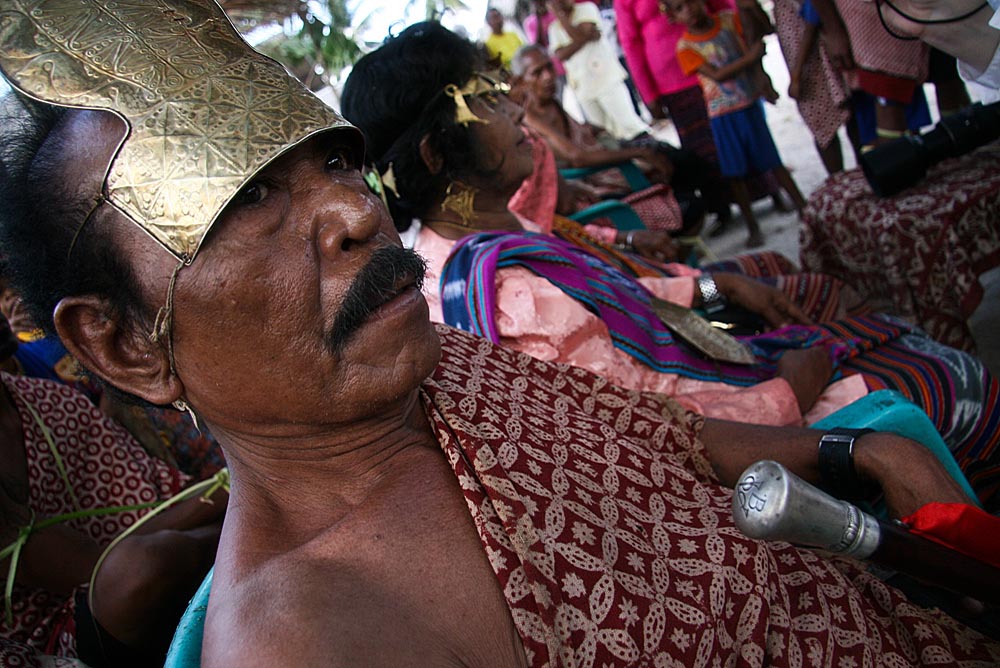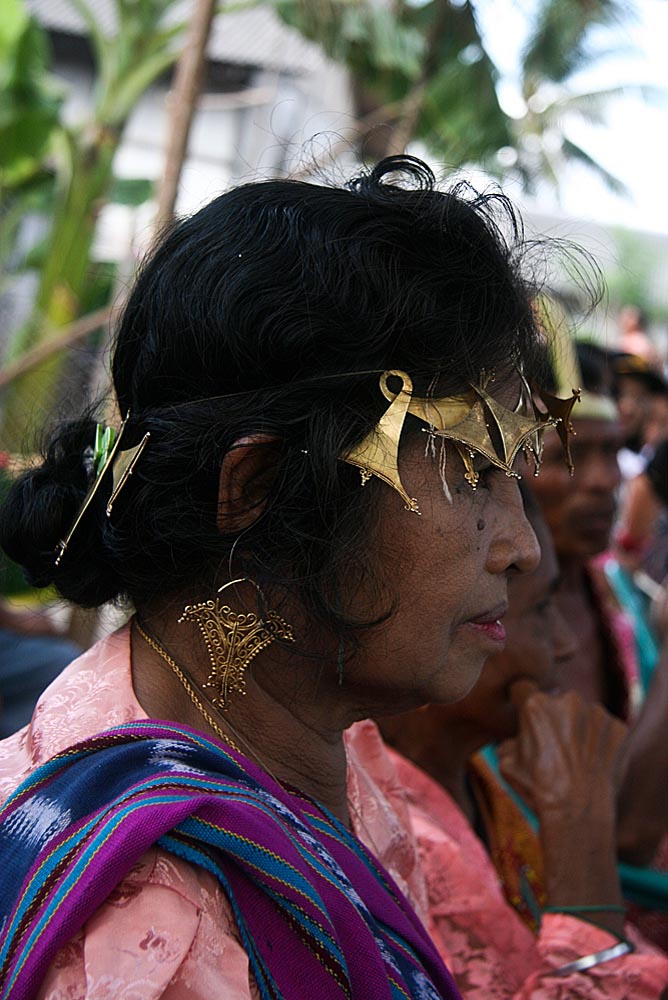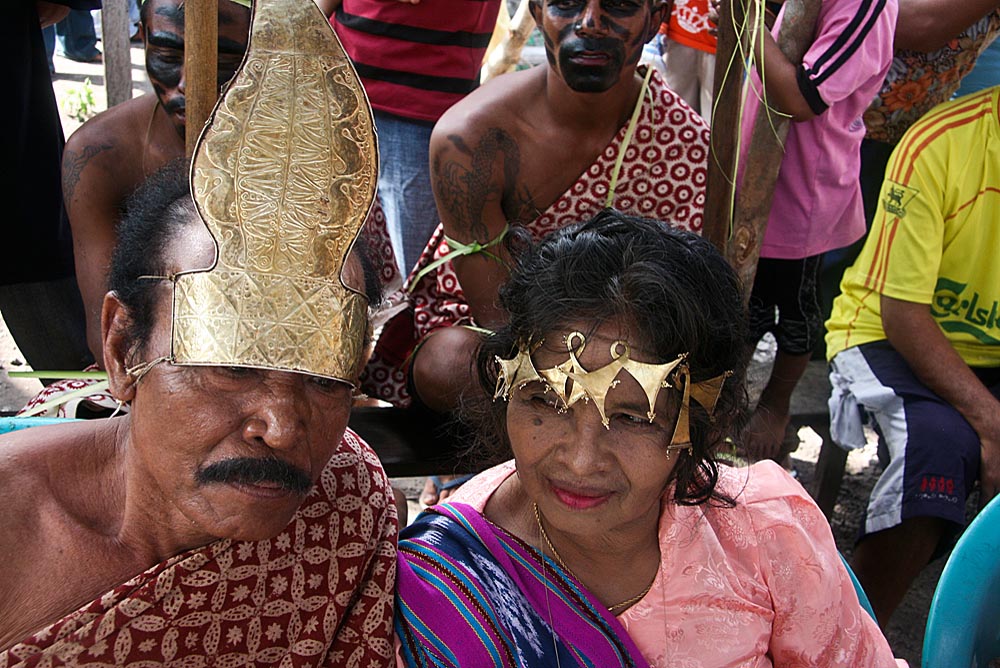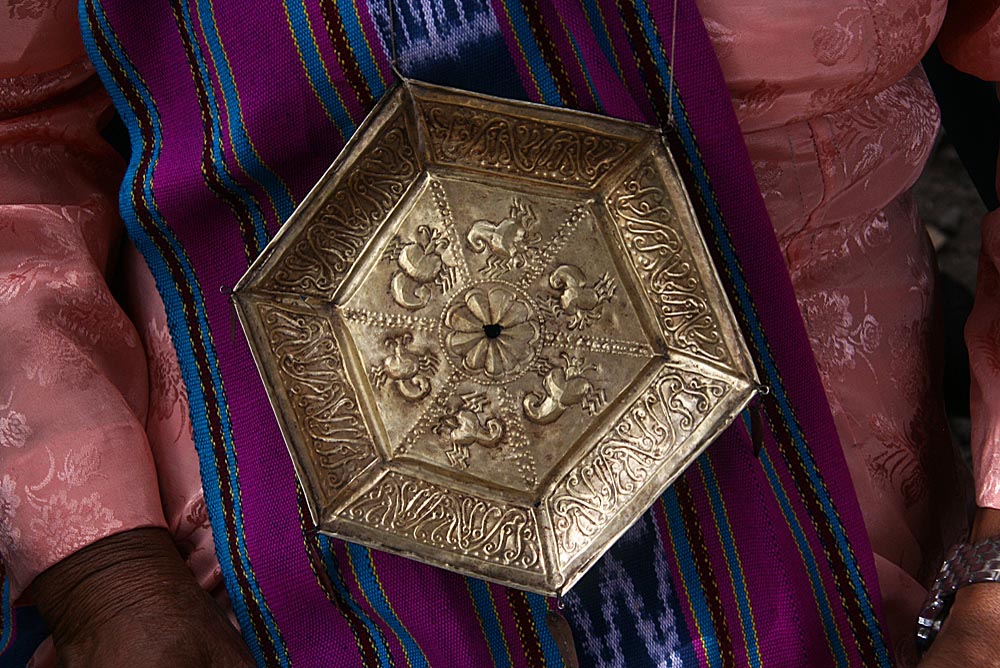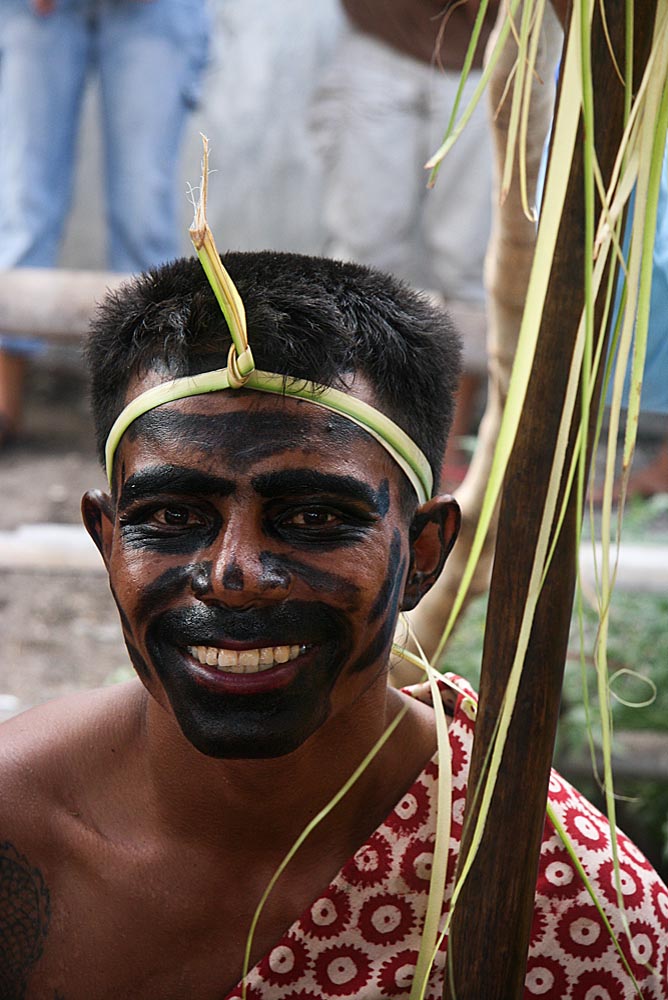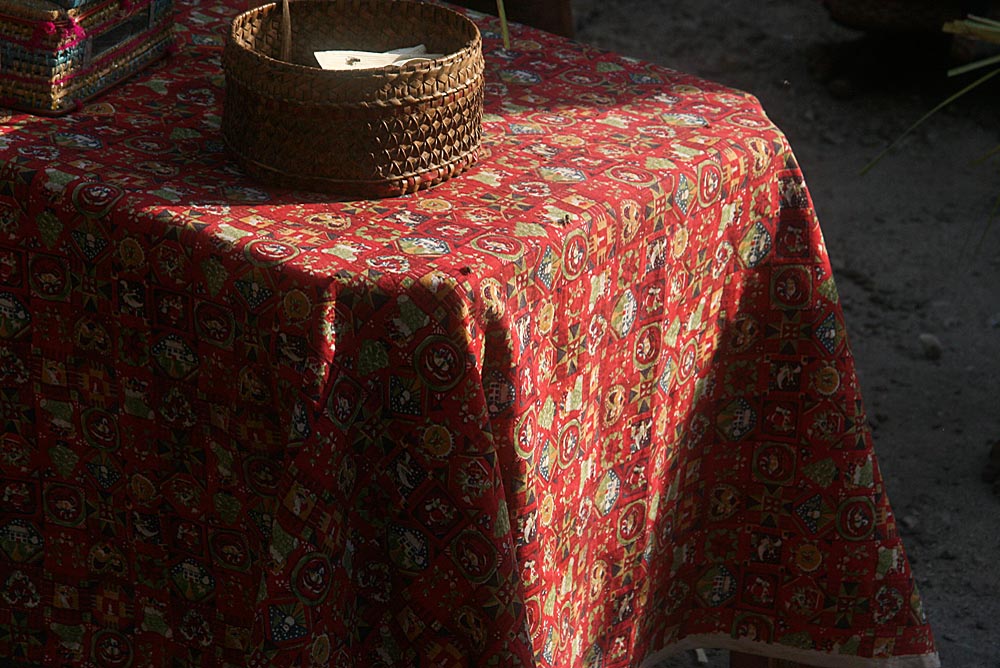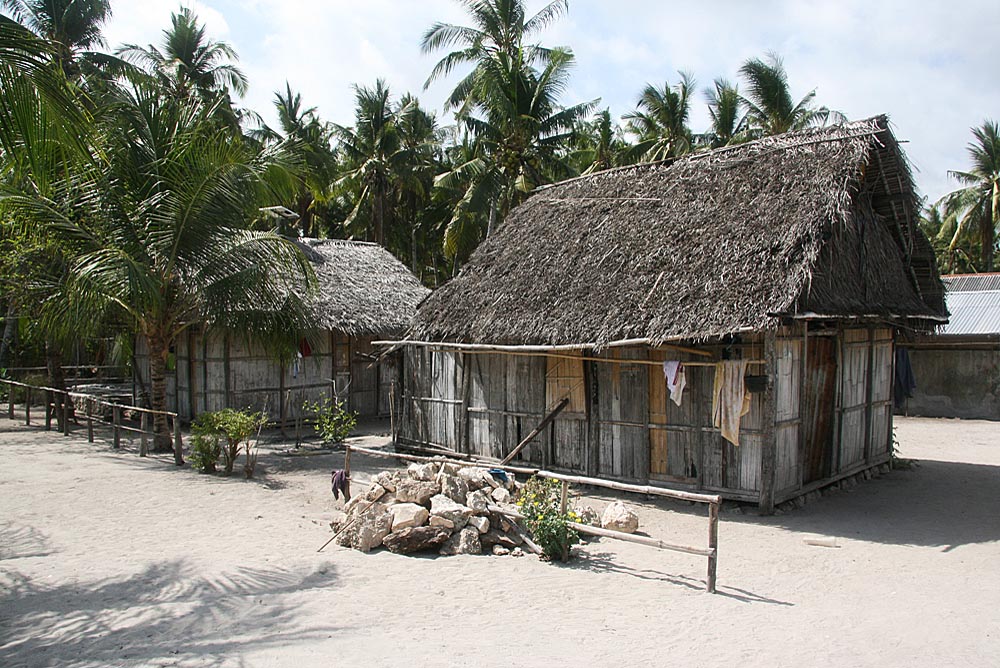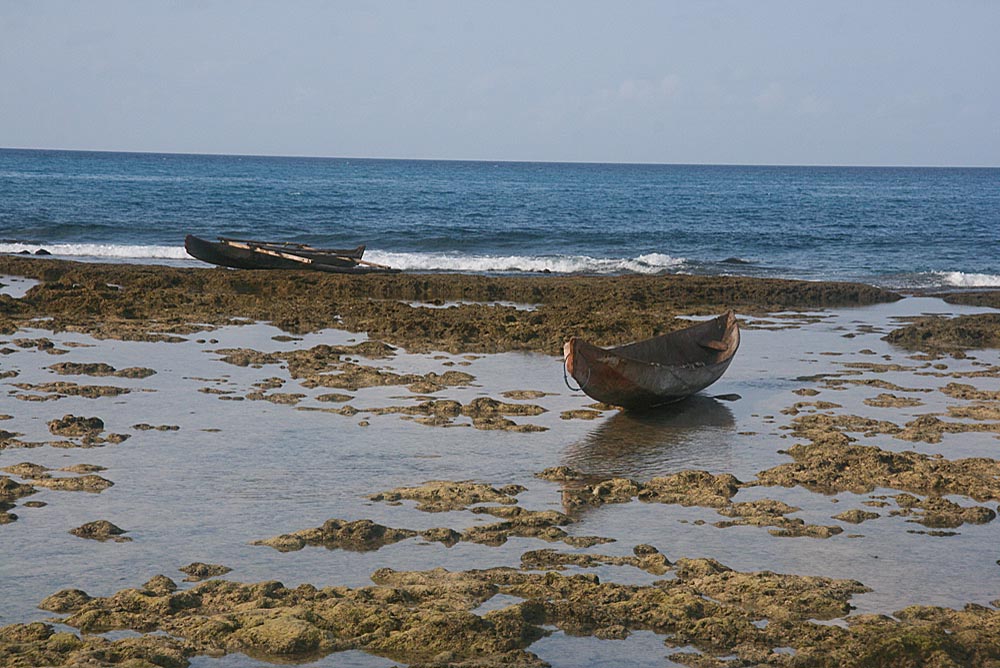Spice Islands Voyage
2009 trip to the Maluku Islands of Indonesia
Islands: Flores, Lembata, Timor, Kisar, Sermeta, Babar, Kei, Aru and Asmat
If a picture is worth a thousand words then these images add up to much more than I can possibly write. This was a dream trip that I had procrastinated for decades to begin but could not put off any longer after receiving the encouragement of two old friends, the Asmat travel expert Phyllis Hischier and Bruce Carpenter, Indonesian culture authority in residence. When I heard that Dirk Smidt, former chief curator of the Leiden Museum, Netherlands and an old PNG “hand” was coming, I was doubly intrigued. I signed up for what would be a life-changing and life-affirming journey by sea through the Spice Islands.
The vessel was out of Australia with a mixed crew and a great chef. We often ate the fish we caught on poles that day. I won’t soon forget the fresh sushi we shared and when I say fresh I mean it as seldom known before. By night we traveled from point to point, waking up to a whole new place of adventure. This was my first cruise and it was very appealing, thanks to the fact that we had some exceptionally intelligent and good-hearted shipmates on board. And travelers they were indeed, with me having gone to the fewest number of countries of all present, and I am up to more than sixty. I can assure you it does not happen often that I am out traveled…
Most of the islands we hit between our jumping off place on Flores (east of Bali, several islands) and West Papua, some thousand kilometers away, were approachable only by sea. Thus, they could hardly be described as ruined by tourism, so seldom did they see a boat come by. The local people always greeted us with a dance on the beach or in the village. Such performances were demanded by adat, the customary law that regulates their lives and which is very related throughout the Moluccas and yet every island was different in interesting and unique ways. Some were very traditional, pagan and magical, while on others the missionaries had done their work well but all that is required is to be sensitive to the subtly of the all-pervading, ancient Austronesian Culture that is right below the surface, even among the most fervent of Protestants and Catholics.
The strongest and most satisfying tribal encounter for me was on Timor. I much admire Timor adat and the photos will tell it all. Babar was another favorite followed by Kisar in terms of strength of traditional culture. On Aru we visited a village on the edge of the sea to buy mud crabs for dinner that had never seen a white person, whereas Kai Island was very Christianized despite being so remote, and very welcoming. Exceptionally nice people all!
To be honest, I went on the trip so that I might better know Indonesia, the land of my dreams, to fill in gaps in my travels. I did not have high hopes for the Asmat part of the trip but was I in for a surprise!
I knew this “wasn’t Kansas anymore” with our visit to the Catholic Church in Sawa that was filled with Asmat symbolism and a Corpus Cristi that was nothing less than a masterpiece of tribal sculpture. The priest had made it is life’s work to help preserve traditional Asmat culture and protect the villagers from outside exploitation.
Although some degree of cultural assimilation to the modern world could be seen in the men’s tee shirts, there can be no question the far up river, the tribal people Phyllis arranged for us to meet and the Jiwi ceremony we took part in was in no way compromised either by our presence or by the efforts of the missionaries downstream. What we saw was only part of the Doroe ceremony that lasts months, performed with the men of a secret society wearing full body suit “masks” in which they become the spirits that will drive the ghosts of the dead from the village. In this way, they help to maintain harmony and balance with the ancestors, the spirit world and the rest of the living!
Hanging out in the men’s house crowded with brown bodies in the dark, lit only by a fire and some light coming through cracks in the grass walls, I recall the pungent odor of sweat in the air, our collective eating barbequed sago dough and after the chewing betel nut. It was then I passed around an apple, the first they had ever seen. The men smelled it and passed it on and finally it returned to me and I bit into it and they were shocked that it could be eaten and then I passed it again, this time encouraging them to try it…this was well received and found to be enak, “delicious!” I was one of the only white people they had met who could communicate with them in my passable Indonesian, and for this they were pleased. This helped me to serve as interpreter for Dirk Smidt to buy artifacts for his museum in Holland, respectfully bargaining while at the same time trying to record the way the object was used and the symbolic meaning of its graphic designs; well, this was some kind of personal best for me as an adventurer, hanging as I was with the people whose relatives are said to have eaten poor Michael Rockefeller, of this journey I will never forget!
We went from far up river to the big town of Agats for an auction that rewards native carvers for new styles of artistic expression. After seeing what they are doing, I can recommend that they go back to their traditional art. But ironically since classical Asmat carving is so religious in nature, making adat figures for the market breaks down certain taboos and therefore it seemed to the Catholic priest a good thing they keep customary art work “private” and promote the tourist carvings to stop the erosion of culture… While I feel that to be a worthy goal, the new material is not my cup of tea! But my trip through the Spice Islands to visit the Asmat was!
I close with this quote by Michael Rockefeller from 1961:
“It’s the desire to do something adventurous,” he explained, “at a time when frontiers, in the real sense of the word, are disappearing.”


